Sirtuin modulators as inhibitors of cytomegalovirus
Shenk , et al. October 27, 2
U.S. patent number 10,813,934 [Application Number 15/187,269] was granted by the patent office on 2020-10-27 for sirtuin modulators as inhibitors of cytomegalovirus. This patent grant is currently assigned to THE TRUSTEES OF PRINCETON UNIVERSITY. The grantee listed for this patent is The Trustees of Princeton University. Invention is credited to Ileana M. Cristea, Emre Koyuncu, Thomas Shenk.


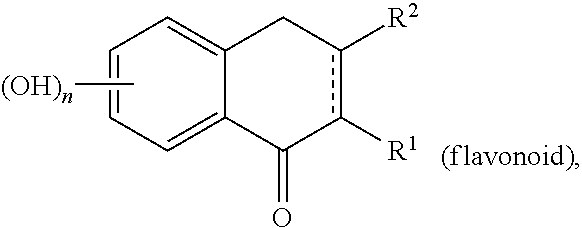
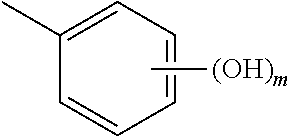
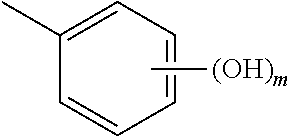
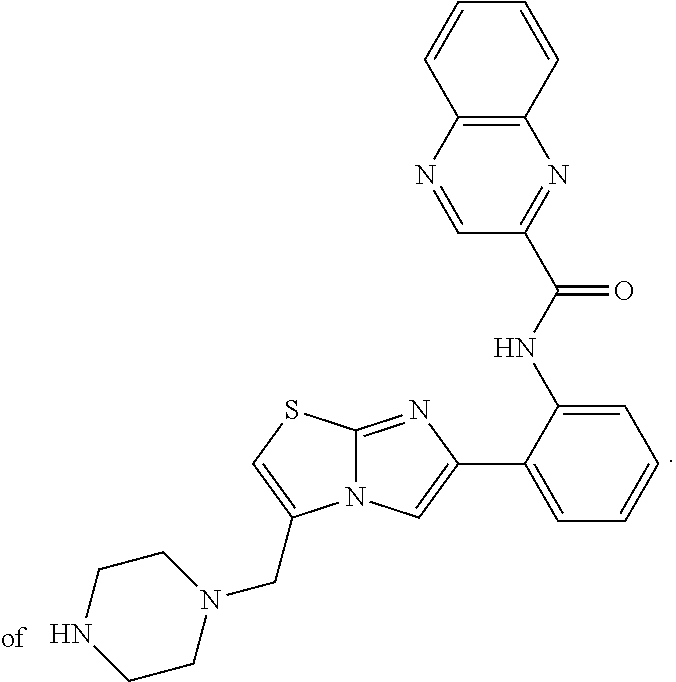
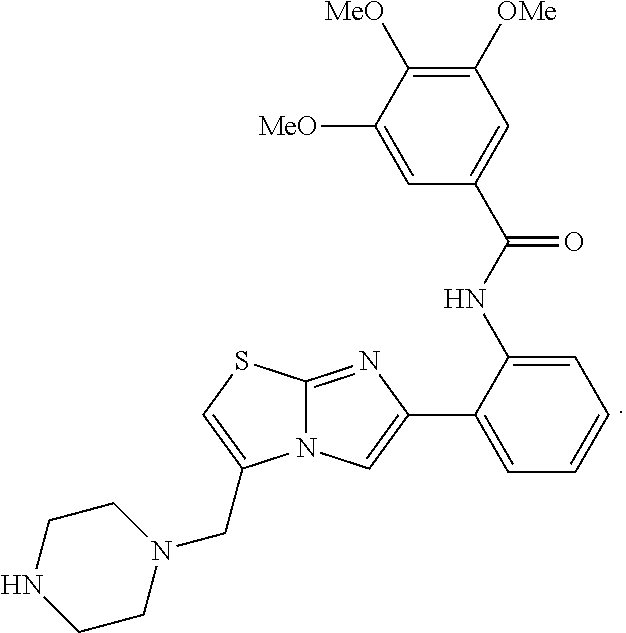
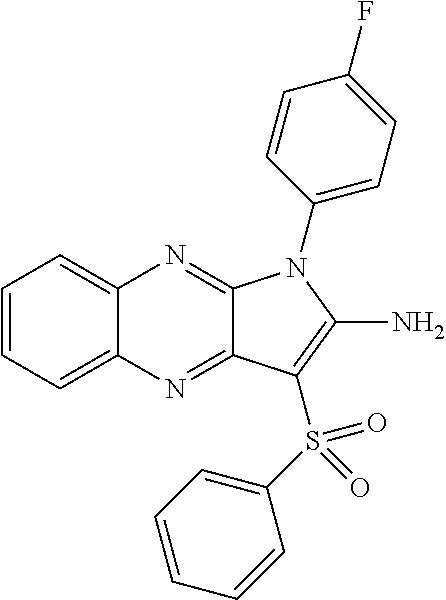
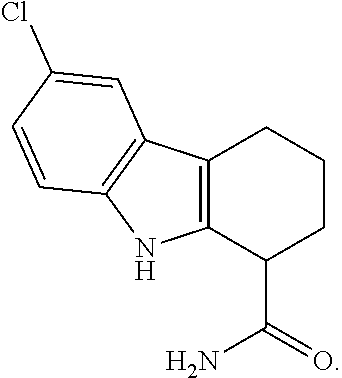


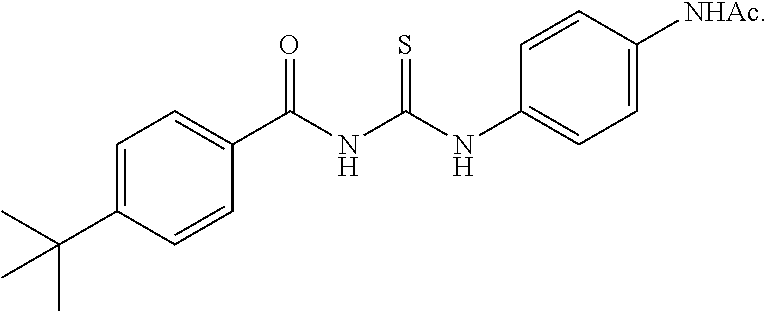
View All Diagrams
| United States Patent | 10,813,934 |
| Shenk , et al. | October 27, 2020 |
Sirtuin modulators as inhibitors of cytomegalovirus
Abstract
Agents and methods of inhibiting or improving the growth of viruses are provided.
| Inventors: | Shenk; Thomas (Princeton, NJ), Koyuncu; Emre (Princeton, NJ), Cristea; Ileana M. (Princeton, NJ) | ||||||||||
|---|---|---|---|---|---|---|---|---|---|---|---|
| Applicant: |
|
||||||||||
| Assignee: | THE TRUSTEES OF PRINCETON
UNIVERSITY (Princeton, NJ) |
||||||||||
| Family ID: | 1000005139850 | ||||||||||
| Appl. No.: | 15/187,269 | ||||||||||
| Filed: | June 20, 2016 |
Prior Publication Data
| Document Identifier | Publication Date | |
|---|---|---|
| US 20160296523 A1 | Oct 13, 2016 | |
Related U.S. Patent Documents
| Application Number | Filing Date | Patent Number | Issue Date | ||
|---|---|---|---|---|---|
| 13982779 | |||||
| PCT/US2012/023621 | Feb 2, 2012 | ||||
| 61438846 | Feb 2, 2011 | ||||
| 61527102 | Aug 24, 2011 | ||||
| Current U.S. Class: | 1/1 |
| Current CPC Class: | A61K 31/17 (20130101); A61K 31/513 (20130101); A61K 31/366 (20130101); A61K 31/404 (20130101); A61K 31/496 (20130101); A61K 31/498 (20130101); A61K 31/167 (20130101); A61K 45/06 (20130101); A61K 31/40 (20130101); A61K 2300/00 (20130101) |
| Current International Class: | A61K 31/40 (20060101); A61K 31/513 (20060101); A61K 31/167 (20060101); A61K 31/47 (20060101); A61K 31/497 (20060101); A61K 31/12 (20060101); A61K 31/35 (20060101); A61K 31/17 (20060101); A61K 31/404 (20060101); A61K 45/06 (20060101); A61K 31/366 (20060101); A61K 31/496 (20060101); A61K 31/498 (20060101) |
| Field of Search: | ;514/619 |
References Cited [Referenced By]
U.S. Patent Documents
| 3687808 | August 1972 | Merigan et al. |
| 4469863 | September 1984 | Ts'o et al. |
| 4476301 | October 1984 | Imbach et al. |
| 4845205 | July 1989 | Huynh Dinh et al. |
| 4981957 | January 1991 | Lebleu et al. |
| 5013830 | May 1991 | Ohtsuka et al. |
| 5023243 | June 1991 | Tullis |
| 5034506 | July 1991 | Summerton et al. |
| 5118800 | June 1992 | Smith et al. |
| 5130302 | July 1992 | Spielvogel et al. |
| 5134066 | July 1992 | Rogers et al. |
| 5149797 | September 1992 | Pederson et al. |
| 5166315 | November 1992 | Summerton et al. |
| 5175273 | December 1992 | Bischofberger et al. |
| 5177196 | January 1993 | Meyer, Jr. et al. |
| 5185444 | February 1993 | Summerton et al. |
| 5188897 | February 1993 | Suhadolnik et al. |
| 5194599 | March 1993 | Froehler et al. |
| 5214134 | May 1993 | Weis et al. |
| 5216141 | June 1993 | Benner |
| 5220007 | June 1993 | Pederson et al. |
| 5235033 | August 1993 | Summerton et al. |
| 5256775 | October 1993 | Froehler |
| 5264423 | November 1993 | Cohen et al. |
| 5264562 | November 1993 | Matteucci |
| 5264564 | November 1993 | Matteucci |
| 5276019 | January 1994 | Cohen et al. |
| 5278302 | January 1994 | Caruthers et al. |
| 5286717 | February 1994 | Cohen et al. |
| 5319080 | June 1994 | Leumann |
| 5321131 | June 1994 | Agrawal et al. |
| 5359044 | October 1994 | Cook et al. |
| 5366878 | November 1994 | Pederson et al. |
| 5367066 | November 1994 | Urdea et al. |
| 5393878 | February 1995 | Leumann |
| 5399676 | March 1995 | Froehler |
| 5403711 | April 1995 | Walder et al. |
| 5405938 | April 1995 | Summerton et al. |
| 5405939 | April 1995 | Suhadolnik et al. |
| 5432272 | July 1995 | Benner |
| 5434257 | July 1995 | Matteucci et al. |
| 5446137 | August 1995 | Maag et al. |
| 5453496 | September 1995 | Caruthers et al. |
| 5455233 | October 1995 | Spielvogel et al. |
| 5457187 | October 1995 | Gmeiner et al. |
| 5459255 | October 1995 | Cook et al. |
| 5466677 | November 1995 | Baxter et al. |
| 5466786 | November 1995 | Buhr et al. |
| 5470967 | November 1995 | Huie et al. |
| 5476925 | December 1995 | Letsinger et al. |
| 5484908 | January 1996 | Froehler et al. |
| 5489677 | February 1996 | Sanghvi et al. |
| 5491133 | February 1996 | Walder et al. |
| 5502177 | March 1996 | Matteucci et al. |
| 5514785 | May 1996 | Van Ness et al. |
| 5519126 | May 1996 | Hecht |
| 5519134 | May 1996 | Acevedo et al. |
| 5525711 | June 1996 | Hawkins et al. |
| 5527899 | June 1996 | Froehler |
| 5536821 | July 1996 | Agrawal et al. |
| 5539082 | July 1996 | Nielsen et al. |
| 5541306 | July 1996 | Agrawal et al. |
| 5541307 | July 1996 | Cook et al. |
| 5550111 | August 1996 | Suhadolnik et al. |
| 5552540 | September 1996 | Haralambidis |
| 5561225 | October 1996 | Maddry et al. |
| 5563253 | October 1996 | Agrawal et al. |
| 5565350 | October 1996 | Kmiec |
| 5565555 | October 1996 | Froehler et al. |
| 5567811 | October 1996 | Misiura et al. |
| 5571799 | November 1996 | Tkachuk et al. |
| 5576427 | November 1996 | Cook et al. |
| 5587361 | December 1996 | Cook et al. |
| 5587469 | December 1996 | Cook et al. |
| 5591722 | January 1997 | Montgomery et al. |
| 5594121 | January 1997 | Froehler et al. |
| 5596086 | January 1997 | Matteucci et al. |
| 5596091 | January 1997 | Switzer |
| 5597909 | January 1997 | Urdea et al. |
| 5602240 | February 1997 | De Mesmaeker et al. |
| 5608046 | March 1997 | Cook et al. |
| 5610289 | March 1997 | Cook et al. |
| 5610300 | March 1997 | Altmann et al. |
| 5614617 | March 1997 | Cook et al. |
| 5618704 | April 1997 | Sanghvi et al. |
| 5623065 | April 1997 | Cook et al. |
| 5623070 | April 1997 | Cook et al. |
| 5625050 | April 1997 | Beaton et al. |
| 5627053 | May 1997 | Usman et al. |
| 5633360 | May 1997 | Bischofberger et al. |
| 5639873 | June 1997 | Barascut et al. |
| 5645985 | July 1997 | Froehler et al. |
| 5646265 | July 1997 | McGee |
| 5646269 | July 1997 | Matteucci et al. |
| 5652355 | July 1997 | Metelev et al. |
| 5658873 | August 1997 | Bertsch-Frank et al. |
| 5663312 | September 1997 | Chaturvedula |
| 5670633 | September 1997 | Cook et al. |
| 5672697 | September 1997 | Buhr et al. |
| 5677437 | October 1997 | Teng et al. |
| 5677439 | October 1997 | Weis et al. |
| 5681941 | October 1997 | Cook et al. |
| 5700920 | December 1997 | Altmann et al. |
| 5700922 | December 1997 | Cook |
| 5714331 | February 1998 | Buchardt et al. |
| 5719262 | February 1998 | Buchardt et al. |
| 5721218 | February 1998 | Froehler |
| 5750692 | May 1998 | Cook et al. |
| 5763588 | June 1998 | Matteucci et al. |
| 5792608 | August 1998 | Swaminathan et al. |
| 5792747 | August 1998 | Schally et al. |
| 5830653 | November 1998 | Froehler et al. |
| 5898031 | April 1999 | Crooke |
| 5985848 | November 1999 | Furneaux et al. |
| 6005096 | December 1999 | Matteucci et al. |
| 6066722 | May 2000 | Furneaux et al. |
| 6107094 | August 2000 | Crooke |
| 6228847 | May 2001 | Furneaux et al. |
| 6492347 | December 2002 | Furneaux et al. |
| 6803455 | October 2004 | Furneaux et al. |
| 7223833 | May 2007 | Nielsen et al. |
| 7345178 | March 2008 | Nunes et al. |
| 7829556 | November 2010 | Bemis et al. |
| 7855289 | December 2010 | Nunes et al. |
| 7893086 | February 2011 | Bemis et al. |
| 8044198 | October 2011 | Nunes et al. |
| 8088928 | January 2012 | Nunes et al. |
| 8093401 | January 2012 | Nunes et al. |
| 2001/0019823 | September 2001 | Schramm et al. |
| 2002/0061898 | May 2002 | Furneaux et al. |
| 2002/0132783 | September 2002 | Sauve et al. |
| 2003/0096830 | May 2003 | Furneaux et al. |
| 2003/0149261 | August 2003 | Schramm et al. |
| 2003/0229033 | December 2003 | Sauve et al. |
| 2004/0053944 | March 2004 | Furneaux et al. |
| 2004/0110772 | June 2004 | Furneaux et al. |
| 2004/0181063 | September 2004 | Furneaux et al. |
| 2004/0219565 | November 2004 | Kauppinen et al. |
| 2006/0014705 | January 2006 | Howitz et al. |
| 2010/0113542 | May 2010 | Eggenweiler |
| 2013/0338178 | December 2013 | Shenk et al. |
| 1072679 | Jan 2001 | EP | |||
| WO-86/02266 | Apr 1986 | WO | |||
| WO-97/12896 | Apr 1997 | WO | |||
| WO-98/39352 | Sep 1998 | WO | |||
| WO-99/14226 | Mar 1999 | WO | |||
| WO-2007084162 | Jul 2007 | WO | |||
| WO-2008/138943 | Nov 2008 | WO | |||
| WO-2010/077642 | Jul 2010 | WO | |||
Other References
|
Pasco et al. "Characterization of sirtuin inhibitors in nematodes expressing a muscular dystrphy protein reveals muscle cell and behavioral protection by specific sirtinol analogues," J. Medicinal Chemistry, 2010, vol. 53, pp. 1407-1411. cited by examiner . Michaelis et al. "The story of Human Cytomegalovirus and Cancer: Increasing Evidence and Open Questions," NEOPLASIA, 2009, vol. 11, No. 1, pp. 1-9. cited by examiner . Lara et al. "Salermide, a sirtuin inhibitor with a strong cancer-specific proapoptotic effect," Oncogene, 2009, vol. 28, pp. 781-791. cited by examiner . "Polynucleotides", pp. 858-859 IN: Kroschwitz (ed.), Concise Encyclopedia of Polymer Science and Engineering, John Wiley & Sons (1990). cited by applicant . Altschul et al., Basic local alignment search tool. J. Mol. Biol., 215: 403-10 (1990). cited by applicant . Asaba et al.,Inhibition of human sirtuins by in situ generation of an acetylated lysine-ADP-ribose conjugate, J. Am. Chem. Soc., 131(20):6989-96 (2009). cited by applicant . Bodner et al., Pharmacological promotion of inclusion formation: a therapeutic approach for Huntington's and Parkinson's diseases, Proc. Natl. Acad. Sci. USA, 103(11):4246-51 (2006). cited by applicant . Brummelkamp et al., A system for stable expression of short interfering RNAs in mammalian cells, Science, 296:550-3 (2002). cited by applicant . Carmins et al., Sirtuin activators: designing molecules to extend life span, Biochim. Biophys. Acta, 1799(10-12):740-9 (2010). cited by applicant . Cermak et al., Efficient design and assembly of custom TALEN and other TAL effector-based constructs for DNA targeting, Nucleic Acids Res., 39(12):e82 (2011). cited by applicant . Chakrabarty et al., Biochemical characterization of Plasmodium falciparum Sir2, a NAD+-dependent deacetylase, Mol. Biochem. Parasitol., 158(2):139-51 (2008). cited by applicant . Cobbs, Evolving evidence implicates cytomegalovirus as a promoter of malignant glioma pathogenesis, Herpesviridae, 2(1):10 (2011). cited by applicant . Cook, Medicinal chemistry of antisense oligonucleotides--future opportunities, Anti-Cancer Drug Design 6:585-607 (1991). cited by applicant . DeMesmaeker et al., Backbone modifications in oligonucleotides and peptide nucleic acid systems, Curr. Opin. Struct. Biol., 5: 343-55 (1995). cited by applicant . Docherty et al., Resveratrol inhibition of varicella-zoster virus replication in vitro, Antiviral Res., 72(3):171-7 (2006). cited by applicant . Englisch et al., Chemically Modified Oligonucleotides as Probes and Inhibitors. Angewandte Chemie, International Edition 1991; 30: 613-629. cited by applicant . Evers et al., 3,4',5-Trihydroxy-trans-stilbene (resveratrol) inhibits human cytomegalovirus replication and virus-induced cellular signaling, Antiviral Res., 63(2):85-95 (2004). cited by applicant . Freier et al., The ups and downs of nucleic acid duplex stability: structure-stability studies on chemically-modified DNA:RNA duplexes. Nucleic Acids Res. Nov. 15, 1997;25(22):4429-43. cited by applicant . Gambari et al., Targeting microRNAs involved in human diseases: a novel approach for modification of gene expression and drug development, Biochem. Pharmacol., 82(10):1416-29 (2011). cited by applicant . Gutierrez et al., Structural and synthetic investigations of tanikolide dimer, a SIRT2 selective inhibitor, and tanikolide seco-acid from the Madagascar marine cyanobacterium Lyngbya majuscula, J. Org. Chem., 74(15):5267-75 (2009). cited by applicant . Heltweg et al., Antitumor activity of a small-molecule inhibitor of human silent information regulator 2 enzymes, Cancer Res., 66(8):4368-77 (2006). cited by applicant . Howitz et al., Small molecule activators of sirtuins extend Saccharomyces cerevisiae lifespan, nature, 425(6954):191-6 (2003). cited by applicant . Huber et al., Novel 3-arylideneindolin-2-ones as inhibitors of NAD+-dependent histone deacetylases (sirtuins), J. Med. Chem., 53(3):1383-6 (2010). cited by applicant . International Preliminary Report on Patentability, International application No. PCT/US12/23621, dated Aug. 6, 2013. cited by applicant . International Search Report and Written Opinion, International application No. PCT/US12/23621, dated Jun. 28, 2012. cited by applicant . Kalle et al., Inhibition of SIRT1 by a small molecule induces apoptosis in breast cancer cells, Biochem. Biophys. Res. Commun., 401(1):13-9 (2010). cited by applicant . Katz, The reversible reaction of sodium thymonucleate and mercuric chloride, J. Am. Chem. Soc., 74:2238-46 (1952). cited by applicant . Kim et al., Tumor necrosis factor blockade and the risk of viral infection, Nat. Rev. Rheumatol., 6(3):165-74 (2010). cited by applicant . Kim et al., Virus-heat shock protein interaction and a novel axis for innate antiviral immunity, Cells, 1:646-66 (2012). cited by applicant . Kiviranta et al., N,N'-Bisbenzylidenebenzene-1,4-diamines and N,N'-Bisbenzylidenenaphthalene-1,4-diamines as Sirtuin Type 2 (SIRT2) Inhibitors, J. Med. Chem., 49(26):7907-11 (2006). cited by applicant . Kosturko et al., The crystal and molecular structure of a 2:1 complex of 1-methylthymine-mercury(II), Biochemistry, 13(19):3949-52 (1974). cited by applicant . Kwon et al., Human immunodeficiency virus type 1 Tat protein inhibits the SIRT1 deacetylase and induces T cell hyperactivation, Cell Host Microbe, 3(3):158-67 (2008). cited by applicant . Lawson et al., Inhibitors to understand molecular mechanisms of NAD(+)-dependent deacetylases (sirtuins), Biochim. Biophys. Acta, 1799(10-12): 726-39 (2010). cited by applicant . Lee et al., Expression of small interfering RNAs targeted against HIV-1 rev transcripts in human cells, Nat. Biotechnol., 20(5):500-5 (2002). cited by applicant . Li et al., p53-induced growth arrest is regulated by the mitochondrial SirT3 deacetylase, PLoS One, 5(5):e10486 (2010). cited by applicant . Mahajan et al., Sirtuin Modulators, IN: Yao et al. (eds.), Histone Deacetylases: the Biology and Clinical Implication, Springer-Verlag (2011). cited by applicant . Mai et al., Study of 1,4-dihydropyridine structural scaffold: discovery of novel sirtuin activators and inhibitors, J. Med. Chem., 52(17):5496-504 (2009). cited by applicant . Medda et al., Novel cambinol analogs as sirtuin inhibitors: synthesis, biological evaluation, and rationalization of activity, J. Med. Chem., 52(9):2673-82 (2009). cited by applicant . Miyagishi et al.,U6 promoter-driven siRNAs with four uridine 3' overhangs efficiently suppress targeted gene expression in mammalian cells, Nat. Biotechnol., 20(5):497-500 (2002). cited by applicant . Napper et al., Discovery of indoles as potent and selective inhibitors of the deacetylase SIRT1, J. Med. Chem., 48(25):8045-54 (2005). cited by applicant . Nayagam et al., SIRT1 modulating compounds from high-throughput screening as anti-inflammatory and insulin-sensitizing agents, J. Biomol. Screen., 11(8):959-67 (2006). cited by applicant . Neugebauer et al., Inhibitors of NAD+ dependent histone deacetylases (sirtuins), Curr. Pharm. Des., 14(6):562-73 (2008). cited by applicant . Nielsen et al., Sequence-selective recognition of DNA by strand displacement with a thymine-substituted polyamide. Science, 254: 1497-500 (1991). cited by applicant . Outeiro et al., Sirtuin 2 inhibitors rescue alpha-synuclein-mediated toxicity in models of Parkinson's disease, Science, 317(5837):516-9 (2007). cited by applicant . Paddison et al., Short hairpin RNAs (shRNAs) induce sequence-specific silencing in mammalian cells, Genes Dev., 16(8):948-58 (2002). cited by applicant . Paul et al., Effective expression of small interfering RNA in human cells, Nat. Biotechnol., 20(5):505-8 (2002). cited by applicant . Picchione et al., Viral genome silencing by neuronal sirtuin 1, J. Neurovirol., 17(2):184-8 (2011). cited by applicant . Sander et al., Selection-free zinc-finger-nuclease engineering by context-dependent assembly (CoDA), Nat. Methods, 8(1):67-9 (2011). cited by applicant . Sanders et al., Identification and characterization of novel sirtuin inhibitor scaffolds, Bioorg. Med. Chem., 17(19):7031-41 (2009). cited by applicant . Sanghvi, Y. S., Chapter 15, Antisense Research and Applications, pp. 274-288, Crooke, S. T. and Lebleu, B., ed., CRC Press, 1993. cited by applicant . Schlicker et al., Structure-based development of novel sirtuin inhibitors, Aging, 3(9):852-72 (2011). cited by applicant . Solomon et al., Inhibition of SIRT1 catalytic activity increases p53 acetylation but does not alter cell survival following DNA damage, Mol. Cell Biol., 26(1):28-38 (2006). cited by applicant . Sui et al., A DNA vector-based RNAi technology to suppress gene expression in mammalian cells, Proc. Natl. Acad. Sci. USA, 99(8):5515-20 (2002). cited by applicant . Szekeres et al., Resveratrol and resveratrol analogues--structure-activity relationship, Pharm. Res., 27(6)1 042-8 (2010). cited by applicant . Thomas, The interaction of H.sub.gCL.sub.2 with sodium thymonucleate, J. Am. Chem. Soc., 76:6032-4 (Dec. 5, 1954). cited by applicant . Tijsterman et al., RNA helicase MUT-14-dependent gene silencing triggered in C. elegans by short antisense RNAs, Science, 295(5555):694-7 (2002). cited by applicant . Trapp et al., Structure-activity studies on suramin analogues as inhibitors of NAD+-dependent histone deacetylases (sirtuins), ChemMedChem., 2(10)1 419-31 (2007). cited by applicant . Vickers et al., Efficient reduction of target RNAs by small interfering RNA and RNase H-dependent antisense agents. A comparative analysis, J. Biol. Chem., 278(9):7108-18 (2003). cited by applicant . Xu et al., miR-22 represses cancer progression by inducing cellular senescence, J. Cell Biol., 193(2):409-24 (2011). cited by applicant . Yamakuchi et al., miR-34a repression of SIRT1 regulates apoptosis, Proc. Natl. Acad. Sci. USA, 105(36):13421-6 (2008). cited by applicant . Yamane et al., On the complexing of deoxyribonucleic acid (DNA) by mercuric ion, J. Am. Chem. Soc., 83(12):2599-607 (1961). cited by applicant . Yang et al., Design and synthesis of compounds that extend yeast replicative lifespan, Aging Cell, 6(1):35-43 (2007). cited by applicant . Yasuda et al., Synthesis and characterization of SIRT6 protein coated magnetic beads: identification of a novel inhibitor of SIRT6 deacetylase from medicinal plant extracts, Anal. Chem., 83(19):7400-7 (2011). cited by applicant . Yu et al., RNA interference by expression of short-interfering RNAs and hairpin RNAs in mammalian cells, Proc. Natl. Acad. Sci. USA, 99(9):6047-52 (2002). cited by applicant . Zhang et al., An extremely stable and orthogonal DNA base pair with a simplified three-carbon backbone, J. Am. Chem. Soc., 127(1):74-5 (2005). cited by applicant . Zhang et al., Identification of a small molecule SIRT2 inhibitor with selective tumor cytotoxicity, Biochem. Biophys. Res. Commun., 386(4):729-33 (2009). cited by applicant . Zhang et al., PowerBLAST: a new network BLAST application for interactive or automated sequence analysis and annotation, Genome Res., 7(6):649-56 (1997). cited by applicant . Zhang et al., Resveratrol inhibited Tat-induced HIV-1 LTR transactivation via NAD(+)-dependent SIRT1 activity, Life Sci., 85(13-14):484-9 (2009). cited by applicant . Zimmermann et al., A novel silver(I)-mediated DNA base pair. J. Am. Chem. Soc., 124: 13684-5 (2002). cited by applicant. |
Primary Examiner: Wang; Shengjun
Attorney, Agent or Firm: Marshall, Gerstein & Borun LLP
Government Interests
STATEMENT OF U.S. GOVERNMENT INTEREST
This invention was made with government support under Grant Nos. DA026192 and CA085786 awarded by the National Institutes of Health. The government has certain rights in the invention.
Parent Case Text
CROSS-REFERENCE TO RELATED APPLICATIONS
This application is a continuation of U.S. patent application Ser. No. 13/982,779, filed Sep. 9, 2013, now abandoned, which is a National Phase Application of PCT/US2012/023621, filed Feb. 2, 2012, which claims priority under Section 119(e) from U.S. Provisional Application No. 61/438,846, filed Feb. 2, 2011, and U.S. Provisional Application No. 61/527,102, filed Aug. 24, 2011 is claimed, the disclosures of which are incorporated by reference in their entirety.
Claims
What is claimed:
1. A method of inhibiting virus production comprising contacting a virus-infected cell with a SIRT1 inhibitor and a SIRT2 inhibitor, wherein the SIRT1 inhibitor and SIRT2 inhibitor are different inhibitors, and wherein the virus is an adenovirus, a herpes virus, or an influenza virus, wherein the contacting is in vivo.
2. The method of claim 1, wherein the virus is HCMV, HSV1, FluA, or adenovirus 5.
3. The method of claim 1, further comprising contacting the virus with another agent.
4. The method of claim 3, wherein the other agent is an antiviral agent.
5. The method of claim 1, wherein the cell is a tumor cell.
6. The method of claim 5, wherein the tumor cell is infected with HCMV.
7. The method of claim 1, wherein the SIRT1 and SIRT2 are inhibited by inhibiting gene expression of at least one of the SIRT1 and SIRT2.
8. A method of inhibiting virus production comprising contacting a virus-infected cell with a SIRT1 inhibitor and a SIRT2 inhibitor, wherein the SIRT1 inhibitor and SIRT2 inhibitor are different inhibitors, and wherein the virus is a herpes virus.
Description
BACKGROUND
Humans express seven sirtuins, termed SIRT1-7, all of which contain a conserved central NAD+-binding and catalytic domain. Sirtuins are NAD+-dependent deacetylases and ADP-ribosyltransferases. Sirtuins deacetylate acyl-lysine residues of histones and other proteins. Given their requirement for NAD+, sirtuins are regulated by the pathways that produce the cofactor, and, as a result, are responsive to the metabolic state of cells. While their expression profiles can vary, sirtuins are ubiquitously expressed in a wide range of tissues. Sirtuins are found in different cellular compartments: SIRT1, 6 and 7 are predominantly nuclear; SIRT3-5 are mitochondrial; and SIRT2 is a predominantly cytoplasmic resident. Drugs that activate sirtuins, such as resveratrol, appear to be well tolerated.
There have been several reports relating to the effects of resveratrol and SIRT1 on viruses or expression from viral promoters. For example: Resveratrol has been reported to inhibit varicella zoster virus replication in cultured cells (Docherty et al., 2006, Antiviral Res 72, 171-7); Resveratrol or overexpression of SIRT1 have been reported to inhibit the transactivation of the HIV-1 LTR in a transfection assay performed in cultured cells (Zhang et al., 2009, Life Sciences 85, 484-9); Resveratrol, SRT1720 or overexpression of SIRT1 have been reported to inhibit transgene expression from a replication-defective adenovirus in cultured neuronal cells (Picchione and Bhattacharjee, 2011, J Neurovirol, 17, 184-8); and HIV-1 Tat protein has been shown to negatively regulate SIRT1 (Kwon et al., 2008, Cell Host Microbe 3, 158-67).
SUMMARY
In an aspect, the invention relates to a composition comprising a one or more sirtuin agonists. Sirtuin agonists can be polyhydroxy stilbene compounds, polyhydroxy flavonoids (e.g., flavones, flavonols, isoflavones, or the like), polyhydroxy chalcone compounds, or combinations thereof. Specific examples of contemplated agonists include:
##STR00001## wherein x and y are each 0, 1, 2, 3, 4, or 5, and x+y.gtoreq.1;
##STR00002## wherein w and z are each 0, 1, 2, 3, 4, or 5, and w+z.gtoreq.1;
##STR00003## wherein R.sup.1 is H or OH and R.sup.2 is
##STR00004## or R.sup.1 is
##STR00005## and R.sup.2 is H or OH; n and m are each 0, 1, 2, 3, 4, or 5, n+m.gtoreq.1, and the dashed line indicates an optional double bond. Also specifically contemplated are sirtuin 5 agonists, such as 3,5-dihydroxy-4'-chloro-trans-stilbene, dipyridamole, 3,5-dihydroxy-4'ethyl-trans-stilbene, 3,5-dihydroxy-4'-isopropyl-trans-stilbene, 3,5-dihydroxy-4'-methyl-trans-stilbene, resveratrol, 3,5-dihydroxy-4'thiomethyl-trans-stilbene, 3,5-dihydroxy-4'-carbomethoxy-trans-stilbene, isoliquiritgenin, 3,5-dihydro-4'nitro-trans-stilbene, 3,5-dihydroxy-4'azido-trans-stilbene, piceatannol, 3-methoxy-5-hydroxy-4'acetamido-trans-stilbene, 3,5-dihydroxy-4'acetoxy-trans-stilbene, pinosylvin, fisetin, (E)-1-(3,5-dihydrophenyl)-2-(4-pyridyl)ethene, (E)-1-(3,5-dihydrophenyl)-2-(2-napthyl)ethene, 3,5-dihydroxy-4'-acetamide-trans-stilbene, butein, quercetin, 3,5-dihydroxy-4'-thioethyl-trans-stilbene), 3,5-dihydroxy-4'carboxy-trans-stilbene, and/or 3,4'-dihydroxy-5-acetoxy-trans-stilbene. Such agonists are described in US Patent Publication No. 2006/0014705, incorporated by reference in its entirety.
In an aspect, the invention relates to a composition comprising one or more sirtuin antagonists, or two or more sirtuin antagonists. Specifically contemplated SIRT1/SIRT2 dual inhibitors include cambinol, tenovin 1, tenovin 6, salermide, sirtinol, and combinations thereof. Also contemplated are compositions comprising a SIRT1 inhibitor and a SIRT2 inhibitor. Further contemplated are compositions comprising a SIRT1 inhibitor and one or more of the group comprising a SIRT2 inhibitor, a SIRT3 inhibitor, a SIRT4 inhibitor, a SIRT5 inhibitor, a SIRT6 inhibitor, and a SIRT7 inhibitor. SIRT inhibitors are readily identified through a screening assay.
In one aspect, disclosed herein are methods of inhibiting both SIRT1 and SIRT2 comprising contacting both SIRT1 and SIRT2 with one or more antagonist compounds. In various cases, the antagonist (e.g., a SIRT1/SIRT2 dual inhibitor or a SIRT1 inhibitor and a SIRT2 inhibitor) is cambinol, tenovin 1, tenovin 6, salermide, sirtinol, or combinations thereof, or is one or more compounds as detailed below. Further disclosed is a method of inhibiting virus production comprising contacting a virus-infected cell with a SIRT1/SIRT2 dual inhibitor or a combination of a SIRT1 inhibitor and a SIRT2 inhibitor.
Further disclosed are methods of inhibiting virus production comprising contacting a virus-infected cell with one or more inhibitors of two or more sirtuins, e.g., inhibiting SIRT1 and SIRT2; SIRT1 and SIRT3; SIRT1 and SIRT4; SIRT1 and SIRT5; SIRT1 and SIRT6; SIRT1 and SIRT7; SIRT2 and SIRT3; SIRT2 and SIRT4; SIRT2 and SIRT5; SIRT2 and SIRT6; SIRT2 and SIRT7; SIRT3 and SIRT4; SIRT3 and SIRT5; SIRT3 and SIRT6; SIRT3 and SIRT7; SIRT4 and SIRT5; SIRT4 and SIRT6; SIRT4 and SIRT7; SIRT5 and SIRT6; SIRT5 and SIRT7; and SIRT6 and SIRT7. Also disclosed are methods of inhibiting three or more sirtuins (e.g., non-limiting examples include inhibiting SIRT1, SIRT2, and SIRT3; inhibiting SIRT1, SIRT2, and SIRT5; and inhibiting SIRT1, SIRT3, and SIRT5). The inhibitors can be the same, or can be different (e.g., an inhibitor to both SIRT2 and SIRT3 or a SIRT2 inhibitor and a SIRT3 inhibitor). Also contemplated are methods of inhibiting virus production comprising containing a virus-infected cell with one or more inhibitors of three or more sirtuins.
In an aspect, the invention relates to a composition comprising one or more sirtuin antagonists that decreases the activity of both or each of SIRT1 and SIRT2. In some cases, the composition comprises a first compound that is a SIRT1 antagonist and a second compound that is a SIRT2 antagonist. Further disclosed are compositions comprising inhibitors of two or more sirtuins, e.g., inhibiting SIRT1 and SIRT2; SIRT1 and SIRT3; SIRT1 and SIRT4; SIRT1 and SIRT5; SIRT1 and SIRT6; SIRT1 and SIRT7; SIRT2 and SIRT3; SIRT2 and SIRT4; SIRT2 and SIRT5; SIRT2 and SIRT6; SIRT2 and SIRT7; SIRT3 and SIRT4; SIRT3 and SIRT5; SIRT3 and SIRT6; SIRT3 and SIRT7; SIRT4 and SIRT5; SIRT4 and SIRT6; SIRT4 and SIRT7; SIRT5 and SIRT6; SIRT5 and SIRT7; and SIRT6 and SIRT7. Also specifically disclosed are compositions comprising inhibitors of three or more sirtuins (e.g., non-limiting examples include SIRT1, SIRT2, and SIRT3 inhibitors; SIRT1, SIRT2, and SIRT5 inhibitors; and SIRT1, SIRT3, and SIRT5 inhibitors). The inhibitors can be the same, or can be different (e.g., an inhibitor to both SIRT2 and SIRT3 or a SIRT2 inhibitor and a SIRT3 inhibitor).
In an aspect, the invention relates to a pharmaceutical composition including any of the compositions herein and a pharmaceutically acceptable carrier.
In an aspect, the invention relates to a method of treating disease comprising administering any of the compositions or pharmaceutical compositions herein to a patient, e.g., a patient suffering from a viral infection or a disorder associated with a viral infection.
BRIEF DESCRIPTION OF THE FIGURES
The following detailed description of the preferred embodiments of the present invention will be better understood when read in conjunction with the appended drawings. For the purpose of illustrating the invention, there are shown in the drawings embodiments which are presently preferred. It is understood, however, that the invention is not limited to the precise arrangements and instrumentalities shown. In the drawings:
FIG. 1 illustrates that inhibition of sirtuins enhances the production of infectious human cytomegalovirus (HCMV) progeny.
FIG. 2 illustrates that the siRNAs used effectively reduced the levels of target sirtuin RNAs.
FIG. 3 illustrates that sirtuin agonists inhibit the production of infectious HCMV progeny.
FIG. 4 illustrates that a SIRT1 antagonist elevates the production of infectious virus, whereas an antagonist of both SIRT1 and SIRT2 inhibits the production of infectious HCMV progeny.
FIG. 5 illustrates that SIRT1/SIRT2 dual inhibitors tenovin-6 (left panel) and salermide (right panel) inhibit production of HCMV.
FIG. 6 illustrates that inhibition of HCMV replication by a dual SIRT1/SIRT2 inhibitor (Salermide) requires p53. Right panel: MRC5 cells stably expressing either p53 shRNA (shp53 MRC5) or non-targeting shRNA (NT MRC5) were infected with AD169 HCMV strain at a multiplicity of 0.5 IU/cell. At 2hpi, cells were treated either with 50 .mu.M Salermide in DMSO or DMSO alone. This treatment was repeated at 48hpi. At 96hpi, virus-containing supernatants were collected and HCMV titers determined using infectious center assay in MRC5 cells. The result is representative of biological duplicates. Left panel: The knockdown of p53 in shp53 cell line was verified by Western Blot.
FIG. 7 illustrates that inhibition of sirtuins enhances the production of infectious herpes simplex virus type 1 (HSV1), adenovirus type 5 (Ad5) and influenza A (Flu A) progeny. MRC5 fibroblasts were transfected with siRNAs (the most robust siRNAs based on their activity in the HCMV assay) targeting each of the seven sirtuins. 72 h later, cells were infected with: top panel, HSV1 KOS strain at a multiplicity of 1 infectious unit per cell, and after an additional 22 h supernatants were collected and virus yields were determined by infectious center assay in MRC5 cells; middle panel, Ad5 at a multiplicity of 5 infectious units per cell, and after an additional 72 h, supernatants were collected and virus yields were determined by infectious center assay in HeLa cells; bottom panel, influenza WSN/33/A strain at a multiplicity of 0.5 infectious unit per cell and after an additional 22 h supernatants were collected and virus yields were determined by TCID50 assay in MDCK cells.
FIG. 8 illustrates dual Sirt1/Sirt2 inhibitors, Cambinol and Salermide, block the production of infectious Influenza A progeny. MRC5 fibroblasts and MDCK cells were infected with the influenza WSN/33/A strain at a multiplicity of 0.01 TCID.sub.50/cell or PR8 strain at 0.1 TCID.sub.50/cell. The medium of the cells was replaced with fresh medium containing the solvent (DMSO) or drugs dissolved in solvents at 1 hpi, and the yield of influenza A was determined at 24 hpi by standard TCID.sub.50 method on MDCK cells. The marketed neuraminidase inhibitor, oseltamivir (TamiFlu.RTM.), was used as a comparator for the efficacy of tested compounds in the assay.
FIG. 9 illustrates that the dual Sirt1/Sirt2 inhibitor, Cambinol, cooperates with oseltamivir to block the production of infectious Influenza A progeny. MDCK cells were infected with the influenza WSN/33/A strain at a multiplicity of 0.001 TCID.sub.50/cell. The medium of the cells was replaced with fresh medium containing the solvent (DMSO) or drugs dissolved in solvents at 1 hpi, and the yield of influenza A was determined at 24 hpi by standard TCID.sub.50 method on MDCK cells.
FIG. 10 illustrates that a SIRT1 antagonist enhances the production of infectious adenovirus (Ad5) progeny, but dual SIRT1/SIRT2 antagonists block the production of progeny. MRC5 fibroblasts were infected with Ad5 at a multiplicity of 5 IU/cell. The medium of the cells was replaced with fresh medium containing the solvent (DMSO) or drugs dissolved in solvents at 2 hpi, and the yield of Ad5 was determined at 72 hpi.
DETAILED DESCRIPTION
Certain terminology is used in the following description for convenience only and is not limiting. The words "right," "left," "top," and "bottom" designate directions in the drawings to which reference is made.
The words "a" and "one," as used in the claims and in the corresponding portions of the specification, are defined as including one or more of the referenced item unless specifically stated otherwise. This terminology includes the words above specifically mentioned, derivatives thereof, and words of similar import. The phrase "at least one" followed by a list of two or more items, such as "A, B, or C," means any individual one of A, B or C as well as any combination thereof.
Referring to FIG. 1, MRC5 fibroblasts were transfected with three different siRNAs targeting each of the seven sirtuins. 24 hours later, cells were infected with the HCMV AD169 strain at a multiplicity of 0.5 IU/cell, and the yield of HCMV was determined at 96 hpi. Sample 1 (left bar above each siRNA label) and sample 2 (right bar above each siRNA label) represent two independent knockdown experiments. As illustrated, siRNA-mediated inhibition of each of the seven sirtuins augments the production of HCMV progeny in cultured fibroblasts.
Referring to FIG. 2, MRC5 cells were transfected with the indicated siRNAs; 24 hours later, cells were infected with the HCMV AD169 strain at a multiplicity of 0.5 IU/cell, and at 72 hpi the levels of sirtuin RNAs was determined by quantitative RT-qPCR by using GAPDH as the comparator. The level of knockdown induced by the siRNA that caused the greatest increase in virus yield for each sirtuin was monitored by quantitative RT-PCR, and each of the siRNAs proved to reduce the level of the targeted RNA.
Referring to FIG. 3, MRC5 fibroblasts were infected with an HCMV variant expressing GFP tagged pUL99 (the product of late viral UL99 gene) at a multiplicity of 0.25 IU/cell. Four hours after infection cells were treated with the indicated concentrations of resveratrol, CAY10602 or the carrier in which the drugs were dissolved (ethanol or DMSO). Virus yield at 96 h after infection was determined by infecting fibroblasts and assaying IE1 expression by immunofluorescence 24 h later. Treatment with 100 .mu.M resveratrol or 25 .mu.M CAY10602 reduced the virus yield to below the limit of detection (<10.sup.2 IU/ml).
Referring to FIG. 4, MRC5 fibroblasts were infected with an HCMV variant expressing GFP tagged pUL99 (the product of late viral UL99 gene) at a multiplicity of 0.25 IU/cell. Two hours after infection cells were treated with the indicated concentrations of SIRT1 inhibitor, EX-527; the dual SIRT1 and 2 inhibitor, Cambinol, or the carrier in which the drugs were dissolved (DMSO). Virus yield at 96 h after infection was determined by infecting fibroblasts and assaying IE1 expression by immunofluorescence 24 h later. Treatment with 50 .mu.M cambinol reduced the virus yield to below the limit of detection (<10.sup.2 IU/ml).
These results demonstrate that all members of the sirtuin family inhibit HCMV replication, and they strongly predict that drugs that increase the activity of sirtuins (sirtuin agonists) will have anti-HCMV activity. The most prominent effects on HCMV replication were observed when the mitochondrial sirtuins, SIRT3, SIRT4, and SIRT5, were inhibited by siRNAs (FIG. 1). These enzymes modulate key factors responsible for central carbon metabolism. For instance, glutamate dehydrogenase, which directs glutamine flux to the tricarboxylic acid (TCA) cycle by converting it to .alpha.-ketoglutarate, is targeted by SIRT3 and 4. Of note, glutamine is the major carbon source feeding the TCA cycle in HCMV infected cells and essential for HCMV replication. These results indicate that activators of mitochondrial sirtuins are preferential targets for antiviral therapy.
Activation of one or more sirtuins is an embodiment. Activation of one or more mitochondrial sirtuins is an embodiment. A compound that increases sirtuin activity is referred to as a sirtuin agonist herein. The compound can be a small molecule, nucleic acid, protein, or peptide. Specific sirtuin agonists contemplated include stilbene, flavone, isoflavone, flavanone, catechin, free radical protective compound, isonicotinamide, dipyridamole, ZM 336372 (3-(dimethylamino)-N-[3-[(4-hydroxybenzoyl)-amino]-4-methylphenyl]benzami- de), camptothecin, coumestrol, nordihydroguaiaretic acid, esculetin, SRT-1720 (Sirtris), SRT-1460 (Sirtris), SRT-2183 (Sirtris), analogs thereof, or combinations thereof.
In some embodiments, the sirtuin agonist is a stilbene. In some embodiments, the stilbene is trans-stilbene, cis-stilbene, resveratrol, piceatannol, rhapontin, deoxyrhapontin, butein, or combinations thereof.
In some embodiments, the agonist is a chalcone. In some embodiments, the chalcone is chalcon; isoliquirtigen; butein; 4,2',4'-trihydroxychalcone; 3,4,2',4',6'-pentahydroxychalcone; or combinations thereof.
In some embodiments, the agonist is a flavone. In some embodiments, the flavone is flavone, morin, fisetin; luteolin; quercetin; kaempferol; apigenin; gossypetin; myricetin; 6-hydroxyapigenin; 5-hydroxyflavone; 5,7,3',4',5'-pentahydroxyflavone; 3,7,3',4',5'-pentahydroxyflavone; 3,6,3',4'-tetrahydroxyflavone; 7,3',4',5'-tetrahydroxyflavone; 3,6,2',4'-tetrahydroxyflavone; 7,4'-dihydroxyflavone; 7,8,3',4'-tetrahydroxyflavone; 3,6,2',3'-tetrahydroxyflavone; 4'-hydroxyflavone; 5-hydroxyflavone; 5,4'-dihydroxyflavone; 5,7-dihydroxyflavone; or combinations thereof.
In some embodiments, the agonist is an isoflavone. In some embodiments, the isoflavone is daidzein, genistein, or combinations thereof.
In some embodiments, the agonist is a flavanone. In some embodiments, the flavanone is naringenin; flavanone; 3,5,7,3',4'-pentahydroxyflavanone; or combinations thereof.
In some embodiments, the agonist is an anthocyanidin. In some embodiments, the anthocyanidin is pelargonidin chloride, cyanidin chloride, delphinidin chloride, or combinations thereof.
In some embodiments, the agonist is a catechin. In some embodiments, the catechin is (-)-epicatechin (Hydroxy Sites: 3,5,7,3',4'); (-)-catechin (Hydroxy Sites: 3,5,7,3',4'); (-)-gallocatechin (Hydroxy Sites: 3,5,7,3',4',5') (+)-catechin (Hydroxy Sites: 3,5,7,3',4'); (+)-epicatechin (Hydroxy Sites: 3,5,7,3',4'); or combinations thereof.
In some embodiments, the agonist is a free radical protective compound. In some embodiments, the free radical protective compound is Hinokitiol (b-Thujaplicin; 2-hydroxy-4-isopropyl-2,4,6-cycloheptatrien-1-one); L-(+)-Ergothioneine ((S)-a-Carboxy-2,3-dihydro-N,N,N-trimethyl-2-thioxo-1H-imidazole4-ethanam- -inium inner salt); Caffeic Acid Phenyl Ester; MCI-186 (3-Methyl-1-phenyl-2-pyrazolin-5-one); HBED (N,N'-Di-(2-hydroxybenzyl)ethylenediamine-N,N'-diacetic acid H2O); Ambroxol (trans-4-(2-Amino-3,5-dibromobenzylamino)cyclohexane-HCl; and U-83836E ((-)-2-((4-(2,6-di-1-Pyrrolidinyl-4-pyrimidinyl)-1-piperzainyl)m- -ethyl)-3,4-dihydro-2,5,7,8-tetramethyl-2H-1-benzopyran-6-ol 2HCl); or combinations thereof.
In some embodiments, the agonist is isonicotinamide or an analog of isonicotinamide. In some embodiments, the analog of isonicotinamide is .beta.-1'-5-methyl-nicotinamide-2'-deoxyribose; .beta.-D-1'-5-methyl-nico-tinamide-2'-deoxyribofuranoside; .beta.-1'-4,5-dimethyl-nicotinamide-2'-de-oxyribose; or .beta.-D-1'-4,5-dimethyl-nicotinamide-2'-deoxyribofuranoside. For additional analogs of isonicotinamide see U.S. Pat. Nos. 5,985,848; 6,066,722; 6,228,847; 6,492,347; 6,803,455; and U.S. Patent Publication Nos. 2001/0019823; 2002/0061898; 2002/0132783; 2003/0149261; 2003/0229033; 2003/0096830; 2004/0053944; 2004/0110772; and 2004/0181063, which are hereby incorporated by reference for that disclosure.
Further examples of sirtuin agonists include trans-stilbene, cis-stilbene, resveratrol, piceatannol, rhapontin, deoxyrhapontin, butein, chalcon; isoliquirtigen; butein; trihydroxychalcone; 3,4,2',4',6'-pentahydroxychalcone; flavone, morin, fisetin; luteolin; quercetin; kaempferol; apigenin; gossypetin; myricetin; 6-hydroxyapigenin; 5-hydroxyflavone; 5,7,3',4',5'-pentahydroxyflavone; 3,7,3',4',5'-pentahydroxyflavone; 3,6,3',4'-tetrahydroxyflavone; 7,3',4',5'-tetrahydroxyflavone; 3,6,2',4'-tetrahydroxyflavone; 7,4'-dihydroxyflavone; 7,8,3',4'-tetrahydroxyflavone; 3,6,2',3'-tetrahydroxyflavone; 4'-hydroxyflavone; 5-hydroxyflavone; 5,4'-dihydroxyflavone; 5,7-dihydroxyflavone; daidzein, genistein, naringenin; flavanone; 3,5,7,3',4'-pentahydroxyflavanone; pelargonidin chloride, cyanidin chloride, delphinidin chloride, (-)-epicatechin (Hydroxy Sites: 3,5,7,3',4'); (-)-catechin (Hydroxy Sites: 3,5,7,3',4'); (-)-gallocatechin (Hydroxy Sites: 3,5,7,3',4',5') (+)-catechin (Hydroxy Sites: 3,5,7,3',4'); (+)-epicatechin (Hydroxy Sites: 3,5,7,3',4'); Hinokitiol (b-Thujaplicin; 2-hydroxy-4-isopropyl-2,4,6-cycloheptatrien-1-one); L-(+)-Ergothioneine ((S)-a-Carboxy-2,3-dihydro-N,N,N-trimethyl-2-thioxo-1H-imidazole4-ethanam- -inium inner salt); Caffeic Acid Phenyl Ester; MCI-186 (3-Methyl-1-phenyl-2-pyrazolin-5-one); HBED (N,N'-Di-(2-hydroxybenzyl)ethylenediamine-N,N'-diacetic acid.H2O); Ambroxol (trans-4-(2-Amino-3,5-dibromobenzylamino)cyclohexane-HCl; and U-83836E ((-)-2-((4-(2,6-di-1-Pyrrolidinyl-4-pyrimidinyl)-1-piperzainyl)m- -ethyl)-3,4-dihydro-2,5,7,8-tetramethyl-2H-1-benzopyran-6-ol.2HCl); .beta.-1'-5-methyl-nicotinamide-2'-deoxyribose; .beta.-D-1'-5-methyl-nico-tinamide-2'-deoxyribofuranoside; .beta.-1'-4,5-dimethyl-nicotinamide-2'-de-oxyribose; or .beta.-D-1'-4,5-dimethyl-nicotinamide-2'-deoxyribofuranoside; dipyridamole, ZM 336372 (3-(dimethylamino)-N-[3-[(4-hydroxybenzoyl)-amino]-4-methylphenyl]benzami- de), camptothecin, coumestrol, nordihydroguaiaretic acid, esculetin, SRT-1720 (Sirtris), SRT-1460 (Sirtris), SRT-2183 (Sirtris), analogs thereof, or combinations thereof.
To further investigate the importance of sirtuins as anti-HCMV targets, the effect of known sirtuin activating compounds on HCMV replication was assayed. A variety of such small molecule SIRT1 activating compounds (STACs) have been described in the literature (for a review see Camins et al., 2010, Biochimica et Biophysica Acta 1799, 740-9, which is incorporated herein by reference as if fully set forth, (Table 1, below). In addition to the compounds listed in Table 1, dihydropyridine and imidazol[1,2-b]thiazole derivatives have been recently identified as novel SIRT1 agonists (Mia et al., 2009, J. Med Chem., 52, 5496-504, which is incorporated herein by reference as if fully set forth). SRT1720 has a structure
##STR00006## SRT1460 has a structure of
##STR00007##
TABLE-US-00001 TABLE 1 Compounds that increase the activity of sirtuins Compounds of natural origin EC.sub.1.5 Synthetic compounds EC.sub.1.5 Resveratrol 46 .mu.M Pyrroloquinoxaline 10 .mu.M* Quercetin Oxazolopyridine 0.09 .mu.M Butein SRT1720 0.16 .mu.M Piceatannol SRT1460 2.9 .mu.M Isoliquiritigenin SRT2379 0.36 .mu.M Fisetin SRT2104 GSK184072 EC.sub.1.5: The concentration to activate 1.5-fold *233% activation at this concentration
Resveratrol, which is a polyphenol naturally found in some plants, is perhaps the best studied SIRT1 agonist. It increases SIRT1 activity by 1.5 fold at 46 .mu.M and by 13 fold at 100 .mu.M concentration (Howitz et al., 2003, Nature 425, 191-6). Resveratrol is selective for SIRT1 since it does not activate SIRT2 at 100 .mu.M. To evaluate its effect on HCMV replication the compound was added to the culture medium of HCMV infected MRC5 cells containing 10% fetal calf serum at 4 hours after infection. Resveratrol inhibited cytopathic effect of HCMV and expression of late viral pUL99 was substantially reduced in a dose dependent manner (data not shown). The compound reduced the yield of infectious HCMV by a factor of >18-fold at 50 .mu.M and >100-fold at 100 .mu.M (FIG. 3).
Resveratrol has been reported to inhibit HCMV replication previously (Evers et al., 2004, Antiviral Res 63, 85-95. In particular, it was concluded that Resveratrol only inhibited viral attachment and entry. In contrast, the work herein is the first to show that modulation of each of the seven sirtuins, including SIRT1 (a principal target of resveratrol), can influence viral replication and therefore predict that induction any one of the different known sirtuin activities will inhibit the production of HCMV progeny.
The antiviral effect of SIRT1 activation on HCMV was further confirmed by employing a second SIRT1-activating compound, CAY10602, which has a structure:
##STR00008## and is structurally distinct from resveratrol. CAY10602 was identified in a high-throughput screen as a compound that increases SIRT1-mediated deacetylation of a SIRT1-specific substrate and is a highly potent activator of SIRT1. It suppresses tumor necrosis factor alpha (TNF.alpha.) release, a process which is linked to the activity of SIRT1, to a 10-fold greater extent than resveratrol. In line with this, CAY10602 showed a strong anti-HCMV effect. At 25 .mu.M, CAY10602 almost completely inhibited pUL99 expression and reduced the yield of infectious HCMV below the detection limit (FIG. 3). These results demonstrate that compounds activating SIRT1 block the production of infectious HCMV, and, therefore, have utility as antiviral drugs in the treatment of HCMV infections.
Next, to further confirm the anti-viral effect of sirtuins observed in siRNA experiments, small molecule inhibitors which block the activity of one or multiple sirtuins, were evaluated for effects on HCMV replication. As used herein, the term "sirtuin antagonist" or "sirtuin inhibitor" refers to a compound that decreases sirtuin activity. The compound can be a small molecule, nucleic acid, protein, or peptide. In some embodiments, the sirtuin antagonist is a dual antagonist, referring to its ability to decrease activity of two sirtuins. More specifically, disclosed herein are SIRT1/SIRT2 dual inhibitors, including, but not limited to cambinol, tenovin 6, tenovin 1, salermide, sirtinol, and combinations thereof. Further disclosed herein are combinations of a SIRT1 inhibitor and a SIRT2 inhibitor.
Several sirtuin inhibitors have been reported in literature. Among these, EX-527, is a highly selective to SIRT1 (Solomon et al., 2006, Mol Cell Biol 26, 28-38) having a structure
##STR00009## Another SIRT1 inhibitor is (S)-35 which has a structure
##STR00010##
Cambinol inhibits NAD dependent deacetylase activity of both SIRT1 and SIRT2 (Heltweg et al., 2006, Cancer Res 66, 4368-77). Supporting the phenotype of the siRNA-mediated SIRT1 knockdown, 10 .mu.M EX-527 increased the accumulation of late viral pUL99 protein (data not shown) and production of infectious HCMV progeny by a factor of .about.4 fold in MRC5 fibroblasts (FIG. 4).
The dual SIRT1/SIRT2 inhibitor Cambinol, having a structure of
##STR00011## showed a substantial block of pUL99 accumulation (data not shown) at 50 .mu.M and the yield of infectious HCMV was below detection limit (<10.sup.2 IU/ml) at this concentration of drug (FIG. 4). Cambinol is well-tolerated in mice and inhibits Burkitt lymphoma xenografts. The dual SIRT1/SIRT2 inhibitors Tenovin-6 and Salermide also blocked the production of infectious HCMV (FIG. 5). By blocking SIRT1 and 2, cambinol, tenovin-6 and salermide induce hyperacetylation of the p53 tumor suppressor protein, which is required for its activation during stress. p53 plays a major role in cell-cycle control, it contributes to virus-induced apoptosis, and it is a direct activator of type I interferons that induce antiviral defense. Several viruses require inactivation of p53 for efficient replication. Therefore these results demonstrate that multiple SIRT1/SIRT2 inhibitors have antiviral activity, and strongly predict that dual SIRT1 and SIRT2 inhibitors constitute a class of novel antiviral agents that inhibit HCMV as well as other viruses that require inactivation of p53. A list of non-limiting exemplary inhibitors is presented in Table 2. Tenovin 1 has a structure of
##STR00012## Tenovin 6 has a structure of
##STR00013## Salermide has a structure of
##STR00014## Sirtinol has a structure of
##STR00015##
TABLE-US-00002 TABLE 2 Compound Target IC.sub.50 Tenovin 1 SIRT 1 and 2 21, 10, and 67 .mu.M respectively Tenovin 6 SIRT1, 2 and 3 21, 10, and 67 .mu.M, respectively Salermide SIRT1 and 2 76.2 and 45 .mu.M respectively Sirtinol SIRT1 and 2 131 and 57.7 respectively Cambinol SIRT1 and 2 56 and 59 .mu.M respectively
Dual SIRT1/SIRT2 inhibitors are thought to act in part by blocking the ability of sirtuins to inhibit and consequently activating the tumor suppressor protein p53 (see Heltweg et al., 2006 and references therein). Therefore the possibility that p53 activity is needed for dual SIRT1/SIRT2 inhibitors to inhibit the production of HCMV progeny was tested (FIG. 6). Results showed that salermide inhibited the production of HCMV progeny by a factor of nearly 80 in cells expressing p53. In contrast, the drug inhibited HCMV production by a factor of only about 5 in cells in which p53 levels were substantially reduced by knockdown with a p53-specific shRNA. This observation reveals that dual SIRT1/SIRT2 inhibitors inhibit HCMV production at least in part through a p53-dependent mechanism. Many viruses are known to block the activity of p53 as part of their strategy for successful replication. The block can be achieved by degradation of a substantial portion of the cellular p53, by interaction with a viral protein that inhibits p53 activity or by posttranslational modification of p53, including changes in acetylation status. Dual SIRT1/SIRT2 inhibitors can relieve the block either by hyper-activation of residual active p53 or re-activation of inactivated p53. Therefore, the demonstration of a role for p53 predicts that any virus that inactivates p53 will be sensitive to dual SIRT1/SIRT2 inhibitors. Contemplated viruses that inactivate p53 include, but are not limited to, Adenoviridae (Adenovirus, with E1B-55K as a p53 inactivating protein); Hepadnaviridae (HBV, with X protein a p53 inactivating protein); Herpesviridae (EBV, with LMP1 a p53 inactivating protein; HSV-1 with ICP0 as a p53 inactivating protein; HCMV, with 1E1 as a p53 inactivating protein; KSHV with LANA as a p53 inactivating protein); Flaviviridae (HCV with NS5A as a p53 inactivating protein); Orthomixoviridae (Influenza A with NS1 as a p53 inactivating protein); Papillomaviridae (HPV with E6 as a p53 inactivating protein); Polyomaviridae (SV40 with Large T-antigen as a p53 inactivating protein; JC virus with Large T-antigen as a p53 inactivating protein; BK virus with Large T antigen as a p53 inactivating protein); and Retroviridae (HIV with Tat as a p53 inactivating protein).
In addition to dual SIRT1/SIRT 2 inhibitors (or inhibitors of two or more sirtuins), further contemplated are combination administration of two sirtuin inhibitors, e.g., a SIRT1 inhibitor and a SIRT2 inhibitor or a SIRT1 inhibitor and SIRT3 inhibitor, or a SIRT2 inhibitor and a SIRT3 inhibitor, or other combinations of sirtuin inhibitors as disclosed above, to achieve dual inhibition of the sirtuins.
SIRT1 inhibitors include EX-527 and (S)-35 as noted above, and HR73, having a structure
##STR00016## SIRT2 inhibitors include Ro31-8220 having a structure
##STR00017##
Other sirtuin inhibitors contemplated include the following but specifically exclude suramin (see, e.g., Trapp, et al., Chem. Med. Chem., 2:1419-1431 (2007)):
TABLE-US-00003 ##STR00018## compound R 5a suramin ##STR00019## 5b NF037 ##STR00020## 5c NF127 ##STR00021## 5d NF151 ##STR00022## 5e NF157 ##STR00023## 5f NF198 ##STR00024## 5g NF222 ##STR00025## 5h NF258 ##STR00026## 5i NF260 ##STR00027##
TABLE-US-00004 ##STR00028## compound R.sup.1 R.sup.2 R.sup.3 6a NF342 ##STR00029## ##STR00030## ##STR00031## 6b NF674 ##STR00032## ##STR00033## ##STR00034## 6c NF675 ##STR00035## ##STR00036## ##STR00037##
TABLE-US-00005 ##STR00038## compound R 7a NF023 ##STR00039## 7b NF150 ##STR00040## 7c NF156 ##STR00041## 7d NF259 ##STR00042## 7e NF058 ##STR00043##
TABLE-US-00006 ##STR00044## compound R 8a NF763 ##STR00045## 8b NF770 ##STR00046## ##STR00047## compound R 9a NF290 ##STR00048## 9a NF762 ##STR00049## 9a NF769 ##STR00050## compound 10 NF136 ##STR00051## 11 NF444 ##STR00052## 12 NF343 ##STR00053## 13a 13b NF443 n = 1 NF451 n = 0 ##STR00054## 14a NF154 ##STR00055## NF154 14b NF155 ##STR00056## NF155 15 NF669 ##STR00057## 16 AMI 1 ##STR00058##
Further contemplated sirtuin inhibitors include the following (see, e.g., Medda, et al., J. Med. Chem., 52:2673-2682 (2009)):
##STR00059## 1 R.sub.1.dbd.R.sub.2.dbd.H, X.dbd.S, Cambinol 6a R.sub.1.dbd.R.sub.2.dbd.H, X.dbd.O 6b R.sub.1=p-Br, R.sub.2.dbd.H, X.dbd.S 6c R.sub.1=p-OMe, R.sub.2.dbd.H, X.dbd.S 6e R.sub.1.dbd.H, R.sub.2=Me; X.dbd.S 6i-xi R.sub.2.dbd.H, X.dbd.S 6f,g,h,j R.sub.1.dbd.H, X.dbd.S, R.sub.2 varies
TABLE-US-00007 TABLE 1 Inhibition (at 60 .mu.M .+-. SE.sup.a (%)) of Sirtuins by the Novel Analogs 6i-xi and 6a-6j compd R.sub.1 R.sub.2 X SIRT1 IC.sub.50.sup.b SIRT2 IC.sub.50.sup.b 1 H H S 59.5 .+-. 1 40.7 .+-. 11 51.9 .+-. 1 47.9 .+-. 12 6a H H O 15.5 .+-. 2 6.5 .+-. 4 6b p-Br H S 82.3 .+-. 1 12.7 .+-. 2 9.4 .+-. 1 >90 6c p-CH.sub.3O H S 6.4 .+-. 1 9.2 .+-. 2 6d H H S 37.8 .+-. 1 52.7 .+-. 2 6i o-CH.sub.3 H S 79.6 .+-. 1 43.0 .+-. 2 29.1 .+-. 2 6ii m-CH.sub.3 H S 83.2 .+-. 4 44.2 .+-. 2 12.7 .+-. 2 6iii p-CH.sub.3 H S 79.0 .+-. 2 44.5 .+-. 1 13.4 .+-. 3 6iv p-Cl H S 13.7 .+-. 1 20.1 .+-. 1 6v p-I H S 7.7 .+-. 1 7.7 .+-. 1 6vi p-CF.sub.3 H S 15.1 .+-. 1 6.7 .+-. 1 6vii o-Br H S 19.7 .+-. 1 6viii m-Br H S 4.8 .+-. 1 6.6 .+-. 3 6ix m-Cl H S 11.3 .+-. 1 7.6 .+-. 6 6x o-F H S 89.0 .+-. 1 50.0 .+-.1 19.5 .+-. 1 6xi m-F H S 87.8 .+-. 1 38.3 .+-. 1 52.1 .+-. 1 6e H Me S 29.4 .+-. 1 >90 80.4 .+-. 1 20.1 .+-. 5 6f H Et S 31.9 .+-. 1 86.8 .+-. 1 10.5 .+-. 3 6g H allyl S 37.5 .+-. 1 88.3 .+-. 1 22.2 .+-. 1 6h H n-prop S 25.0 .+-. 2 94.7 .+-. 1 4.8 .+-. 2 6j H n-But S 16.9 .+-. 1 97.6 .+-. 1 1.0 .+-. 1 .sup.aSE, standard error (n = 2). .sup.bIC.sub.50 values were determined for compounds that had over 60% inhibition at 60 .mu.M for SIRT1 and SIRT2 (repeated at least twice).
Also contemplated as SIRT1 and SIRT2 inhibitors are the following (see, e.g., Napper, et al., J. Med. Chem., 48:8045-8054 (2005)):
TABLE-US-00008 ##STR00060## IC.sub.50 compd R.sub.1 R.sub.2 R.sub.3 R.sub.4 R.sub.5 (.mu.M).sup.a 1 Cl H H CONH.sub.2 H 0.098 1 (e1) Cl H H CONH.sub.2 H 0.123 1 (e2) Cl H H CONH.sub.2 H >100 2 CH.sub.3 H H CONH.sub.2 H 0.205 3 H H H CONH.sub.2 H 1.47 5 Cl H H CO.sub.2Et H >100 8 Cl H H CO.sub.2H H >100 12 OH H H CONH.sub.2 H 15.0 15 Cl H H CONHOH H 77.6 26 Cl H H H CONH.sub.2 34.5 27 Br H H H CONH.sub.2 2.44 36 Cl H H CONHEt H >100 37 Cl H H CONHEt.sub.2 H >100 38 Cl H H CONHCH.sub.2CONH.sub.2 H >100 39 CH.sub.3 H H CH.sub.2NH.sub.2 H >100 40 CH.sub.3 CH.sub.3 H CONH.sub.2 H >100 41 CH.sub.3 H CH.sub.3 CONH.sub.2 H 13.0 .sup.aData are reported as the mean of at least three independent determinations; standard error of the mean .ltoreq.30%.
TABLE-US-00009 ##STR00061## IC.sub.50 compd R n X (.mu.M).sup.a 1 Cl 1 CH.sub.2 0.098 3 H 1 CH.sub.2 1.47 13 -- -- -- >100 20 Cl 1 NH 18.0 21 Br 1 NH >100 23 Cl 1 NHCOCH.sub.3 79.9 30 Cl 0 CH.sub.2 0.409 31 H 0 CH.sub.2 2.67 35 Cl 2 CH.sub.2 0.124 (S)-35 Cl 2 CH.sub.2 0.063 (R)-35 Cl 2 CH.sub.2 23.0 .sup.aData are reported as the mean of at least three independent determinations; standard error of the mean .ltoreq.30%.
Further contemplated are sirtuin inhibitors having the following structures (see e.g. Bodner, et al., PNAS, 103(11):4246-4251 (2006) and Outeiro et al., Science, 317:516-519 (2007)):
##STR00062## ##STR00063##
Also contemplated are sirtuin inhibitors having the following structures (see, e.g., Kiviranta, et al., J Med. Chem., 49(26):7907 (2006)):
TABLE-US-00010 ##STR00064## ##STR00065## ##STR00066## inhibition at compd R1 R2 R3 200 .mu.M .+-. SD,.sup.a% 3a H H H 35 .+-. 1.4 3b OH H H 56 .+-. 8.2 3c H OH H 12 .+-. 0.9 3d H H OH 22 .+-. 1.6 3e H OH OH 13 .+-. 0.2 3f OCH.sub.3 H H 13 .+-. 0.5 3g H OCH.sub.3 H 20 .+-. 1.2 3h H H OCH.sub.3 ND.sup.b .sup.aSD = standard deviation. .sup.bThe product did not dissolve.
TABLE-US-00011 4 ##STR00067## inhibition at compd R1 R2 R3 200 .mu.M .+-. SD..sup.a% 4a H H H 21 .+-. 1.7 4b OH H H 27 .+-. 2.4 4c H OH H 8 .+-. 0.4 4d H H OH 14 .+-. 0.5 .sup.aSD = standard deviation.
TABLE-US-00012 5 ##STR00068## inhibition at compd R1 R2 R3 200 mM .+-. SD,.sup.a% 5a H H H 18 .+-. 0.5 5b OH H H 38 .+-. 1.2 5c H OH H 53 .+-. 1.9 5d H H OH 64 .+-. 1.9 5e OCH.sub.2 H H 34 .+-. 1.2 5f H OCH.sub.3 H 20 .+-. 0.2 5g H H OCH.sub.3 17 .+-. 1.1
Further contemplated are sirtuin inhibitors as shown below (see, e.g., Sanders, et al., Bioorg. Med. Chem., 17(19):7031-7041 (2009)).
TABLE-US-00013 (7) ##STR00069## surfactin (10) ##STR00070## (11) ##STR00071## (12) ##STR00072## (13) ##STR00073## (14a) ##STR00074## (14b) ##STR00075## Compound Hst2 IC.sub.50 (.mu.M) SIRT1 IC.sub.50 (.mu.M) Nicotinamide (1) 91 .+-. 7 250 .+-. 80 Sirtinol (2) 48 .+-. 11 120 .+-. 23 Splitomycin (3) >600 >500 Cambinol (4) >1000 >600 Tenovin-6 (5) >100* ~100* Ro 31-8220 (6) 20.0 .+-. 0.9 25 .+-. 7 Surfactin (7) >700 >600 Suramin (8) 240 .+-. 70 0.6 .+-. 0.3 Indole 35 (9) 1.3 .+-. 0.1 0.18 .+-. 0.02 Indole 2 (10) 14.5 .+-. 0.6 0.64 .+-. 0.06 11 6.5 .+-. 1.3 6.0 .+-. 0.4 12 19.9 .+-. 0.6 80 .+-. 5 13 12.5 .+-. 0.6 34 .+-. 10 14a 130 .+-. 4 570 .+-. 200 14b 260 .+-. 20 nd
TABLE-US-00014 ##STR00076## % Activity % Activity Compound R.sup.1 R.sup.2 R.sup.3 at 50 .mu.M at 500 .mu.M 7-133 H H ##STR00077## 100 98 7-52 ##STR00078## H ##STR00079## 100 86 7-56 ##STR00080## H ##STR00081## 96 70 (S) 7-57 ##STR00082## H ##STR00083## 97 74 (R) 14a ##STR00084## H ##STR00085## 76 5 14b ##STR00086## H ##STR00087## 92 2 7-128 ##STR00088## H ##STR00089## 99 92 7-129 ##STR00090## H ##STR00091## 97 94 7-123 ##STR00092## ##STR00093## ##STR00094## 100 100 Data are reported as the precent of residual enzyme activity in the presence of 50 or 500 .mu.M compound relative to the control reaction with no added inhibitor. Data are reproted as the average of three independent determinations, standard deviation of the average .ltoreq.10%.
TABLE-US-00015 ##STR00095## Compound A B R.sup.1 R.sup.2 R.sup.3 R.sup.4 R.sup.5 R.sup.6 % Activity at 50 .mu.M % Activity at 500 .mu.M 11 CH.sub.2 CH.sub.2 H H CH.sub.2CH.sub.3 ##STR00096## -- -- <1 <1 5140108 -- -- H CH.sub.3 H -- CH.sub.3 H 90 13 6959933 CH.sub.2 CH.sub.2 H H OCH.sub.3 -- CH.sub.3 H 93 35 5237467 -- -- H H H -- CH.sub.3 H 91 45 7985301 CH.sub.2 CH.sub.2 CH.sub.3 H CH.sub.3 ##STR00097## -- -- 93 49 7988362 CH.sub.2 CH.sub.2 CH.sub.2 H CH.sub.3 -- CH.sub.3 H 90 51 6802623 CH.sub.2 CH.sub.2 H H CH.sub.2CH.sub.3 -- CH.sub.3 H 86 53 6836332 CH.sub.2 CH.sub.2 H H CH.sub.3 -- CH.sub.3 H 99 57 6978945 CH.sub.2 CH.sub.2 H H OCH.sub.3 ##STR00098## -- -- 95 58 5366302 CH.sub.2 CH.sub.2 Cl H Cl -- CH.sub.3 H 90 68 53378 CONH CH.sub.2 H H H -- CH.sub.3 Cl 100 74 Data are reported as the precent of residual enzyme activity in the presence of 50 or 500 .mu.M compound relative to the control reaction with no added inhibitor. Data are reproted as the average of three independent determinations, standard deviation of the average .ltoreq.10%.
TABLE-US-00016 ##STR00099## Compound R.sup.1 R.sup.2 R.sup.3 R.sup.4 R.sup.5 R.sup.6 R.sup.7 R.sup.8 R- .sup.9 R.sup.10 R.sup.11 % Activity at 50 .mu.M % Activity at 500 .mu.M 13 Cl Cl H Cl OH Cl Cl H Cl OH H <1 <1 97252 H CH.sub.3 OH CH.sub.3 H H CH.sub.3 OH CH.sub.3 H H 89 43 97211 H H CF.sub.3 H H H H H H H OH 100 81 72030 H H H H H H H OH H H H 100 88 56413 H H H NH.sub.2 H H NH.sub.2 H H H H 100 100 43909 Cl H H H H OH ##STR00100## H H NHCOCH.sub.3 100 100 Data are reported as the precent of residual enzyme activity in the presence of 50 or 500 .mu.M compound relative to the control reaction with no added inhibitor. Data are reproted as the average of three independent determinations, standard deviation of the average .ltoreq.10%.
TABLE-US-00017 ##STR00101## Compound R.sup.1 R.sup.2 R.sup.3 R.sup.4 IC.sub.50 (.mu.M) 12 ##STR00102## H H H 19.9 .+-.0.5 39008 ##STR00103## ##STR00104## Cl Cl No inhibition 47054 ##STR00105## ##STR00106## ##STR00107## H No inhibition 42071 ##STR00108## H NH.sub.2 H No inhibition 47032 ##STR00109## ##STR00110## H H No inhibition 04265 ##STR00111## ##STR00112## H H No inhibition 91032 ##STR00113## ##STR00114## H H No inhibition 00032 ##STR00115## ##STR00116## H H No inhibition
Further contemplated are sirtuin inhibitors disclosed below (see, e.g., Schlicker, et al., Aging, 3(9):852 (2011)):
##STR00117## ##STR00118##
TABLE-US-00018 cmp- NCS no. no. Chemical structure CSC1 11241 ##STR00119## ##STR00120## CSC2 12339 ##STR00121## CSC3 12363 ##STR00122## CSC4 13726 ##STR00123## CSC5 13728 ##STR00124## CSC6 23128 ##STR00125## CSC7 23217 ##STR00126## CSC8 26645 ##STR00127## CSC9 35049 ##STR00128## CSC11 35949 ##STR00129## CSC12 37245 ##STR00130## CSC13 39863 ##STR00131## CSC14 51535 ##STR00132## CSC15 63875 ##STR00133## CSC16 72254 ##STR00134## CSC17 74702 ##STR00135## CSC18 79050 ##STR00136## CSC19 90318 ##STR00137## CSC20 94820 ##STR00138## CSC21 95090 ##STR00139## CSC22 99515 ##STR00140## CSC23 99543 ##STR00141## CSC24 99550 ##STR00142## CSC25 105550 ##STR00143## CSC26 111326 ##STR00144## CSC27 115448 ##STR00145## CSC28 119886 ##STR00146## CSC29 122140 ##STR00147## CSC30 125252 ##STR00148## CSC31 128609 ##STR00149## CSC32 132230 ##STR00150## CSC33 135371 ##STR00151## CSC34 234766 ##STR00152## CSC35 282058 ##STR00153## CSC36 299137 ##STR00154## CSC37 300545 ##STR00155## CSC38 309883 ##STR00156## CSC39 351123 ##STR00157## CSC40 402959 ##STR00158##
TABLE-US-00019 Compound (NCS) Sirt2 Sirt3 Sirt5 Sirt6 CSC1 (11241) inhibition.sup.a inhibition inhibition inhibition CSC2 (12339) inhibition -- -- -- CSC3 (12363) -- -- -- -- CSC4 (13726) inhibition -- -- -- CSC5 (13728) n.c..sup.b n.c. n.c. n.c. CSC6 (23128) inhibition -- -- inhibition CSC7 (23217) inhibition -- -- -- CSC8 (26645) inhibition -- -- -- CSC9 (35049) inhibition -- activation.sup.c -- CSC10 (35489) inhibition inhibition -- inhibition CSC11 (35949) -- -- -- -- CSC12 (37245) -- -- -- -- CSC13 (39863) inhibition -- -- -- CSC14 (51535) inhibition -- inhibition -- CSC15 (63875) -- -- -- -- CSC16 (72254) -- -- -- -- CSC17 (74702) -- -- -- -- CSC18 (79050) -- -- -- -- CSC19 (90318) -- -- -- -- CSC20 (94820) -- -- -- -- CSC21 (95090) inhibition -- inhibition inhibition CSC22 (99515) inhibition -- -- -- CSC23 (99543) inhibition -- -- -- CSC24 (99550) inhibition -- -- -- CSC25 (105550) -- -- -- -- CSC26 (11326) -- -- -- -- CSC27 (115448) inhibition -- -- inhibition CSC28 (119886) inhibition -- -- activation CSC29 (122140) -- -- -- -- CSC30 (125252) -- -- -- -- CSC31 (128609) -- -- -- -- CSC32 (132230) inhibition -- -- -- CSC33 (135371) -- -- activation activation CSC34 (234766) inhibition -- -- activation CSC35 (282058) -- -- -- -- CSC36 (299137) -- -- -- -- CSC37 (300545) inhibition -- -- -- CSC38 (309883) inhibition -- activation activation CSC39 (351123) -- -- -- -- CSC40 (402959) n.c. n.c. n.c. n.c.
Further contemplated are sirtuin inhibitors disclosed below (see, e.g., Yasuda, et al., Analytical Chem., 83:7400-7407 (2011)): quercetin and vitexin, as SIRT6 inhibitors.
Further contemplated are sirtuin inhibitors disclosed below (see, e.g., Kalle, et al. Biochem. Biophys. Res. Comm., 401:13-19 (2010):
##STR00159##
Further contemplated are sirtuin inhibitors disclosed below (see, e.g., Asaba, et al., J. Am. Chem. Soc., 131:6989-6996 (2009)):
TABLE-US-00020 ##STR00160## compound R inhibition at 300 .mu.M (%) IC.sub.50 (.mu.M) 2a --CN 50 .+-. 7.9 300 .+-. 6.2 2b --CF.sub.3 44 .+-. 17 >300 2c --SCH.sub.3 32 .+-. 20 >300 2d --SOCH.sub.3 46 .+-. 3.0 >300 2e --SO.sub.2CH.sub.3 56 .+-. 1.9 n.D..sup.d 2f 2-CF.sub.3Ph 49 .+-. 13 >300 2g 4-CF.sub.3Ph 41 .+-. 20 >300 2h 2-NO.sub.2Ph 40 .+-. 12 >300 2i 4-NO.sub.2Ph 51 .+-. 17 N.D..sup.d 2j --COOCH.sub.3 92 .+-. 1.2 35 .+-. 5.2 2k --COOEt 91 .+-. 1.3 3.9 .+-. 0.29 2l --COOn-Pr 73 .+-. 0.72 62 .+-. 3.7 2m --COOi-Pr 72 .+-. 5.1 47 .+-. 5.3 2n --COOn-Bu 64 .+-. 6.1 73 .+-. 3.2 2o --COOt-Bu 6.0 .+-. 0.64 >300 2p --COOCH.sub.2-c-Pr 93 .+-. 1.2 14 .+-. 2.6 2q --COOCH.sub.2CF.sub.3 94 .+-. 1.5 15 .+-. 3.1 2r --COOCH.sub.2Ph 71 .+-. 4.3 96 .+-. 4.8 2s --CONH.sub.2 25 .+-. 2.3 >300 2t --CONHCH.sub.3 24 .+-. 2.5 >300 2u --CON(CH.sub.3).sub.2 20 .+-. 1.3 >300 2v --COCH.sub.3 45 .+-. 6.0 >300 2w --COOEt 67 .+-. 1.2 88 .+-. 3.9 2x --COn-Pr 78 .+-. 5.2 56 .+-. 5.3 2y --COCF.sub.3 7.9 .+-. 0.92 >300 2z --COPh 37 .+-. 7.4 >300 .sup.aSIRT1 was preincubated with NAD.sup.+ and compounds 2a-z, and then acetylated lysine substrate was added. .sup.bValues are means .+-. SD determined from at leas three experiments. .sup.cNicotinamide.sup.22 (IC.sub.50 = 25 .+-. 5.1 .mu.M) and EX-527.sup.12 (IC.sub.50 = 1.4 .+-. 0.23 .mu.M) were used as positive controls. .sup.dN.D. = not determined. , and in particular 2k.
Further contemplated are sirtuin inhibitors as disclosed below (see, e.g., Gutierrez, et al., J. Org. Chem., 74:5267-5275 (2009)):
##STR00161## and in particular compounds 4, 5, and ent-5 as SIRT2 inhibitors.
Further contemplated are sirtuin inhibitors as disclosed below (see, e.g., Zhang, et al., Biochem. Biophys. Res. Comm., 386:729-733 (2009)):
##STR00162## (AC-93253).
Further contemplated are sirtuin inhibitors as disclosed below (see, e.g., Huber, et al., J. Med. Chem., 53:1383-1386 (2010)):
##STR00163##
TABLE-US-00021 TABLE 1 Sirtuin Inhibition IC.sub.50 .+-. SE [.mu.M] or inhibition [%] @ 50 .mu.M Compound Ar SIRT1 SIRT2 SIRT3 2 -- 41.6 .+-. 0.l7 15.6 .+-. 1 25.1 .+-. 0.6 3 -- NA.sup.a 87.2 .+-. 9.5 NA Sensitivity -- NA 122.7 .+-. 23.6 26.4% 4 ##STR00164## 40.6 .+-. 0.6 28.4 .+-. 2.5 23.6 .+-. 0.4 5 ##STR00165## NA 34.7% 13.5% 6 ##STR00166## NA NA NA 7 ##STR00167## 24.4% 33.4 .+-. 5.6 NA 8 ##STR00168## 20.7% NA NA 9 ##STR00169## 30.2% 10.4 .+-. 1.4 NA 10 ##STR00170## 19.9% 135.4 .+-. 14.8 NA 11 ##STR00171## 22.7% 30.6% NA 12 ##STR00172## 19.6% 16.5% NA 13 ##STR00173## 45.4% 16.3% NA 14 ##STR00174## 19.8% 10.1% NA .sup.aInhibition of <10% at 50 .mu.M.
Other inhibitors of sirtuin(s) include the cyclic lipopeptide surfactin or derivatives thereof (see, Chakrabarty et al., Molec. Biochem. Parasitol., 158:139-151 (2008).
Other inhibitors of sirtuin(s) include microRNA, such as disclosed in, e.g., Gambari, et al., Biochem. Pharmacol., 82:1416-1429 (2011), Yamakuchi et al., PNAS, 105(36):13421-13426 (2008), Xu, et al., J. Cell. Biol., 193:409-124 (2011), or more specifically miR-34a, miR-22, or a derivative thereof as a sirtuin inhibitor.
B2, AGK2, and BML-266 are each SIRT2 inhibitors. EX-527 and (S)-35 are each SIRT1 inhibitors. Specifically contemplated are administration of a SIRT2 inhibitor selected from B2, AGK2, BML-266, or combinations thereof and a SIRT1 inhibitor selected from EX-527, (S)-35, and combinations thereof.
Since p53 is at least partially responsible for the ability of dual SIRT1/SIRT2 inhibitors to block HCMV replication (FIG. 6) and other sirtuins have been shown to alter the activity of p53 (see, e.g., Li et al., PLoS One 5, e10486, 2010), it is further contemplated that drugs inhibiting combinations of sirtuins in addition to SIRT1/SIRT2 dual inhibitors inhibit HCMV replication and the replication of other viruses that depend on the inactivation of p53. Specifically contemplated are administration of drugs that inhibit two or more sirtuins, including SIRT1 plus SIRT2, SIRT1 plus SIRT2 plus another sirtuin, SIRT1 plus one or more sirtuins that do not include SIRT2, SIRT2 plus one or more sirtuins that do not include SIRT1, or a combination of two or more sirtuins that do not include SIRT1 or SIRT2. As such, these combinations of sirtuin inhibitors are disclosed herein as antiviral therapeutics. Thus the present disclosure includes methods of treating a viral infection by administering one or more inhibitors of two or more sirtuins. Further contemplated are methods of administering inhibitors of multiple sirtuins and further administering one or more activators of one or more of the sirtuins that are not inhibited, or combinations of drugs that inhibit and activate different sirtuins. For example, contemplated are methods of treating a viral infection comprising administering a SIRT1 inhibitor, a SIRT2 inhibitor, and a SIRT3 activator (agonist) to subject in need thereof.
The present disclosure includes methods of treating HCMV infections using activators of any, a subset or all of seven sirtuins. Also provided is the use of therapeutics that simultaneously inhibit SIRT1 and SIRT2 (or, more generally, simultaneously inhibiting two or more sirtuins) to treat HCMV infections. These inhibitors include without limitation small molecules, nucleic acids, proteins, and peptide based activators. Beyond those described herein, additional small molecule activators can be found by screening of compound libraries and/or design of molecules that bind to specific pockets in the structures of these enzymes. The properties of these molecules can be optimized through derivatization, including iterative rounds of synthesis and experimental testing.
In addition to HCMV, siRNA screens were performed to test whether sirtuins also inhibit the replication of herpes simplex type 1 (HSV1), adenovirus (Ad5) and influenza A (Flu A) viruses. Each of these viruses generated elevated yields in response to knock down of multiple, individual siRNAs (FIG. 7). This result leads to a conclusion that sirtuin activators will inhibit not only HCMV, but also herpes simplex viruses, adenoviruses and influenza viruses. Given the diversity of these viruses (both slow and fast growing; both RNA and DNA viruses), the results predict that sirtuin agonists will exhibit broad spectrum antiviral activity. Thus, the present disclosure includes the use of sirtuin agonists as broad spectrum antiviral therapeutics.
In addition to HCMV, the dual SIRT1/SIRT2 inhibitors cambinol and saleramide inhibited the production of infectious progeny for two Influenza A viruses, WSN/33 and PR8, in two different cell types, MRC5 fibroblasts and MDCK epithelial cells. The dual inhibitors reduced virus replication to a greater extent than did oseltamivir (TamiFlu.RTM.) which was included as a comparator (FIG. 8), and cambinol cooperated with oseltamivir to inhibit influenza A (FIG. 9). The dual inhibitors also blocked the production of adenovirus progeny (FIG. 10). Thus, dual SIRT1/SIRT2 inhibitors inhibit not only HCMV, but also influenza A and adenoviruses, making dual SIRT1/SIRT2 inhibitors broad spectrum antivirals that are useful for treatment as a single agent or in combination with other agents, as described further below.
Embodiments herein include methods of treating viral infections, including HCMV and adenovirus infections, using dual SIRT1 and 2 inhibitors (or more generally, inhibitors of two or more sirtuins), and optionally in combination with activators of another sirtuin. These sirtuin modulators include without limitation small molecules, nucleic acids, proteins, and derivatives thereof. Additional small molecule activators and inhibitors can be found by screening of compound libraries and/or design of molecules that bind to specific pockets in the structures of these enzymes. The properties of these molecules can be optimized through derivatization, including iterative rounds of synthesis and experimental testing.
Sirtuin agonists, dual SIRT1 and SIRT2 inhibitors, and inhibitors of two or more sirtuins have utility as anti-viral drugs.
The work herein is the first to show that the yields of HCMV are induced by inhibition of individual sirtuins and therefore indicate that induction of sirtuin levels or activity or both would inhibit the production of HCMV, herpes simplex virus, adenovirus, and influenza virus progeny. Modulation of each of the seven sirtuins can influence viral replication and therefore predict that induction of any one of the different known sirtuin activities will inhibit the production of HCMV progeny. These results also raise the possibility that induction of multiple sirtuins will synergistically inhibit the production of HCMV progeny. Importantly, simultaneous inhibition of SIRT1 and SIRT2 inhibits HCMV, in spite of the fact that inhibition of either separately increases virus yield.
Embodiments include inhibition of HCMV by agonists of one or more sirtuin (SIRT1-7), and the agonists. Some agonists may only target one sirtuin, but one or more agonists targeting multiple sirutins may also be provided. An embodiment includes an agonist of one or more of the mitochondrial sirtuins (SIRT3-5), because the siRNA data reveals that modulation of SIRT3 and SIRT5 has the greatest effect on HCMV yield.
Embodiments include inhibition of a virus by antagonists of SIRT1 and SIRT2, or antagonists of two or more sirtuins (SIRT1-7), and the agents capable of causing the inhibition. The virus may be HCMV. The virus may be one that must inactivate p53 in order to produce an optimal yield of infectious progeny or maintain itself within an infected cell. The virus may be any virus. Inhibition can be accomplished using drugs that inhibit both sirtuins or by using a combination of two drugs, one of which inhibits SIRT1 and the other of which inhibits SIRT2.
Embodiments include methods of treating viral infections. Embodiments include methods of treating HCMV infections in human patients. The methods include a step of administering agonists, or activators, of any sirtuin, agonists of a subset sirtuins or agonists all of seven sirtuins to a patient. These agonists include without limitation at least one of small molecules, nucleic acids, proteins, or peptide based activators. Beyond those described herein, additional small molecule activators can be found by screening of compound libraries and/or design of molecules that bind to specific pockets in the structures of these enzymes. The properties of these molecules can be optimized through derivatization, including iterative rounds of synthesis and experimental testing.
Embodiments include methods of treating viral infections. Embodiments include methods of treating HCMV infections in mammals, or more specifically human patients. Embodiments include methods of treating viral infections where the virus requires p53 inactivation. The methods include a step of administering antagonists of sirtuins, in particular antagonists of both SIRT1 and SIRT2 to a patient. These antagonists include without limitation at least one of small molecules, nucleic acids, proteins, or peptide based activators. Beyond those described herein, additional small molecule antagonists can be found by screening of compound libraries and/or design of molecules that bind to specific pockets in the structures of these enzymes. The properties of these molecules can be optimized through derivatization, including iterative rounds of synthesis and experimental testing.
Embodiments include anti-viral drugs that may be used for treating viral infections. The anti-viral drugs may be agonists or antagonists of any sirtuin, agonists or antagonists of a subset sirtuins or agonists or antagonists all of seven sirtuins. These activators include without limitation small molecules, nucleic acids, proteins, or peptide based activators. Beyond those described herein, additional small molecule activators can be found by screening of compound libraries and/or design of molecules that bind to specific pockets in the structures of these enzymes. The properties of these molecules can be optimized through derivatization, including iterative rounds of synthesis and experimental testing.
Further disclosed herein are methods that further comprise contacting a virus with a second agent, e.g., an anti-viral agent that is not the SIRT1 and SIRT2 inhibitors or the sirtuin agonist or a second agent that is a different SIRT1 and/or SIRT2 inhibitor or sirtuin agonist as disclosed herein. Contemplated second agents include, without limitation, acyclovir, docosanol, ribarivin, interferons, and the like; cellulose acetate, carbopol and carrageenan, pleconaril, amantidine, rimantidine, fomivirsen, zidovudine, lamivudine, zanamivir, oseltamivir, brivudine, abacavir, adefovir, amprenavir, arbidol, atazanavir, atripla, cidofovir, combivir, edoxudine, efavirenz, emtricitabine, enfuvirtide, entecavir, famciclovir, fosamprenavir, foscarnet, fosfonet, ganciclovir, gardasil, ibacitabine, imunovir, idoxuridine, imiquimod, indinavir, inosine, integrase inhibitor, lamivudine, lopinavir, loviride, mk-0518, maraviroc, moroxydine, nelfinavir, nevirapine, nexavir, nucleotide and/or nucleoside analogues, oseltamivir, penciclovir, peramivir, podophyllotoxin, rimantadine, ritonavir, saquinavir, stavudine, tenofovir, tenofovir disoproxil, tipranavir, trifluridine, trizivir, tromantadine, truvada, valaciclovir, valganciclovir, vicriviroc, vidarabine, viramidine, zalcitabine, morpholino oligonucleotides, ribozyme, protease inhibitors, assembly inhibitors (e.g., rifampicin), and zidovudine.
Further disclosed herein are methods of treating HCMV or other virus infection that is present within the tumor of a subject, e.g., a human. HCMV DNA, RNA and protein have been shown to be present in some human tumors, including malignant glioma (Cobbs CS. Herpesviridae 2:10, 2011), and the presence of the virus is thought to promote the pathogenesis of these cancers. Therefore, inhibition of HCMV gene expression, replication, growth or spread by dual sirtuin antagonists (or, more generally, by simultaneously inhibiting two or more sirtuins) in patients with cancers, where at least a portion of the tumor cells (malignant tumor cells or tumor-associated stromal cells) contain the HCMV genome, is predicted to be therapeutically beneficial. Dual sirtuin inhibitors could be used alone or in combination with other anti-viral or anti-tumor therapeutics. A preferred embodiment of this therapeutic application of dual sirtuin inhibitors would be treatment of malignant glioma, but any tumor containing the HCMV genome in at least a portion of its cells is disclosed herein as a target for this therapy. A second preferred embodiment of this therapeutic application would be treatment of tumors containing the genome of HCMV, but tumors with the genome any virus whose replication can be inhibited by dual sirtuin inhibitors, are disclosed herein as a target for this therapy. A preferred therapeutic application comprises inhibitors of SIRT1 and SIRT2, inhibitors of SIRT1 plus SIRT2 plus another sirtuin, inhibitors of SIRT1 plus one or more sirtuins that do not include SIRT2, inhibitors of SIRT2 plus one or more sirtuins that do not include SIRT1, or a combination of inhibitors of two or more sirtuins that do not include SIRT1 or SIRT2.
Embodiments include a pharmaceutical composition including any of the anti-viral drugs herein and a pharmaceutically acceptable carrier. The pharmaceutically acceptable carrier may include at least one of ion exchangers, alumina, aluminum stearate, lecithin, serum proteins, human serum albumin, buffer substances, phosphates, glycine, sorbic acid, potassium sorbate, partial glyceride mixtures of saturated vegetable fatty acids, water, salts, electrolytes, protamine sulfate, disodium hydrogen phosphate, potassium hydrogen phosphate, sodium chloride, zinc salts, colloidal silica, magnesium trisilicate, polyvinyl pyrrolidone, cellulose-based substances, polyethylene glycol, sodium carboxymethylcellulose, waxes, polyethylene glycol, starch, lactose, dicalcium phosphate, microcrystalline cellulose, sucrose, talc, magnesium carbonate, kaolin, non-ionic surfactants, edible oils, physiological saline, bacteriostatic water, Cremophor EL.TM. (BASF, Parsippany, N.J.), or phosphate buffered saline (PBS).
The route for administering a drug or pharmaceutical composition may be by any route. The route of administration may be any one or more route including but not limited to oral, injection, topical, enteral, rectal, gastrointestinal, sublingual, sublabial, buccal, epidural, intracerebral, intracerebroventricular, intracisternal, epicutaneous, intradermal, subcutaneous, nasal, intravenous, intraarterial, intramuscular, intracardiac, intraosseous, intrathecal, intraperitoneal, intravesical, intravitreal, intracavernous, intravaginal, intrauterine, extra-amniotic, transdermal, intratumoral, and transmucosal.
Methods of Increasing Viral Yield
Also disclosed herein are methods of increasing virus yield by inhibiting sirtuin activity, e.g., inhibiting one or more of SIRT1, SIRT2, SIRT3, SIRT4, SIRT5, SIRT6, and SIRT7. Further contemplated are methods wherein neither SIRT1 nor SIRT2 are inhibited or only one of SIRT1 and SIRT2 are inhibited. In various cases, one or more of SIRT3, SIRT4, SIRT5, SIRT6, and SIRT7 are inhibited.
The results herein are the first to show that the yield of HCMV, herpes simplex virus, adenovirus, and influenza virus is induced by inhibition of sirtuins and therefore indicate that reduction of sirtuin protein levels or activity or both would enhance the production of HCMV, herpes simplex virus, adenovirus, and influenza virus progeny and other viruses that are inhibited by sirtuin activity. Importantly, the results herein are also the first to show that modulation of each of the seven sirtuins can influence viral replication and therefore provide a prediction that inhibition of any one of the different known sirtuin activities will enhance the production of HCMV, herpes simplex virus, adenovirus, and influenza virus progeny.
Since production of very different viruses (DNA genome and RNA genome; naked and enveloped) has been enhanced by inhibiting sirtuin activity, it is contemplated that the growth of additional viruses and their attenuated or otherwise modified derivatives also can be enhanced by inhibition of sirtuins. These additional viruses include but are not limited to: polio viruses, hepatitis A virus, rabies virus, measles virus, mumps virus, rubella virus, rotavirus, varicella zoster virus, yellow fever virus, lentiviruses including HIV, retroviruses and adeno-associated virus.
Inhibition of sirtuins to increase viral yields can be achieved by contacting a cell with an inhibitor of a sirtuin or inhibitor of sirtuin expression. Inhibition of sirtuin expression can be by RNAi, e.g., contacting one or more siRNA to one or more of the mRNAs encoding sirtuins. Specific siRNAs tested and shown in FIG. 1 are in Table 3.
TABLE-US-00022 TABLE 3 Target siRNA Sequence (5' to 3') SEQ ID NO Sirt1_1 GUGUCAUGGUUCCUUUGCA [dT] [dT] 1 UGCAAAGGAACCAUGACAC [dT] [dT] 2 Sirt1_2 CUGUGAAGCUGUACGAGGA [dT] [dT] 3 UCCUCGUACAGCUUCACAG [dT] [dT] 4 Sirt1_3 CAACUAUACCCAGAACAUA [dT] [dT] 5 UAUGUUCUGGGUAUAGUUG [dT] [dT] 6 Sirt2_1 CUACUCCUGCGUGCUACA [dT] [dT] 7 UGUAGCAGCGCAGGAGUAG [dT] [dT] 8 Sirt2_2 GGAGUAACCUCCCUCAUCU [dT] [dT] 9 AGAUGAGGGAGGUUACUCC [dT] [dT] 10 Sirt2_3 CGCGUUUCUUCUCCUGUAU [dT] [dT] 11 AUACAGGAGAAGAAACGCG [dT] [dT] 12 Sirt3_1 GCUUUCUGUGCCUAGUUGA [dT] [dT] 13 UCAACUAGGCACAGAAAGC [dT] [dT] 14 Sirt3_2 CUCAAAGCUGGUUGAAGCU [dT] [dT] 15 AGCUUCAACCAGCUUUGAG [dT] [dT] 16 Surt3_3 GACAAGACCUCAUGCCUGA [dT] [dT] 17 UCAGGCAUGAGGUCUUGUC [dT] [dT] 18 Sirt4_1 GGGAUCAUCCUUGCAGGUA [dT] [dT] 19 UACCUGCAAGGAUGAUCCC [dT] [dT] 20 Sirt4_2 GAGAAACUCGGAAAGCUGU [dT] [dT] 21 ACAGCUUUCCGAGUUUCUC [dT] [dT] 22 Sirt4_3 CUUUGAGCACCUGGGAGAA [dT] [dT] 23 UUCUCCCAGGUGCUCAAAG [dT] [dT] 24 Sirt5_1 GUGAGACCCGGCUGGGCAA [dT] [dT] 25 UUGCCCAGCCGGGUCUCAC [dT] [dT] 26 Sirt5_2 CAGCAUCCCAGUUGAGAAA [dT] [dT] 27 UUUCUCAACUGGGAUGCUG [dT] [dT] 28 Sirt5_3 GAGAUCCAUGGUAGCUUAU [dT] [dT] 29 AUAAGCUACCAUGGAUCUC [dT] [dT] 30 Sirt6_1 CUGUCCAUCACGCUGGGUA [dT] [dT] 31 UACCCAGCGUGAUGGACAG [dT] [dT] 32 Sirt6_2 CUCACUUUGUUACUUGUUU [dT] [dT] 33 AAACAAGUAACAAAGUGAG [dT] [dT] 34 Sirt6_3 CCAAGUGUAAGACGCAGUA [dT] [dT] 35 UACUGCGUCUUACACUUGG [dT] [dT] 36 Sirt7_1 GGGAGUACGUGCGGGUGUU [dT] [dT] 37 AACACCCGCACGUACUCCC [dT] [dT] 38 Sirt7_2 GACGUAAUCACGUGCUCGA [dT] [dT] 39 UCGAGCACGUGAUUACGUC [dT] [dT] 40 Sirt7_3 GACGUCAUGCGGCUCCUCA [dT] [dT] 41 UGAGGAGCCGCAUGACGUC [dT] [dT] 42
A subset of sequences from Table 3 contemplated for use as inhibitors of sirtuin gene expression and increase in virus production are shown in Table 3A, below. The use of these siRNAs and any other siRNA able to inhibit sirtuin expression is contemplated.
TABLE-US-00023 TABLE 3A SEQ ID Target NO: siRNA Sequence (5' to 3') Sirt1_2 3 CUGUGAAGCUGUACGAGGA [dT] [dT] 4 UCCUCGUACAGCUUCACAG [dT] [dT] Sirt2_1 7 CUACUCCUGCGUGCUACA [dT] [dT] 8 UGUAGCAGCGCAGGAGUAG [dT] [dT] Sirt2_3 11 CGCGUUUCUUCUCCUGUAU [dT] [dT] 12 AUACAGGAGAAGAAACGCG [dT] [dT] Sirt3_1 13 GCUUUCUGUGCCUAGUUGA [dT] [dT] 14 UCAACUAGGCACAGAAAGC [dT] [dT] Sirt3_2 15 CUCAAAGCUGGUUGAAGCU [dT] [dT] 16 AGCUUCAACCAGCUUUGAG [dT] [dT] Sirt3_3 17 GACAAGACCUCAUGCCUGA [dT] [dT] 18 UCAGGCAUGAGGUCUUGUC [dT] [dT] Sirt4_1 19 GGGAUCAUCCUUGCAGGUA [dT] [dT] 20 UACCUGCAAGGAUGAUCCC [dT] [dT] Sirt4_2 21 GAGAAACUCGGAAAGCUGU [dT] [dT] 22 ACAGCUUUCCGAGUUUCUC [dT] [dT] Sirt4_3 23 CUUUGAGCACCUGGGAGAA [dT] [dT] 24 UUCUCCCAGGUGCUCAAAG [dT] [dT] Sirt5_1 25 GUGAGACCCGGCUGGGCAA [dT] [dT] 26 UUGCCCAGCCGGGUCUCAC [dT] [dT] Sirt5_2 27 CAGCAUCCCAGUUGAGAAA [dT] [dT] 28 UUUCUCAACUGGGAUGCUG [dT] [dT] Sirt5_3 29 GAGAUCCAUGGUAGCUUAU [dT] [dT] 30 AUAAGCUACCAUGGAUCUC [dT] [dT] Sirt6_1 31 CUGUCCAUCACGCUGGGUA [dT] [dT] 32 UACCCAGCGUGAUGGACAG [dT] [dT] Sirt6_2 33 CUCACUUUGUUACUUGUUU [dT] [dT] 34 AAACAAGUAACAAAGUGAG [dT] [dT] Sirt6_3 35 CCAAGUGUAAGACGCAGUA [dT] [dT] 36 UACUGCGUCUUACACUUGG [dT] [dT] Sirt7_1 37 GGGAGUACGUGCGGGUGUU [dT] [dT] 38 AACACCCGCACGUACUCCC [dT] [dT]
Inhibition of sirtuin expression can be by RNAi, e.g., contacting one or more shRNAs to one or more of the mRNAs encoding sirtuins. Sequences of shRNA for various sirtuin genes are shown in Table 4, below. The use of these shRNAs and any other shRNA able to inhibit sirtuin expression is contemplated.
TABLE-US-00024 TABLE 4 SEQ ID Gene Species NO shRNA sequence Sirt1 H. Sapiens 43 CCGGGCAAAGCCTTTCTGAATCTATCTCGAGATAGATTCAGAAAGGCTTTGCTT- TTT 44 CCGGCCTCGAACAATTCTTAAAGATCTCGAGATCTTTAAGAATTGTTCGAGGTTTTT 45 CCGGGCGGGAATCCAAAGGATAATTCTCGAGAATTATCCTTTGGATTCCCGCTTTTT M. 46 CCGGAGTGAGACCAGTAGCACTAATCTCGAGATTAGTGCTACTGGTCTCACTTTTTG musculus 47 CCGGGCCATGTTTGATATTGAGTATCTCGAGATACTCAATATCAAACATGGCTTTTTG 48 CCGGGAGGGTAATCAATACCTGTTTCTCGAGAAACAGGTATTGATTACCCTCTTTTTG Sirt2 H. Sapiens 49 CCGGTATGACAACCTAGAGAAGTACCTCGAGGTACTTCTCTAGGTTGTCATATT- TTTG 50 CCGGCAGAAGACATTGCTTATTGGACTCGAGTCCAATAAGCAATGTCTTCTGTTTTTG 51 CCGGCCTGTGGCTAAGTAAACCATACTCGAGTATGGTTTACTTAGCCACAGGTTTTTG M. 52 CCGGCCTTCGTTCTTTAACCACTTTCTCGAGAAAGTGGTTAAAGAACGAAGGTTTTT musculus 53 CCGGCCTCTATGCAAACCTGGAGAACTCGAGTTCTCCAGGTTTGCATAGAGGTTTTT 54 CCGGCGGCTGCTCATTAACAAGGAACTCGAGTTCCTTGTTAATGAGCAGCCGTTTTT Sirt3 H. Sapiens 55 CCGGCCCAACGTCACTCACTACTTTCTCGAGAAAGTAGTGAGTGACGTTGGGTT- TTTG 56 CCGGGCGGCTCTACACGCAGAACATCTCGAGATGTTCTGCGTGTAGAGCCGCTTTTTG 57 CCGGGTGGGTGCTTCAAGTGTTGTTCTCGAGAACAACACTTGAAGCACCCACTTTTTG M. 58 CCGGCCTACTCCATATGGCTGACTTCTCGAGAAGTCAGCCATATGGAGTAGGTTTTTG musculus 59 CCGGAGACAGCTCCAACACGTTTACCTCGAGGTAAACGTGTTGGAGCTGTCTTTTTG 60 CCGGGCCCAATGTCACTCACTACTTCTCGAGAAGTAGTGAGTGACATTGGGCTTTTTG Sirt4 H. Sapiens 61 CCGGCCCGATTGCAATACTGAACATCTCGAGATGTTCAGTATTGCAATCGGGTT- TTT 62 CCGGCCGTGCTCGAAAGCCTCCATTCTCGAGAATGGAGGCTTTCGAGCACGGTTTTT 63 CCGGGAACCCTGACAAGGTTGATTTCTCGAGAAATCAACCTTGTCAGGGTTCTTTTT M. 64 GTACCGGAGTAAACCACAACTGTCTATGCTCGAGCATAGACAGTTGTGGTTTACTTTTTTTG musculus 65 CCGGGCAGCATATCCGGAACCTTAACTCGAGTTAAGGTTCCGGATATGCTGCTTTTTG 66 CCGGTTGACTTTCAGGCCGACAAAGCTCGAGCTTTGTCGGCCTGAAAGTCAATTTTTG Sirt5 H. Sapiens 67 CCGGGAGTCCAATTTGTCCAGCTTTCTCGAGAAAGCTGGACAAATTGGACTCTT- TTT 68 CCGGGCTACGAACAGATTCAGGTTTCTCGAGAAACCTGAATCTGTTCGTAGCTTTTT 69 CCGGCGTCCACACGAAACCAGATTTCTCGAGAAATCTGGTTTCGTGTGGACGTTTTT M. 70 CCGGGCAGACAATCTGTTACGTGATCTCGAGATCACGTAACAGATTGTCTGCTTTTTG musculus 71 CCGGCCAGTTGTGTTGTAGACGAAACTCGAGTTTCGTCTACAACACAACTGGTTTTTG 72 CCGGCGACAGATTCAGGTTTCATTTCTCGAGAAATGAAACCTGAATCTGTCGTTTTTG Sirt6 H. Sapiens 73 CCGGTGGAAGAATGTGCCAAGTGTACTCGAGTACACTTGGCACATTCTTCCATT- TTTG 74 CCGGGCAGTCTTCCAGTGTGGTGTTCTCGAGAACACCACACTGGAAGACTGCTTTTTG 75 CCGGGCTGGGTACATCGCTGCAGATCTCGAGATCTGCAGCGATGTACCCAGCTTTTTG M. 76 CCGGCATGTCCAACACAGCTCCTTTCTCGAGAAAGGAGCTGTGTTGGACATGTTTTTG musculus 77 CCGGGCATGTTTCGTATAAGTCCAACTCGAGTTGGACTTATACGAAACATGCTTTTTG 78 CCGGGTTTGACACCACCTTCGAGAACTCGAGTTCTCGAAGGTGGTGTCAAACTTTTTG Sirt7 H. Sapiens 79 CCGGGTCCAGCCTGAAGGTTCTAAACTCGAGTTTAGAACCTTCAGGCTGGACTT- TTTG 80 CCGGCGCCAAATACTTGGTCGTCTACTCGAGTAGACGACCAAGTATTTGGCGTTTTT 81 CCGGGCCTGAAGGTTCTAAAGAAGTCTCGAGACTTCTTTAGAACCTTCAGGCTTTTT M. 82 CCGGCCTCCCTCTTTCTACTCCTTACTCGAGTAAGGAGTAGAAAGAGGGAGGTTTTTG musculus 83 CCGGTGCATCCCTAACAGAGAGTATCTCGAGATACTCTCTGTTAGGGATGCATTTTTG 84 CCGGCCTGGAGATTCCTGTCTACAACTCGAGTTGTAGACAGGAATCTCCAGGTTTTTG
Gene sequences for each of the sirtuins in various species can be found at the Genbank Accession Nos. noted in Table 5, below. As such, siRNA and shRNA that inhibit gene expression of any of the genes referenced in Table 5, as well as sirtuin genes from other species, are specifically contemplated.
TABLE-US-00025 TABLE 5 Gene Species Genbank Accession No Sirt1 Homo sapiens NM_012238.4 Mus musculus NM_019812.2 Canis lupus XM_546130.3 familiaris Cricetulus griseus XM_003501011.1 (Sirt1-like) Sirt2 Homo sapiens NM_012237.3 Mus musculus NM_022432.4 Canis lupus XM_850289.2 familiaris Sirt3 Homo sapiens NM_012239.5 Mus musculus NM_001127351.1 Canis lupus XM_850716.2 familiaris Sirt4 Homo sapiens NM_012240.2 Mus musculus NM_001167691.1 Canis lupus XM_858071.2 familiaris Cricetulus griseus XM_003495917.1 (Sirt4-like) Sirt5 Homo sapiens NM_012241.4 Mus musculus NM_178848.3 Canis lupus XM_535891.3 familiaris Cricetulus griseus XM_003497937.1 (Sirt5-like) Sirt6 Homo sapiens NM_016539.2 Mus musculus NM_181586.3 Canis lupus XM_542163.3 familiaris Cricetulus griseus XM_003506436.1 Sirt7 Homo sapiens NM_016538.2 Mus musculus NM_153056.2 Canis lupus XM_540490.3 familiaris Cricetulus griseus XM_003496941.1 (Sirt7-like)
RNAi
RNA interference (RNAi), a post-transcriptional process triggered by the introduction of double-stranded RNA, leads to gene silencing in a sequence-specific manner. In many species the introduction of double-stranded structures, such as double-stranded RNA (dsRNA) molecules, has been shown to induce potent and specific antisense-mediated reduction of the function of a gene or its associated gene products. The RNAi compounds are often referred to as short interfering RNAs (siRNAs) or short hairpin RNAs (shRNAs). It has been shown that it is, in fact, the single-stranded RNA oligomers of antisense polarity of the siRNAs which are the potent inducers of RNAi (Tijsterman et al., Science, 2002, 295, 694-697). RNAi compounds (i.e., single- or double-stranded RNA or RNA-like compounds) and single-stranded RNase H-dependent antisense compounds bind to their RNA target by base pairing (i.e., hybridization) and induce site-specific cleavage of the target RNA by specific RNAses; i.e., both are antisense mechanisms (Vickers et al., 2003, J. Biol. Chem., 278, 7108-7118). Double-stranded ribonucleases (dsRNases) such as those in the RNase III and ribonuclease L family of enzymes also play a role in RNA target degradation. Double-stranded ribonucleases and oligomeric compounds that trigger them are further described in U.S. Pat. Nos. 5,898,031 and 6,107,094.
In order to obtain long-term gene silencing, expression vectors that continually express siRNAs or shRNAs in stably transfected mammalian cells can be used (Brummelkamp et al., Science 296: 550-553, 2002; Lee et al., Nature Biotechnol. 20:500-505, 2002; Miyagishi, M, and Taira, K. Nature Biotechnol. 20:497-500, 2002; Paddison, et al., Genes & Dev. 16:948-958, 2002; Paul et al., Nature Biotechnol. 20:505-508, 2002; Sui, Proc. Natl. Acad. Sci. USA 99(6):5515-5520, et al., 2002; Yu et al., Proc. Natl. Acad. Sci. USA 99(9):6047-6052, 2002). Many of these plasmids have been engineered to express shRNAs lacking poly (A) tails. Transcription of shRNAs can be initiated at a polymerase III (pol III) promoter and is believed to be terminated at position 2 of a 4-5-thymine transcription termination site. Upon expression, shRNAs are thought to fold into a stem-loop structure with 3' UU-overhangs. Subsequently, the ends of these shRNAs are processed, converting the shRNAs into .about.21 nt siRNA-like molecules. The siRNA-like molecules can, in turn, bring about gene-specific silencing in the transfected mammalian cells.
Interfering RNAs are therefore double stranded oligonucleotide agents that have complementarity to (i.e., are able to hybridize with) a portion of the target RNA (generally messenger RNA (mRNA)). Generally, such complementarity is 100%, but can be less if desired, such as about 20%, about 25%, about 30%, about 35%, about 40%, about 45%, about 50%, about 55%, about 60%, about 70%, about 75%, 76%, 77%, 78%, 79%, 80%, 81%, 82%, 83%, 84%, 85%, 86%, 87%, 88%, 89%, 90%, 91%, 92%, 93%, 94%, 95%, 96%, 97%, 98%, or 99% as long as conditions permit hybridization of the siRNA to the desired target. By way of sample and without limitation, 19 bases out of 21 bases may be base-paired. Thus, it will be understood that an oligonucleotide used in the methods need not be 100% complementary to a desired target nucleic acid in order for the siRNA to hybridize to the target. Moreover, oligonucleotides may hybridize to each other over one or more segments such that intervening or adjacent segments are not involved in the hybridization event (e.g., a loop structure or hairpin structure). Percent complementarity between any given oligonucleotide can be determined routinely using BLAST programs (Basic Local Alignment Search Tools) and PowerBLAST programs known in the art (Altschul et al., 1990, J. Mol. Biol., 215: 403-410; Zhang and Madden, 1997, Genome Res., 7: 649-656).
In some aspects, where selection of a target which differs from other non-target sequence variants by a small number of nucleotides is desired, 100% complementarity to the target sequence is required in order to effectively discern the target sequence from the other non-target sequences. When selecting between targets with little sequence difference, choice of length is also an important factor because it is the other factor involved in the percent complementary and the ability to differentiate between target and n on-target sequences.
"Hybridization" means an interaction between two or three strands of nucleic acids by hydrogen bonds in accordance with the rules of Watson-Crick DNA complementarity, Hoogstein binding, or other sequence-specific binding known in the art. Hybridization can be performed under different stringency conditions known in the art.
The term "RNA" includes duplexes of two separate strands, as well as single, triple, or quadruple stranded structures. An example of a single strand RNA is an RNA with a hairpin loop. An inhibitory RNA sequence needs to be of sufficient length to bring the small interfering RNA and target RNA together through complementary base-pairing interactions. The RNA useful in the methods disclosed herein may be of varying lengths. The RNA, as disclosed herein, comprises a domain in a single strand of the duplex sufficiently complementary to a sequence in a target polynucleotide to permit hybridization of the single strand to the target polynucleotide under appropriate conditions, and hybridization of the single stranded domain of the duplex to the sequence in the target polynucleotide creates a substrate site recognized by a polypeptide. The length of this single stranded domain is in some aspects greater than or equal to ten nucleotides and of sufficient length to hybridize with the target RNA; specifically 10-100 nucleotides; more specifically any integer between 10 and 80 nucleotides, such as 10, 11, 12, 13, 14, 15, 16, 17, 18, 19, 20, 21, 22, 23, 24, 25, 26, 27, 28, 29, 30, 31, 32, 33, 34, 35, 36, 37, 38, 39, 40, 41, 42, 43, 44, 45, 46, 47, 48, 49, 50, 51, 52, 53, 54, 55, 56, 57, 58, 59, 60, 61, 62, 63, 64, 65, 66, 67, 68, 69, 70, 71, 72, 73, 74, 75, 76, 77, 78, 79, 80, 81, 82, 83, 84, 85, 86, 87, 88, 89, 90, 91, 92, 93, 94, 95, 96, 97, 98, 99, and 100. By "sufficient length" is meant an oligonucleotide of greater than or equal to 10 nucleotides that is of a length great enough to provide the intended function under the expected condition.
As used herein, the term "target" or "target polynucleotide" refers to a polynucleotide against which a given RNA can be directed.
As used herein, "duplex" refers to a region in two complementary or substantially complementary polynucleotides that form base pairs with one another, either by Watson-Crick base pairing or any other manner that allows for a stabilized duplex between polynucleotide strands that are complementary or substantially complementary. For example, a polynucleotide strand having 21 nucleotide units can base pair with another polynucleotide of 21 nucleotide units, yet only 19 bases on each strand are complementary or substantially complementary, such that the "duplex" has 19 base pairs. The remaining bases may, for example, exist as 5' and 3' overhangs. Further, within the duplex, 100% complementarity is not required; substantial complementarity is allowable within a duplex. Substantial complementarity refers to 75% or greater complementarity. For example, a mismatch in a duplex consisting of 19 base pairs results in 94.7% complementarity, rendering the duplex substantially complementary.
RNA may be polymerized in vitro, recombinant RNA, contain chimeric sequences, or derivatives of these groups. The RNA contains, in various embodiments, ribonucleotides, deoxyribonucleotides, synthetic nucleotides, or any suitable combination such that expression of the target gene is inhibited.
A delivered RNA can stay within the cytoplasm or nucleus. The RNA can be delivered to a cell to inhibit expression of an endogenous or exogenous nucleotide sequence or protein or to affect a specific physiological characteristic not naturally associated with the cell.
A RNA can be delivered to a cell in order to produce a cellular change that is therapeutic. The delivery of RNA or other genetic material for therapeutic purposes (the art of improving health in an animal including treatment or prevention of disease) is called gene therapy. The RNA can be delivered either directly to the organism in situ or indirectly by transfer to a cell ex vivo that is then transplanted into the organism. Entry into the cell is required for the RNA to block the production of a protein or to decrease the amount of a RNA. Polynucleotide sequences contemplated by the present disclosure are further described below.
RNA Features and Modifications
The term "nucleotide" or its plural as used herein is interchangeable with modified forms as discussed herein and otherwise known in the art. In certain instances, the art uses the term "nucleobase" which embraces naturally-occurring nucleotides as well as modifications of nucleotides that can be polymerized. Thus, nucleotide or nucleobase means the naturally occurring nucleobases adenine (A), guanine (G), cytosine (C), thymine (T) and uracil (U) as well as non-naturally occurring nucleobases such as xanthine, diaminopurine, 8-oxo-N6-methyladenine, 7-deazaxanthine, 7-deazaguanine, N4,N4-ethanocytosin, N',N'-ethano-2,6-diaminopurine, 5-methylcytosine (mC), 5-(C.sub.3-C.sub.6)-alkynyl-cytosine, 5-fluorouracil, 5-bromouracil, pseudoisocytosine, 2-hydroxy-5-methyl-4-tr-iazolopyridin, isocytosine, isoguanine, inosine and the "non-naturally occurring" nucleobases described in Benner et al., U.S. Pat. No. 5,432,272 and Susan M. Freier and Karl-Heinz Altmann, 1997, Nucleic Acids Research, vol. 25: pp 4429-4443. The term "nucleobase" also includes not only the known purine and pyrimidine heterocycles, but also heterocyclic analogues and tautomers thereof. Further naturally and non-naturally occurring nucleobases include those disclosed in U.S. Pat. No. 3,687,808 (Merigan, et al.), in Chapter 15 by Sanghvi, in Antisense Research and Application, Ed. S. T. Crooke and B. Lebleu, CRC Press, 1993, in Englisch et al., 1991, Angewandte Chemie, International Edition, 30: 613-722 (see especially pages 622 and 623, and in the Concise Encyclopedia of Polymer Science and Engineering, J. I. Kroschwitz Ed., John Wiley & Sons, 1990, pages 858-859, Cook, Anti-Cancer Drug Design 1991, 6, 585-607, each of which are hereby incorporated by reference in their entirety). In various aspects, polynucleotides also include one or more "nucleosidic bases" or "base units" which include compounds such as heterocyclic compounds that can serve like nucleobases, including certain "universal bases" that are not nucleosidic bases in the most classical sense but serve as nucleosidic bases. Universal bases include 3-nitropyrrole, optionally substituted indoles (e.g., 5-nitroindole), and optionally substituted hypoxanthine. Other desirable universal bases include, pyrrole, diazole or triazole derivatives, including those universal bases known in the art.
Polynucleotides may also include modified nucleobases. A "modified base" is understood in the art to be one that can pair with a natural base (e.g., adenine, guanine, cytosine, uracil, and/or thymine) and/or can pair with a non-naturally occurring base. Exemplary modified bases are described in EP 1 072 679 and WO 97/12896, the disclosures of which are incorporated herein by reference. Modified nucleobases include without limitation, 5-methylcytosine (5-me-C), 5-hydroxymethyl cytosine, xanthine, hypoxanthine, 2-aminoadenine, 6-methyl and other alkyl derivatives of adenine and guanine, 2-propyl and other alkyl derivatives of adenine and guanine, 2-thiouracil, 2-thiothymine and 2-thiocytosine, 5-halouracil and cytosine, 5-propynyl uracil and cytosine and other alkynyl derivatives of pyrimidine bases, 6-azo uracil, cytosine and thymine, 5-uracil (pseudouracil), 4-thiouracil, 8-halo, 8-amino, 8-thiol, 8-thioalkyl, 8-hydroxyl and other 8-substituted adenines and guanines, 5-halo particularly 5-bromo, 5-trifluoromethyl and other 5-substituted uracils and cytosines, 7-methylguanine and 7-methyladenine, 2-F-adenine, 2-amino-adenine, 8-azaguanine and 8-azaadenine, 7-deazaguanine and 7-deazaadenine and 3-deazaguanine and 3-deazaadenine. Further modified bases include tricyclic pyrimidines such as phenoxazine cytidine(1H-pyrimido[5,4-b][1,4]benzoxazin-2(3H)-one), phenothiazine cytidine (1H-pyrimido[5,4-b][1,4]benzothiazin-2(3H)-one), G-clamps such as a substituted phenoxazine cytidine (e.g. 9-(2-aminoethoxy)-H-pyrimido[5,4-b][1,4]benzox-azin-2(3H)-one), carbazole cytidine (2H-pyrimido[4,5-b]indol-2-one), pyridoindole cytidine (H-pyrido[3',2':4,5]pyrrolo[2,3-d]pyrimidin-2-one). Modified bases may also include those in which the purine or pyrimidine base is replaced with other heterocycles, for example 7-deaza-adenine, 7-deazaguanosine, 2-aminopyridine and 2-pyridone. Additional nucleobases include those disclosed in U.S. Pat. No. 3,687,808, those disclosed in The Concise Encyclopedia Of Polymer Science And Engineering, pages 858-859, Kroschwitz, J. I., ed. John Wiley & Sons, 1990, those disclosed by Englisch et al., 1991, Angewandte Chemie, International Edition, 30: 613, and those disclosed by Sanghvi, Y. S., Chapter 15, Antisense Research and Applications, pages 289-302, Crooke, S. T. and Lebleu, B., ed., CRC Press, 1993. Certain of these bases are useful for increasing the binding affinity and include 5-substituted pyrimidines, 6-azapyrimidines and N-2, N-6 and 0-6 substituted purines, including 2-aminopropyladenine, 5-propynyluracil and 5-propynylcytosine. 5-methylcytosine substitutions have been shown to increase nucleic acid duplex stability by 0.6-1.2.degree. C. and are, in certain aspects combined with 2'-O-methoxyethyl sugar modifications. See, U.S. Pat. Nos. 3,687,808, 4,845,205; 5,130,302; 5,134,066; 5,175,273; 5,367,066; 5,432,272; 5,457,187; 5,459,255; 5,484,908; 5,502,177; 5,525,711; 5,552,540; 5,587,469; 5,594,121, 5,596,091; 5,614,617; 5,645,985; 5,830,653; 5,763,588; 6,005,096; 5,750,692 and 5,681,941, the disclosures of which are incorporated herein by reference.
Methods of making polynucleotides of a predetermined sequence are well-known. See, e.g., Sambrook et al., Molecular Cloning: A Laboratory Manual (2nd ed. 1989) and F. Eckstein (ed.) Oligonucleotides and Analogues, 1st Ed. (Oxford University Press, New York, 1991). Solid-phase synthesis methods are preferred for both polyribonucleotides and polydeoxyribonucleotides (the well-known methods of synthesizing DNA are also useful for synthesizing RNA). Polyribonucleotides can also be prepared enzymatically. Non-naturally occurring nucleobases can be incorporated into the polynucleotide, as well. See, e.g., U.S. Pat. No. 7,223,833; Katz, J. Am. Chem. Soc., 74:2238 (1951); Yamane, et al., J. Am. Chem. Soc., 83:2599 (1961); Kosturko, et al., Biochemistry, 13:3949 (1974); Thomas, J. Am. Chem. Soc., 76:6032 (1954); Zhang, et al., J. Am. Chem. Soc., 127:74-75 (2005); and Zimmermann, et al., J. Am. Chem. Soc., 124:13684-13685 (2002).
Modified polynucleotides are contemplated for functionalizing nanoparticles wherein both one or more sugar and/or one or more internucleotide linkage of the nucleotide units in the polynucleotide is replaced with "non-naturally occurring" groups. In one aspect, this embodiment contemplates a peptide nucleic acid (PNA). In PNA compounds, the sugar-backbone of a polynucleotide is replaced with an amide containing backbone. See, for example U.S. Pat. Nos. 5,539,082; 5,714,331; and 5,719,262, and Nielsen et al., Science, 1991, 254, 1497-1500, the disclosures of which are herein incorporated by reference.
Other linkages between nucleotides and unnatural nucleotides contemplated for the disclosed polynucleotides include those described in U.S. Pat. Nos. 4,981,957; 5,118,800; 5,319,080; 5,359,044; 5,393,878; 5,446,137; 5,466,786; 5,514,785; 5,519,134; 5,567,811; 5,576,427; 5,591,722; 5,597,909; 5,610,300; 5,627,053; 5,639,873; 5,646,265; 5,658,873; 5,670,633; 5,792,747; and 5,700,920; U.S. Patent Publication No. 20040219565; International Patent Publication Nos. WO 98/39352 and WO 99/14226; Mesmaeker et. al., Current Opinion in Structural Biology 5:343-355 (1995) and Susan M. Freier and Karl-Heinz Altmann, Nucleic Acids Research, 25:4429-4443 (1997), the disclosures of which are incorporated herein by reference.
Specific examples of polynucleotides include those containing modified backbones or non-natural internucleoside linkages. Polynucleotides having modified backbones include those that retain a phosphorus atom in the backbone and those that do not have a phosphorus atom in the backbone. Modified polynucleotides that do not have a phosphorus atom in their internucleoside backbone are considered to be within the meaning of "polynucleotide."
Modified polynucleotide backbones containing a phosphorus atom include, for example, phosphorothioates, chiral phosphorothioates, phosphorodithioates, phosphotriesters, aminoalkylphosphotriesters, methyl and other alkyl phosphonates including 3'-alkylene phosphonates, 5'-alkylene phosphonates and chiral phosphonates, phosphinates, phosphoramidates including 3'-amino phosphoramidate and aminoalkylphosphoramidates, thionophosphoramidates, thionoalkylphosphonates, thionoalkylphosphotriesters, selenophosphates and boranophosphates having normal 3'-5' linkages, 2'-5' linked analogs of these, and those having inverted polarity wherein one or more internucleotide linkages is a 3' to 3', 5' to 5' or 2' to 2' linkage. Also contemplated are polynucleotides having inverted polarity comprising a single 3' to 3' linkage at the 3'-most internucleotide linkage, i.e. a single inverted nucleoside residue which may be a basic (the nucleotide is missing or has a hydroxyl group in place thereof). Salts, mixed salts and free acid forms are also contemplated.
Representative United States patents that teach the preparation of the above phosphorus-containing linkages include, U.S. Pat. Nos. 3,687,808; 4,469,863; 4,476,301; 5,023,243; 5,177,196; 5,188,897; 5,264,423; 5,276,019; 5,278,302; 5,286,717; 5,321,131; 5,399,676; 5,405,939; 5,453,496; 5,455,233; 5,466,677; 5,476,925; 5,519,126; 5,536,821; 5,541,306; 5,550,111; 5,563,253; 5,571,799; 5,587,361; 5,194,599; 5,565,555; 5,527,899; 5,721,218; 5,672,697 and 5,625,050, the disclosures of which are incorporated by reference herein.
Modified polynucleotide backbones that do not include a phosphorus atom have backbones that are formed by short chain alkyl or cycloalkyl internucleoside linkages, mixed heteroatom and alkyl or cycloalkyl internucleoside linkages, or one or more short chain heteroatomic or heterocyclic internucleoside linkages. These include those having morpholino linkages; siloxane backbones; sulfide, sulfoxide and sulfone backbones; formacetyl and thioformacetyl backbones; methylene formacetyl and thioformacetyl backbones; riboacetyl backbones; alkene containing backbones; sulfamate backbones; methyleneimino and methylenehydrazino backbones; sulfonate and sulfonamide backbones; amide backbones; and others having mixed N, O, Sand CH.sub.2 component parts. In still other embodiments, polynucleotides are provided with phosphorothioate backbones and oligonucleosides with heteroatom backbones, and including --CH.sub.2--NH--O--CH.sub.2--, --CH.sub.2--N(CH.sub.3)--O--CH.sub.2, CH.sub.2--O--N(CH.sub.3)--CH.sub.2--, --CH.sub.2--N(CH.sub.3)--N(CH.sub.3)--CH.sub.2-- and --O--N(CH.sub.3)--CH.sub.2--CH.sub.2-- described in U.S. Pat. Nos. 5,489,677, and 5,602,240. See, for example, U.S. Pat. Nos. 5,034,506; 5,166,315; 5,185,444; 5,214,134; 5,216,141; 5,235,033; 5,264,562; 5,264,564; 5,405,938; 5,434,257; 5,466,677; 5,470,967; 5,489,677; 5,541,307; 5,561,225; 5,596,086; 5,602,240; 5,610,289; 5,602,240; 5,608,046; 5,610,289; 5,618,704; 5,623,070; 5,663,312; 5,633,360; 5,677,437; 5,792,608; 5,646,269 and 5,677,439, the disclosures of which are incorporated herein by reference in their entireties.
In various forms, the linkage between two successive monomers in the oligo consists of 2 to 4, desirably 3, groups/atoms selected from --CH.sub.2, O, S, NRH--, >C.dbd.O, >C.dbd.NRH, >C.dbd.S, --Si(R'').sub.2--, --S(O).sub.2--, --P(O).sub.2--, --PO(BH.sub.3)--P(O,S)--P(S).sub.2--, --PO(R'')--, --PO(OCH.sub.3)--, and --PO(NHRH)--, where RH is selected from hydrogen and C1-4-alkyl, and R'' is selected from C1-6-alkyl and phenyl. Illustrative examples of such linkages are --CH.sub.2--CH.sub.2--CH.sub.2--, --CH.sub.2--CO--CH.sub.2--, --CH.sub.2--CHOH--CH.sub.2--, --O--CH2-O--, --O--CH2-CH2-, --O--CH2-CH.dbd. (including R5 when used as a linkage to a succeeding monomer), --CH.sub.2--CH.sub.2--O--, --NRH--CH.sub.2--CH.sub.2--, --CH.sub.2--CH.sub.2--NRH--, --CH.sub.2--NRH--CH.sub.2--O--CH.sub.2--CH.sub.2--NRH--, --NRH--CO--O--, --NRH--CO--NRH--, --NRH--CS--NRH--, --NRH--C(.dbd.NRH)--NRH--, --NRH--CO--CH.sub.2--NRH--O--CO--O--, --O--CO--CH.sub.2--O--, --O--CH.sub.2--CO--O--, --CH.sub.2--CO--NRH--, --O--CO--NRH--, --O--CH.sub.2--CO--NRH--, --O--CH.sub.2--CH.sub.2--NRH--, --CH.dbd.N--O--, --CH.sub.2--NRH--O--, --CH.sub.2--O--N.dbd. (including R5 when used as a linkage to a succeeding monomer), --CH.sub.2--O--NRH--, --CO--NRH--CH.sub.2--, --CH.sub.2--NRH--O--, --CH.sub.2--NRH--CO--, --O--NRH--CH.sub.2--, --O--NRH, --O--CH.sub.2--S--, --S--CH.sub.2--O--, --CH.sub.2--CH.sub.2--S--, --O--CH.sub.2--CH.sub.2--S--, --S--CH.sub.2--CH.dbd. (including R5 when used as a linkage to a succeeding monomer), --S--CH.sub.2--CH.sub.2--, --S--CH.sub.2--CH.sub.2--O--, --S--CH.sub.2--CH.sub.2--S--, --CH.sub.2--S--CH.sub.2--, --CH.sub.2--SO--CH.sub.2--, --CH.sub.2--SO.sub.2--CH.sub.2--, --O--SO--O--, --O--S(O).sub.2--O--, --O--S(O).sub.2--CH.sub.2--, --O--S(O).sub.2--NRH--, --NRH--S(O).sub.2--CH.sub.2--; --O--S(O).sub.2--CH.sub.2--, --O--P(O).sub.2--O--, --O--P(O,S)--O--, --O--P(S).sub.2--O--, --S--P(O).sub.2--O--, --S--P(O,S)--O--, --S--P(S).sub.2--O--, --O--P(O).sub.2--S--, --O--P(O,S)--S--, --O--P(S).sub.2--S--, --S--P(O).sub.2--S--, --S--P(O,S)--S--, --S--P(S).sub.2--S--, --O--PO(R'')--O--, --O--PO(OCH.sub.3)--O--, --O--PO(OCH.sub.2CH.sub.3)--O--, --O--PO(OCH.sub.2CH.sub.2S--R)--O--, --O--PO(BH.sub.3)--O--, --O--PO(NHRN)--O--, --O--P(O).sub.2--NRHH--, --NRH--P(O).sub.2--O--, --O--P(O,NRH)--O--, --CH.sub.2--P(O).sub.2--O--, --O--P(O).sub.2--CH.sub.2--, and --O--Si(R'').sub.2--O--; among which --CH.sub.2--CO--NRH--, --CH.sub.2--NRH--O--, --S--CH.sub.2--O--, --O--P(O).sub.2--O--O--P(--O,S)--O--, --O--P(S).sub.2--O--, --NRHP(O).sub.2--O--, --O--P(O,NRH)--O--, --O--PO(R'')--O--, --O--PO(CH.sub.3)--O--, and --O--PO(NHRN)--O--, where RH is selected form hydrogen and C1-4-alkyl, and R'' is selected from C1-6-alkyl and phenyl, are contemplated. Further illustrative examples are given in Mesmaeker et. al., 1995, Current Opinion in Structural Biology, 5: 343-355 and Susan M. Freier and Karl-Heinz Altmann, 1997, Nucleic Acids Research, vol 25: pp 4429-4443.
Still other modified forms of polynucleotides are described in detail in U.S. Patent Application No. 20040219565, the disclosure of which is incorporated by reference herein in its entirety.
Modified polynucleotides may also contain one or more substituted sugar moieties. In certain aspects, polynucleotides comprise one of the following at the 2' position: OH; F; O--, S--, or N-alkyl; O--, S--, or N-alkenyl; O--, S- or N-alkynyl; or O-alkyl-O-alkyl, wherein the alkyl, alkenyl and alkynyl may be substituted or unsubstituted C.sub.1 to C.sub.10 alkyl or C.sub.2 to C.sub.10 alkenyl and alkynyl. Other embodiments include O[(CH.sub.2).sub.nO].sub.mCH.sub.3, O(CH.sub.2).sub.nOCH.sub.3, O(CH.sub.2).sub.nNH.sub.2, O(CH.sub.2).sub.nCH.sub.3, O(CH.sub.2).sub.nONH.sub.2, and O(CH.sub.2).sub.nON[(CH.sub.2).sub.nCH.sub.3].sub.2, where n and m are from 1 to about 10. Other polynucleotides comprise one of the following at the 2' position: C1 to C10 lower alkyl, substituted lower alkyl, alkenyl, alkynyl, alkaryl, aralkyl, O-alkaryl or O-aralkyl, SH, SCH.sub.3, OCN, Cl, Br, CN, CF.sub.3, OCF.sub.3, SOCH.sub.3, SO.sub.2CH.sub.3, ONO.sub.2, NO.sub.2, N.sub.3, NH.sub.2, heterocycloalkyl, heterocycloalkaryl, aminoalkylamino, polyalkylamino, substituted silyl, an RNA cleaving group, a reporter group, an intercalator, a group for improving the pharmacokinetic properties of a polynucleotide, or a group for improving the pharmacodynamic properties of a polynucleotide, and other substituents having similar properties. In one aspect, a modification includes 2'-methoxyethoxy (2'-O--CH.sub.2CH.sub.2OCH.sub.3, also known as 2'-O-(2-methoxyethyl) or 2'-MOE) (Martin et al., 1995, Helv. Chim. Acta, 78: 486-504) i.e., an alkoxyalkoxy group. Other modifications include 2'-dimethylaminooxyethoxy, i.e., a O(CH.sub.2).sub.2ON(CH.sub.3).sub.2 group, also known as 2'-DMAOE, and 2'-dimethylaminoethoxyethoxy (also known in the art as 2'-O-dimethyl-amino-ethoxy-ethyl or 2'-DMAEOE), i.e., 2'-O--CH.sub.2--O--CH.sub.2--N(CH.sub.3).sub.2.
Still other modifications include 2'-methoxy (2'-O--CH.sub.3), 2'-aminopropoxy (2'-OCH.sub.2CH.sub.2CH.sub.2NH.sub.2), 2'-allyl (2'-CH.sub.2--CH.dbd.CH.sub.2), 2'-O-allyl (2'-O--CH.sub.2--CH.dbd.CH.sub.2) and 2'-fluoro (2'-F). The 2'-modification may be in the arabino (up) position or ribo (down) position. In one aspect, a 2'-arabino modification is 2'-F. Similar modifications may also be made at other positions on the polynucleotide, for example, at the 3' position of the sugar on the 3' terminal nucleotide or in 2'-5' linked polynucleotides and the 5' position of 5' terminal nucleotide. Polynucleotides may also have sugar mimetics such as cyclobutyl moieties in place of the pentofuranosyl sugar. See, for example, U.S. Pat. Nos. 4,981,957; 5,118,800; 5,319,080; 5,359,044; 5,393,878; 5,446,137; 5,466,786; 5,514,785; 5,519,134; 5,567,811; 5,576,427; 5,591,722; 5,597,909; 5,610,300; 5,627,053; 5,639,873; 5,646,265; 5,658,873; 5,670,633; 5,792,747; and 5,700,920, the disclosures of which are incorporated by reference in their entireties herein.
In one aspect, a modification of the sugar includes Locked Nucleic Acids (LNAs) in which the 2'-hydroxyl group is linked to the 3' or 4' carbon atom of the sugar ring, thereby forming a bicyclic sugar moiety. The linkage is in certain aspects a methylene (--CH.sub.2--)n group bridging the 2' oxygen atom and the 4' carbon atom wherein n is 1 or 2. LNAs and preparation thereof are described in WO 98/39352 and WO 99/14226, the disclosures of which are incorporated herein by reference.
Chimerics
It is not necessary for all positions in a given compound to be uniformly modified, and in fact more than one of the aforementioned modifications may be incorporated in a single compound or even at a single nucleoside within an oligonucleotide. These "chimeric" antisense compounds typically contain at least one region including a modification as described herein, while the remainder of the oligonucleotide remains "unmodified."
In certain aspects, the modification confers increased resistance to nuclease degradation, increased cellular uptake, increased stability and/or increased binding affinity for the target nucleic acid. In other aspects the modification serves as a substrate for enzymes capable of cleaving RNA:DNA or RNA:RNA hybrids. By way of example, RNAse H is a cellular endonuclease which cleaves the RNA strand of an RNA:DNA duplex. Activation of RNase H, therefore, results in cleavage of the RNA target, thereby greatly enhancing the efficiency of oligonucleotide-mediated inhibition of gene expression. The cleavage of RNA:RNA hybrids can, in like fashion, be accomplished through the actions of endoribonucleases, such as RNAseL which cleaves both cellular and viral RNA. Cleavage of the RNA target can be routinely detected by gel electrophoresis and, if necessary, associated nucleic acid hybridization techniques known in the art.
Chimeric compounds may be formed as composite structures of two or more oligonucleotides, modified oligonucleotides, oligonucleosides and/or oligonucleotide mimetics as described above. Such compounds have also been referred to in the art as hybrids or gapmers. See, for example, U.S. Pat. Nos. 5,013,830; 5,149,797; 5,220,007; 5,256,775; 5,366,878; 5,403,711; 5,491,133; 5,565,350; 5,623,065; 5,652,355; 5,652,356; and 5,700,922, the disclosures of which are incorporated herein by reference in their entireties.
RNA Sequences and Hybridization
In some aspects, the disclosure provides methods of targeting specific nucleic acids, e.g., specific RNAs coded by sirtuin genes as disclosed in Table 5. The target nucleic acid may be in cells, tissue samples, or biological fluids, as also known in the art. See, e.g., Sambrook et al., Molecular Cloning: A Laboratory Manual (2nd ed. 1989) and B. D. Hames and S. J. Higgins, Eds., Gene Probes 1 (IRL Press, New York, 1995).
The terms "start codon region" and "translation initiation codon region" refer to a portion of a mRNA or gene that encompasses contiguous nucleotides in either direction (i.e., 5' or 3') from a translation initiation codon. Similarly, the terms "stop codon region" and "translation termination codon region" refer to a portion of such a mRNA or gene that encompasses contiguous nucleotides in either direction (i.e., 5' or 3') from a translation termination codon. Consequently, the "start codon region" (or "translation initiation codon region") and the "stop codon region" (or "translation termination codon region") are all regions which may be targeted effectively with the oligonucleotides on the functionalized nanoparticles.
Other target regions include the 5' untranslated region (5'UTR), the portion of an mRNA in the 5' direction from the translation initiation codon, including nucleotides between the 5' cap site and the translation initiation codon of a mRNA (or corresponding nucleotides on the gene), and the 3' untranslated region (3'UTR), the portion of a mRNA in the 3' direction from the translation termination codon, including nucleotides between the translation termination codon and 3' end of a mRNA (or corresponding nucleotides on the gene). The 5' cap site of a mRNA comprises an N7-methylated guanosine residue joined to the 5'-most residue of the mRNA via a 5'-5' triphosphate linkage. The 5' cap region of a mRNA is considered to include the 5' cap structure itself as well as the first 50 nucleotides adjacent to the cap site.
Other Methods of Blocking or Reducing Sirtuin Activity
Also disclosed herein are methods of increasing virus yield by inhibiting sirtuin activity by additional methods. For example, dominant negative proteins can be used to inhibit sirtuin activity. Dominant negative proteins are proteins that interfere with the activity of their normal counterparts. Dominant negative proteins no longer mediate all aspects of a protein's normal function, and also inhibit the normal functioning of the corresponding wild-type protein or the function of other proteins with which they interact. Dominant negative proteins can be introduced into cells by a variety of methods well known in the art.
Also disclosed herein are methods of increasing virus yield by using cells or tissues (or in the case of chickens, eggs) isolated from transgenic animals in which one or more sirtuin genes have been deleted or otherwise partially or completely inactivated. Transgenic animals can be produced by methods well known in the art.
Also disclosed herein are methods of increasing virus yield by introducing mutations into cells that partially or completely inactivate the expression one or more sirtuins. Various methods for directing mutations to specific targets within cells are well known in the art, e.g., by using engineered zinc-finger endonucleases (Sander et al., Nat Methods 8, 67-9, 2011) or by using TALENS (Cermak et al., Nucl Acids Res 39, e82).
The references cited throughout this application, are incorporated for all purposes apparent herein and in the references themselves as if each reference was fully set forth. For the sake of presentation, specific ones of these references are cited at particular locations herein. A citation of a reference at a particular location indicates a manner(s) in which the teachings of the reference are incorporated. However, a citation of a reference at a particular location does not limit the manner in which all of the teachings of the cited reference are incorporated for all purposes.
Any single embodiment herein may be supplemented with one or more element from any one or more other embodiment herein.
It is understood, therefore, that this invention is not limited to the particular embodiments disclosed, but is intended to cover all modifications which are within the spirit and scope of the invention as defined by the appended claims; the above description; and/or shown in the attached drawings.
EXAMPLES OF THE EMBODIMENTS
Paragraph 1. A composition comprising a one or more sirtuin agonist.
Paragraph 2. The composition of paragraph 1, wherein the one or more sirtuin agonist increases the activity of any, a subset of, or all of SIRT1, SIRT2, SIRT3, SIRT4, SIRT5, SIRT6 or SIRT7.
Paragraph 3. The composition of paragraph 1 or 2, wherein the one or more sirtuin agonist is selected from the group consisting of small molecules, nucleic acids, proteins, peptide based activators, CAY10602, Resveratrol, Quercetin, Butein, Piceatannol, Isoiquiritigenin, Fisetin, Pyrroloquinoxaline, Oxazolopyridine, SRT1720, SRT1460, SRT2379 and SRT2104.
Paragraph 4. The composition of any of the preceding paragraphs, including any one or more of CAY10602, Resveratrol, Quercetin, Butein, Piceatannol, Isoiquiritigenin, Fisetin, Pyrroloquinoxaline, Oxazolopyridine, SRT1720, SRT1460, SRT2379 or SRT2104.
Paragraph 5. A composition comprising a sirtuin gene expression activator.
Paragraph 6. A composition comprising a sirtuin allosteric activator.
Paragraph 7. The composition of any of the preceding paragraphs, wherein the agonist includes at least one of a small molecule, a nucleic acid, a protein, or a peptide; the expression activator includes at least one of a small molecule, a nucleic acid, a protein, or a peptide; and the allosteric activator includes at least one of a small molecule, a nucleic acid, a protein, or a peptide.
Paragraph 8. A composition comprising at least one of a sirtuin agonist, a sirtuin gene expression activator, or a sirtuin activator of any of the preceding paragraphs.
Paragraph 9. A composition comprising one or more sirtuin antagonist.
Paragraph 10. The composition of paragraph 9 wherein the one or more sirtuin antagonists decreases the activity of both of SIRT1 and SIRT2.
Paragraph 11. The composition of paragraph 9 or 10 wherein the sirtuin antagonist is selected from the group consisting of small molecules, nucleic acids, proteins, peptide based activators alone or in combination with at least one of Cambinol, Tenovin 1, Tenovin 6, Salermide and Sirtinol.
Paragraph 12. A composition comprising one or more sirtuin gene expression inhibitors.
Paragraph 13. A composition comprising one or more sirtuin competitive inhibitors.
Paragraph 14. The composition of any of paragraphs 9-13, wherein the antagonist includes at least one of a small molecule, a nucleic acid, a protein, or a peptide; the expression inhibitor includes at least one of a small molecule, a nucleic acid, a protein, or a peptide; and the competitive inhibitor includes at least one of a small molecule, a nucleic acid, a protein, or a peptide.
Paragraph 15. A composition comprising at least one of a sirtuin antagonist, a sirtuin gene expression inhibitor, or a sirtuin competitive inhibitor of any of the preceding paragraphs.
Paragraph 16. A pharmaceutical composition comprising the composition of any of paragraphs 1-15 and a pharmaceutically acceptable carrier.
Paragraph 17. The pharmaceutical composition of paragraph 16, wherein the pharmaceutically acceptable carrier includes at least one substance selected from the group consisting of ion exchangers, alumina, aluminum stearate, lecithin, serum proteins, human serum albumin, buffer substances, phosphates, glycine, sorbic acid, potassium sorbate, partial glyceride mixtures of saturated vegetable fatty acids, water, salts, electrolytes, protamine sulfate, disodium hydrogen phosphate, potassium hydrogen phosphate, sodium chloride, zinc salts, colloidal silica, magnesium trisilicate, polyvinyl pyrrolidone, cellulose-based substances, polyethylene glycol, sodium carboxymethylcellulose, waxes, polyethylene glycol, starch, lactose, dicalcium phosphate, microcrystalline cellulose, sucrose, talc, magnesium carbonate, kaolin, non-ionic surfactants, edible oils, physiological saline, bacteriostatic water, Cremophor EL.TM. (BASF, Parsippany, N.J.) and phosphate buffered saline (PBS).
Paragraph 18. A method of treating disease comprising administering the composition of any of paragraphs 1-15 or the pharmaceutical composition of any of paragraphs 16-17 to a patient.
Paragraph 19. A method of treating disease comprising administering the composition of any of paragraphs 1-15 or the pharmaceutical composition of any of paragraphs 16-17 to a patient, wherein the disease is caused by any one or more virus.
Paragraph 20. A method of treating disease comprising administering the composition of any of paragraphs 1-15 or the pharmaceutical composition of any of paragraphs 16-17 to a patient, wherein the disease is caused by a single virus.
Paragraph 21. A method of treating disease comprising providing the composition of any of paragraphs 1-15 or the pharmaceutical composition of any of paragraphs 16-17 to a patient, wherein the disease is caused by HCMV.
Paragraph 22. A method of treating disease comprising induction of sirtuin gene expression in a patient.
Paragraph 23. A method of treating disease comprising inhibition of sirtuin gene expression in a patient.
Paragraph 24. The method of paragraph 22 or 23, wherein the expression of any one or more of SIRT1, SIRT2, SIRT3, SIRT4, SIRT5, SIRT6 or SIRT7 is induced or inhibited, respectively.
Paragraph 25. A method of inhibiting virus production comprising contacting the virus with a sirtuin agonist.
Paragraph 26. The method of paragraph 25, wherein the sirtuin agonist is a polyhydroxy chalcone, polyhydroxy flavonoid, polyhydroxy stilbene, or a combination thereof.
Paragraph 27. The method of paragraph 25, wherein the agonist has a structure
##STR00175## wherein R.sup.1 is H or OH and R.sup.2 is
##STR00176## or R.sup.1 is
##STR00177## and R.sup.2 is H or OH; the dashed line indicates an optional double bond; x and y are each 0, 1, 2, 3, 4, or 5, and x+y.gtoreq.1; w and z are each 0, 1, 2, 3, 4, or 5, and w+z.gtoreq.1; and n and m are each 0, 1, 2, 3, 4, or 5, n+m.gtoreq.1, or a salt or ester thereof.
Paragraph 28. The method of paragraph 27, wherein the dashed line is a double bond.
Paragraph 29. The method of paragraph 27 or 28, wherein R.sup.1 is H or OH and R.sup.2 is
##STR00178##
Paragraph 30. The method of paragraph 27 or 28, wherein R.sup.2 is H or OH and R.sup.1 is
##STR00179##
Paragraph 31. The method of paragraph 25, wherein the sirtuin agonist is resveratrol, quercetin, rutin, butein, piceatannol, isoliquiritigenin, fisetin, fustin, sulfuretin, genistein, daidzein, taxifolin, aromadedrin, a combination thereof, or a salt or ester thereof.
Paragraph 32. The method of paragraph 25, wherein the sirtuin agonist is CAY10602, pyrroloquinoxaline, oxazolopyridine, SRT1720, SRT1460, SRT2379, SRT2104, or GSK 184072.
Paragraph 33. The method of paragraph 25, wherein the sirtuin agonist is 3,5-dihydroxy-4'-chloro-trans-stilbene, dipyridamole, 3,5-dihydroxy-4'ethyl-trans-stilbene, 3,5-dihydroxy-4'-isopropyl-trans-stilbene, 3,5-dihydroxy-4'-methyl-trans-stilbene, resveratrol, 3,5-dihydroxy-4'thiomethyl-trans-stilbene, 3,5-dihydroxy-4'-carbomethoxy-trans-stilbene, isoliquiritgenin, 3,5-dihydro-4'nitro-trans-stilbene, 3,5-dihydroxy-4'azido-trans-stilbene, piceatannol, 3-methoxy-5-hydroxy-4'acetamido-trans-stilbene, 3,5-dihydroxy-4'acetoxy-trans-stilbene, pinosylvin, fisetin, (E)-1-(3,5-dihydrophenyl)-2-(4-pyridyl)ethene, (E)-1-(3,5-dihydrophenyl)-2-(2-napthyl)ethene, 3,5-dihydroxy-4'-acetamide-trans-stilbene, butein, quercetin, 3,5-dihydroxy-4'-thioethyl-trans-stilbene), 3,5-dihydroxy-4'carboxy-trans-stilbene, 3,4'-dihydroxy-5-acetoxy-trans-stilbene, or a combination thereof.
Paragraph 34. The method of paragraph 25, wherein the sirtuin agonist is trans-stilbene, cis-stilbene, resveratrol, piceatannol, rhapontin, deoxyrhapontin, butein, chalcon; isoliquirtigen; butein; 4,2',4'-trihydroxychalcone; 3,4,2',4',6'-pentahydroxychalcone; flavone, morin, fisetin; luteolin; quercetin; kaempferol; apigenin; gossypetin; myricetin; 6-hydroxyapigenin; 5-hydroxyflavone; 5,7,3',4',5'-pentahydroxyflavone; 3,7,3',4',5'-pentahydroxyflavone; 3,6,3',4'-tetrahydroxyflavone; 7,3',4',5'-tetrahydroxyflavone; 3,6,2',4'-tetrahydroxyflavone; 7,4'-dihydroxyflavone; 7,8,3',4'-tetrahydroxyflavone; 3,6,2',3'-tetrahydroxyflavone; 4'-hydroxyflavone; 5-hydroxyflavone; 5,4'-dihydroxyflavone; 5,7-dihydroxyflavone; daidzein, genistein, naringenin; flavanone; 3,5,7,3',4'-pentahydroxyflavanone; pelargonidin chloride, cyanidin chloride, delphinidin chloride, (-)-epicatechin (Hydroxy Sites: 3,5,7,3',4'); (-)-catechin (Hydroxy Sites: 3,5,7,3',4'); (-)-gallocatechin (Hydroxy Sites: 3,5,7,3',4',5') (+)-catechin (Hydroxy Sites: 3,5,7,3',4'); (+)-epicatechin (Hydroxy Sites: 3,5,7,3',4'); Hinokitiol (b-Thujaplicin; 2-hydroxy-4-isopropyl-2,4,6-cycloheptatrien-1-one); L-(+)-Ergothioneine ((S)-a-Carboxy-2,3-dihydro-N,N,N-trimethyl-2-thioxo-1H-imidazole4-ethanam- -inium inner salt); Caffeic Acid Phenyl Ester; MCI-186 (3-Methyl-1-phenyl-2-pyrazolin-5-one); HBED (N,N'-Di-(2-hydroxybenzyl)ethylenediamine-N,N'-diacetic acid.H2O); Ambroxol (trans-4-(2-Amino-3,5-dibromobenzylamino)cyclohexane-HCl; and U-83836E ((-)-2-((4-(2,6-di-1-Pyrrolidinyl-4-pyrimidinyl)-1-piperzainyl)m- -ethyl)-3,4-dihydro-2,5,7,8-tetramethyl-2H-1-benzopyran-6-ol.2HCl); .beta.-1'-5-methyl-nicotinamide-2'-deoxyribose; .beta.-D-1'-5-methyl-nico-tinamide-2'-deoxyribofuranoside; .beta.-1'-4,5-dimethyl-nicotinamide-2'-de-oxyribose; or .beta.-D-1'-4,5-dimethyl-nicotinamide-2'-deoxyribofuranoside; dipyridamole, ZM 336372 (3-(dimethylamino)-N-[3-[(4-hydroxybenzoyl)-amino]-4-methylphenyl]benzami- de), camptothecin, coumestrol, nordihydroguaiaretic acid, esculetin, SRT-1720 (Sirtris), SRT-1460 (Sirtris), SRT-2183 (Sirtris), analogs thereof, or combinations thereof.
Paragraph 35. The method of any one of paragraphs 25-34, wherein the sirtuin is SIRT1, SIRT2, SIRT3, SIRT4, SIRT5, SIRT6, SIRT7, or a combination thereof.
Paragraph 36. The method of any one of paragraphs 25-35, wherein the agonist activates only one sirtuin.
Paragraph 37. The method of any one of paragraphs 25-36, wherein the contacting comprising administering the agonist to a subject suffering from a viral infection.
Paragraph 38. The method of paragraph 37, wherein the subject is human.
Paragraph 39. The method of any one of paragraphs 25-38, wherein the virus is HCMV.
Paragraph 40. A method of inhibiting virus production comprising contacting the virus with a SIRT1/SIRT2 dual inhibitor.
Paragraph 41. The method of paragraph 40, wherein the SIRT1/SIRT2 dual inhibitor is cambinol, salermide, tenovin-6, tenovin-1, or a combination thereof.
Paragraph 42. The method of paragraph 40 or 41, wherein the virus inactivates p53 during viral replication.
Paragraph 43. The method of any one of paragraphs 40-42, wherein the virus is HCMV.
Paragraph 44. The method of any one of paragraphs 40-42, wherein the virus is human papilloma virus, HSV1, Ad5, FluA, human adenovirus, hepatitis B virus, hepatitis C virus, or HIV.
Paragraph 45. The method of any one of paragraphs 40-42, wherein the virus is Adenoviridae (Adenovirus, with E1B-55K as a p53 inactivating protein); Hepadnaviridae (HBV, with X protein as a p53 inactivating protein); Herpesviridae (EBV, with LMP1 as a p53 inactivating protein; HSV-1 with ICP0 as a p53 inactivating protein; HCMV, with 1E1 as a p53 inactivating protein; KSHV with LANA as a p53 inactivating protein); Flaviviridae (HCV with NS5A as a p53 inactivating protein); Orthomixoviridae (Influenza A with NS1 as a p53 inactivating protein); Papillomaviridae (HPV with E6 as a p53 inactivating protein); Polyomaviridae (SV40 with Large T-antigen as a p53 inactivating protein; JC virus with Large T-antigen as a p53 inactivating protein; BK virus with Large T antigen as a p53 inactivating protein); or Retroviridae (HIV with Tat as a p53 inactivating protein).
Paragraph 46. The method of any one of paragraphs 25-45, further comprising contacting the virus with a second agent.
Paragraph 47. The method of paragraph 46, wherein the second agent is a second SIRT1/SIRT2 dual inhibitor or a second sirtuin agonist.
Paragraph 48. The method of paragraph 46, wherein the second agent is an antiviral agent.
Paragraph 49. The method of paragraph 48, wherein the antiviral agent is acyclovir, docosanol, ribarivin, interferons, and the like; cellulose acetate, carbopol and carrageenan, pleconaril, amantidine, rimantidine, fomivirsen, zidovudine, lamivudine, zanamivir, oseltamivir, brivudine, abacavir, adefovir, amprenavir, arbidol, atazanavir, atripla, cidofovir, combivir, edoxudine, efavirenz, emtricitabine, enfuvirtide, entecavir, famciclovir, fosamprenavir, foscarnet, fosfonet, ganciclovir, gardasil, ibacitabine, imunovir, idoxuridine, imiquimod, indinavir, inosine, integrase inhibitor, lamivudine, lopinavir, loviride, mk-0518, maraviroc, moroxydine, nelfinavir, nevirapine, nexavir, nucleotide and/or nucleoside analogues, oseltamivir, penciclovir, peramivir, podophyllotoxin, rimantadine, ritonavir, saquinavir, stavudine, tenofovir, tenofovir disoproxil, tipranavir, trifluridine, trizivir, tromantadine, truvada, valaciclovir, valganciclovir, vicriviroc, vidarabine, viramidine, zalcitabine, morpholino oligonucleotides, ribozyme, protease inhibitors, an assembly inhibitor (e.g., rifampicin), zidovudine, or a combination thereof.
SEQUENCE LISTINGS
1
84119RNAArtificial sequencesynthetic RNA 1gugucauggu uccuuugca 19219RNAArtificial sequenceSynthetic RNA 2ugcaaaggaa ccaugacac 19319RNAArtificial sequenceSynthetic RNA 3cugugaagcu guacgagga 19419RNAArtificial sequenceSynthetic RNA 4uccucguaca gcuucacag 19519RNAArtificial sequenceSynthetic RNA 5caacuauacc cagaacaua 19619RNAArtificial sequenceSynthetic RNA 6uauguucugg guauaguug 19718RNAArtificial sequenceSynthetic RNA 7cuacuccugc gugcuaca 18819RNAArtificial sequenceSynthetic RNA 8uguagcagcg caggaguag 19919RNAArtificial sequenceSynthetic RNA 9ggaguaaccu cccucaucu 191019RNAArtificial sequenceSynthetic RNA 10agaugaggga gguuacucc 191119RNAArtificial sequenceSynthetic RNA 11cgcguuucuu cuccuguau 191219RNAArtificial sequenceSynthetic RNA 12auacaggaga agaaacgcg 191319RNAArtificial sequenceSynthetic RNA 13gcuuucugug ccuaguuga 191419RNAArtificial sequenceSynthetic RNA 14ucaacuaggc acagaaagc 191519RNAArtificial sequenceSynthetic RNA 15agcuucaacc agcuuugag 191619RNAArtificial sequenceSynthetic RNA 16agcuucaacc agcuuugag 191719RNAArtificial sequenceSynthetic RNA 17gacaagaccu caugccuga 191819RNAArtificial sequenceSynthetic RNA 18ucaggcauga ggucuuguc 191919RNAArtificial sequenceSynthetic RNA 19gggaucaucc uugcaggua 192019RNAArtificial sequenceSynthetic RNA 20uaccugcaag gaugauccc 192119RNAArtificial sequenceSynthetic RNA 21gagaaacucg gaaagcugu 192219RNAArtificial sequenceSynthetic RNA 22acagcuuucc gaguuucuc 192319RNAArtificial sequenceSynthetic RNA 23cuuugagcac cugggagaa 192419RNAArtificial sequenceSynthetic RNA 24uucucccagg ugcucaaag 192519RNAArtificial sequenceSynthetic RNA 25gugagacccg gcugggcaa 192619RNAArtificial sequenceSynthetic RNA 26uugcccagcc gggucucac 192719RNAArtificial sequenceSynthetic RNA 27cagcauccca guugagaaa 192819RNAArtificial sequenceSynthetic RNA 28uuucucaacu gggaugcug 192919RNAArtificial sequenceSynthetic RNA 29gagauccaug guagcuuau 193019RNAArtificial sequenceSynthetic RNA 30auaagcuacc auggaucuc 193119RNAArtificial sequenceSynthetic RNA 31cuguccauca cgcugggua 193219RNAArtificial sequenceSynthetic RNA 32uacccagcgu gauggacag 193319RNAArtificial sequenceSynthetic RNA 33cucacuuugu uacuuguuu 193419RNAArtificial sequenceSynthetic RNA 34aaacaaguaa caaagugag 193519RNAArtificial sequenceSynthetic RNA 35ccaaguguaa gacgcagua 193619RNAArtificial sequenceSynthetic RNA 36uacugcgucu uacacuugg 193719RNAArtificial sequenceSynthetic RNA 37gggaguacgu gcggguguu 193819RNAArtificial sequenceSynthetic RNA 38aacacccgca cguacuccc 193919RNAArtificial sequenceSynthetic RNA 39gacguaauca cgugcucga 194019RNAArtificial sequenceSynthetic RNA 40ucgagcacgu gauuacguc 194119RNAArtificial sequenceSynthetic RNA 41gacgucaugc ggcuccuca 194219RNAArtificial sequenceSyntheric RNA 42ugaggagccg caugacguc 194357DNAHomo sapiens 43ccgggcaaag cctttctgaa tctatctcga gatagattca gaaaggcttt gcttttt 574457DNAHomo sapiens 44ccggcctcga acaattctta aagatctcga gatctttaag aattgttcga ggttttt 574557DNAHomo sapiens 45ccgggcggga atccaaagga taattctcga gaattatcct ttggattccc gcttttt 574658DNAMus musculus 46ccggagtgag accagtagca ctaatctcga gattagtgct actggtctca cttttttg 584758DNAMus musculus 47ccgggccatg tttgatattg agtatctcga gatactcaat atcaaacatg gctttttg 584858DNAMus musculus 48ccgggagggt aatcaatacc tgtttctcga gaaacaggta ttgattaccc tctttttg 584958DNAHomo sapiens 49ccggtatgac aacctagaga agtacctcga ggtacttctc taggttgtca tatttttg 585058DNAHomo sapiens 50ccggcagaag acattgctta ttggactcga gtccaataag caatgtcttc tgtttttg 585158DNAHomo sapiens 51ccggcctgtg gctaagtaaa ccatactcga gtatggttta cttagccaca ggtttttg 585257DNAMus musculus 52ccggccttcg ttctttaacc actttctcga gaaagtggtt aaagaacgaa ggttttt 575357DNAMus musculus 53ccggcctcta tgcaaacctg gagaactcga gttctccagg tttgcataga ggttttt 575457DNAMus musculus 54ccggcggctg ctcattaaca aggaactcga gttccttgtt aatgagcagc cgttttt 575558DNAHomo sapiens 55ccggcccaac gtcactcact actttctcga gaaagtagtg agtgacgttg ggtttttg 585658DNAHomo sapiens 56ccgggcggct ctacacgcag aacatctcga gatgttctgc gtgtagagcc gctttttg 585758DNAHomo sapiens 57ccgggtgggt gcttcaagtg ttgttctcga gaacaacact tgaagcaccc actttttg 585858DNAMus musculus 58ccggcctact ccatatggct gacttctcga gaagtcagcc atatggagta ggtttttg 585958DNAMus musculus 59ccggagacag ctccaacacg tttacctcga ggtaaacgtg ttggagctgt cttttttg 586058DNAMus musculus 60ccgggcccaa tgtcactcac tacttctcga gaagtagtga gtgacattgg gctttttg 586157DNAHomo sapiens 61ccggcccgat tgcaatactg aacatctcga gatgttcagt attgcaatcg ggttttt 576257DNAHomo sapiens 62ccggccgtgc tcgaaagcct ccattctcga gaatggaggc tttcgagcac ggttttt 576357DNAHomo sapiens 63ccgggaaccc tgacaaggtt gatttctcga gaaatcaacc ttgtcagggt tcttttt 576462DNAMus musculus 64gtaccggagt aaaccacaac tgtctatgct cgagcataga cagttgtggt ttactttttt 60tg 626558DNAMus musculus 65ccgggcagca tatccggaac cttaactcga gttaaggttc cggatatgct gctttttg 586658DNAMus musculus 66ccggttgact ttcaggccga caaagctcga gctttgtcgg cctgaaagtc aatttttg 586757DNAHomo sapiens 67ccgggagtcc aatttgtcca gctttctcga gaaagctgga caaattggac tcttttt 576857DNAHomo sapiens 68ccgggctacg aacagattca ggtttctcga gaaacctgaa tctgttcgta gcttttt 576957DNAHomo sapiens 69ccggcgtcca cacgaaacca gatttctcga gaaatctggt ttcgtgtgga cgttttt 577058DNAMus musculus 70ccgggcagac aatctgttac gtgatctcga gatcacgtaa cagattgtct gctttttg 587158DNAMus musculus 71ccggccagtt gtgttgtaga cgaaactcga gtttcgtcta caacacaact ggtttttg 587258DNAMus musculus 72ccggcgacag attcaggttt catttctcga gaaatgaaac ctgaatctgt cgtttttg 587358DNAHomo sapiens 73ccggtggaag aatgtgccaa gtgtactcga gtacacttgg cacattcttc catttttg 587458DNAHomo sapiens 74ccgggcagtc ttccagtgtg gtgttctcga gaacaccaca ctggaagact gctttttg 587558DNAHomo sapiens 75ccgggctggg tacatcgctg cagatctcga gatctgcagc gatgtaccca gctttttg 587658DNAMus musculus 76ccggcatgtc caacacagct cctttctcga gaaaggagct gtgttggaca tgtttttg 587758DNAMus musculus 77ccgggcatgt ttcgtataag tccaactcga gttggactta tacgaaacat gctttttg 587858DNAMus musculus 78ccgggtttga caccaccttc gagaactcga gttctcgaag gtggtgtcaa actttttg 587958DNAHomo sapiens 79ccgggtccag cctgaaggtt ctaaactcga gtttagaacc ttcaggctgg actttttg 588057DNAHomo sapiens 80ccggcgccaa atacttggtc gtctactcga gtagacgacc aagtatttgg cgttttt 578157DNAHomo sapiens 81ccgggcctga aggttctaaa gaagtctcga gacttcttta gaaccttcag gcttttt 578258DNAMus musculus 82ccggcctccc tctttctact ccttactcga gtaaggagta gaaagaggga ggtttttg 588358DNAMus musculus 83ccggtgcatc cctaacagag agtatctcga gatactctct gttagggatg catttttg 588458DNAMus musculus 84ccggcctgga gattcctgtc tacaactcga gttgtagaca ggaatctcca ggtttttg 58
* * * * *
C00001

C00002

C00003

C00004

C00005

C00006

C00007

C00008

C00009

C00010

C00011

C00012

C00013

C00014

C00015

C00016
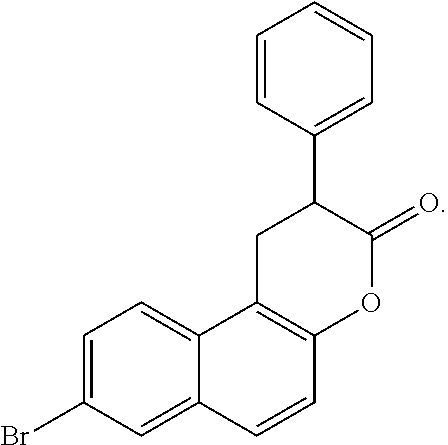
C00017
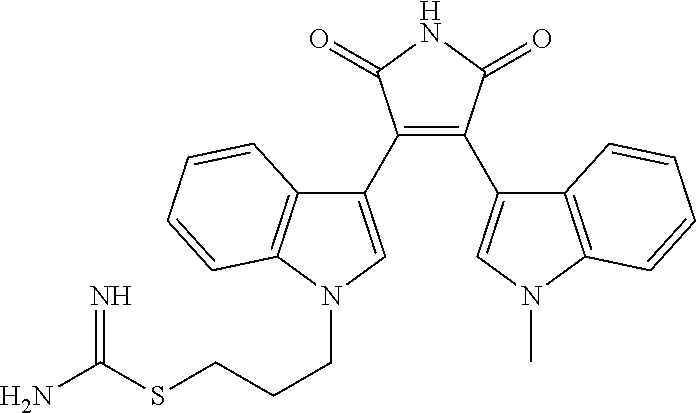
C00018
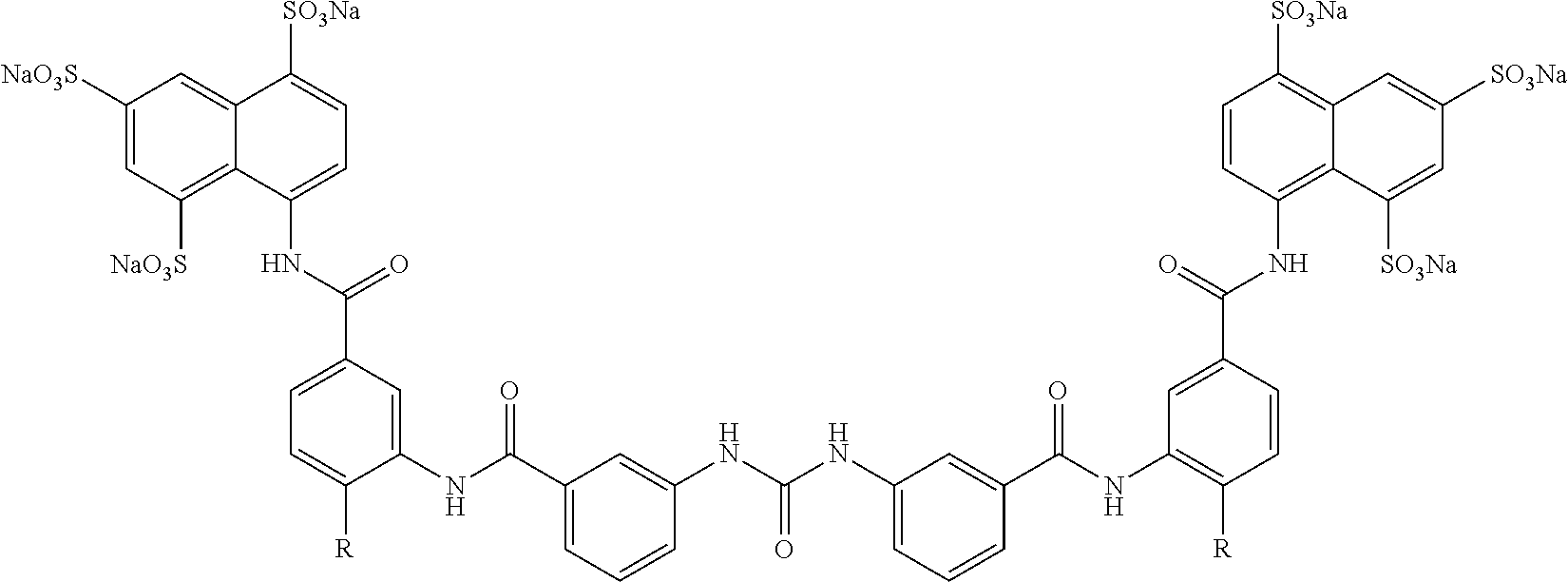
C00019

C00020

C00021
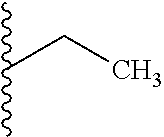
C00022
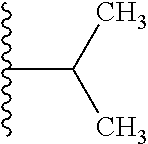
C00023

C00024
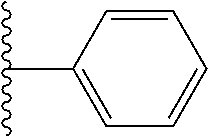
C00025
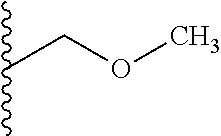
C00026

C00027
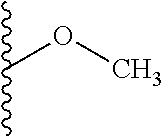
C00028

C00029
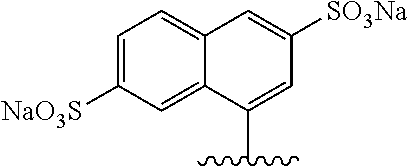
C00030

C00031

C00032

C00033
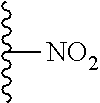
C00034

C00035

C00036

C00037

C00038
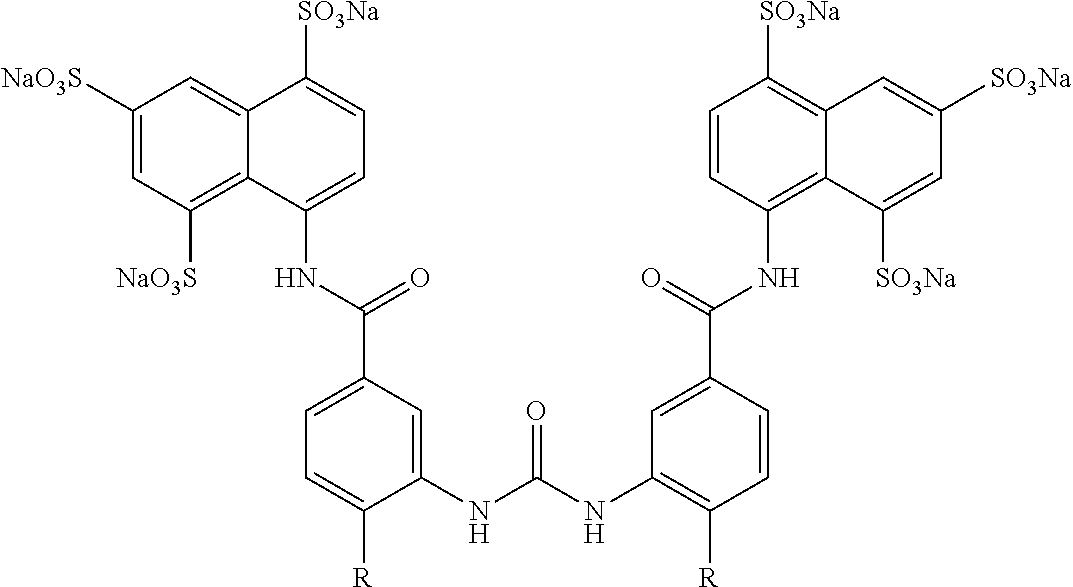
C00039

C00040

C00041

C00042

C00043
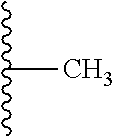
C00044

C00045
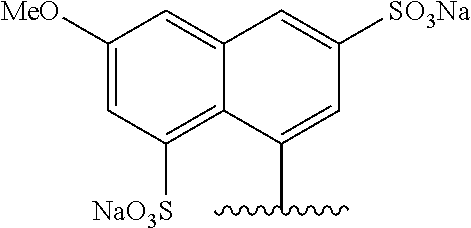
C00046

C00047

C00048
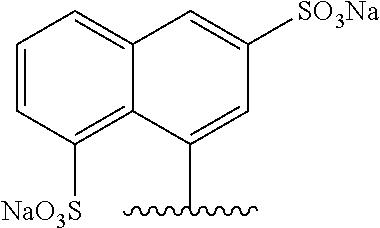
C00049

C00050
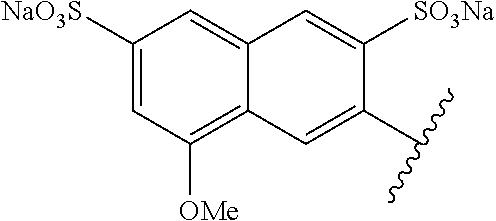
C00051

C00052
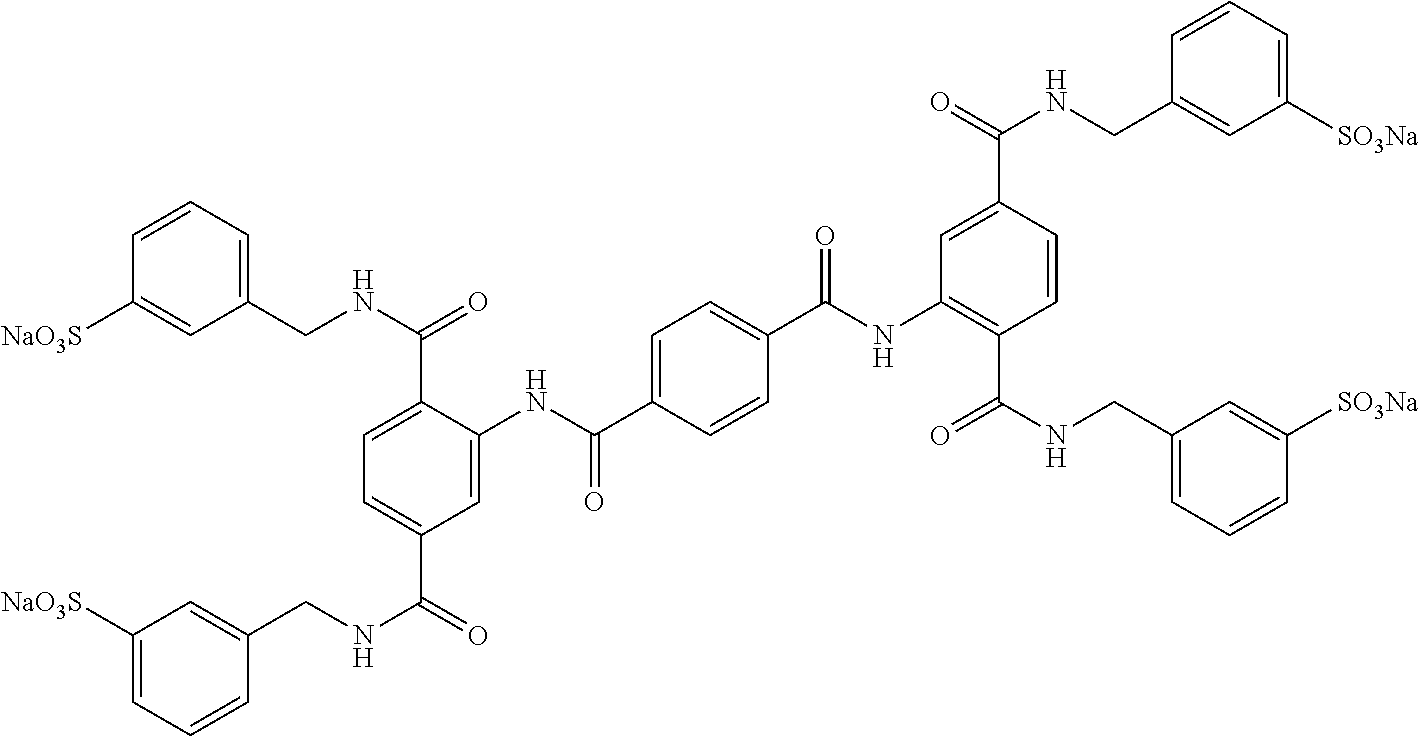
C00053

C00054

C00055
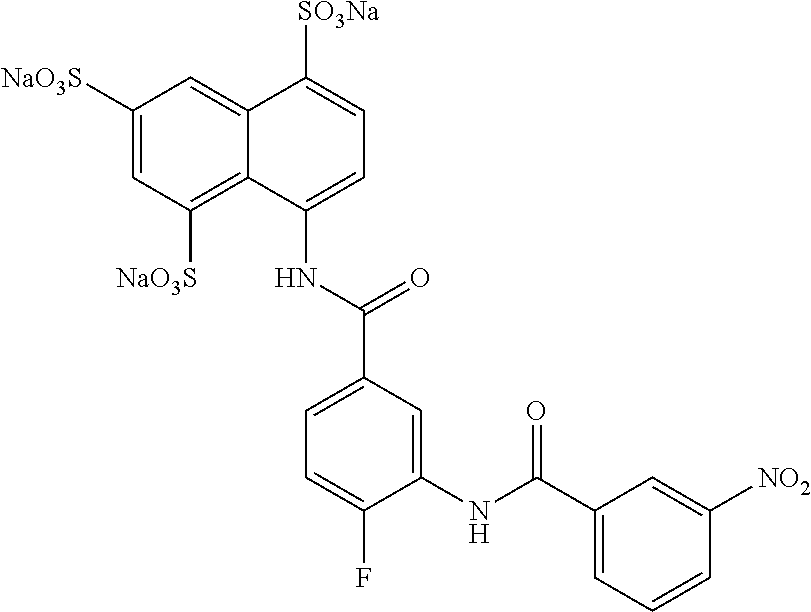
C00056

C00057

C00058

C00059
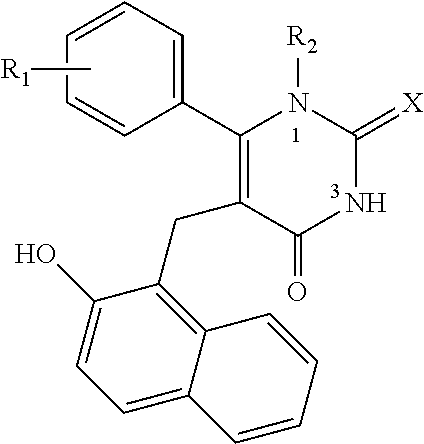
C00060
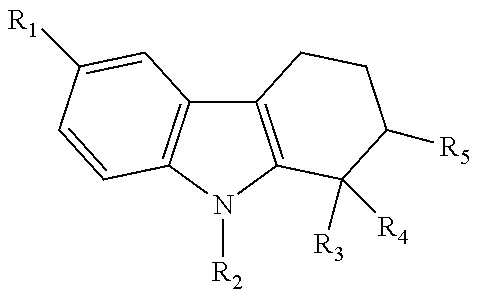
C00061
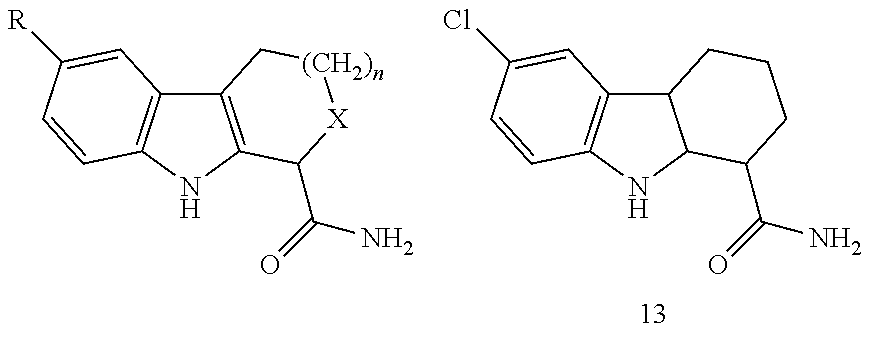
C00062
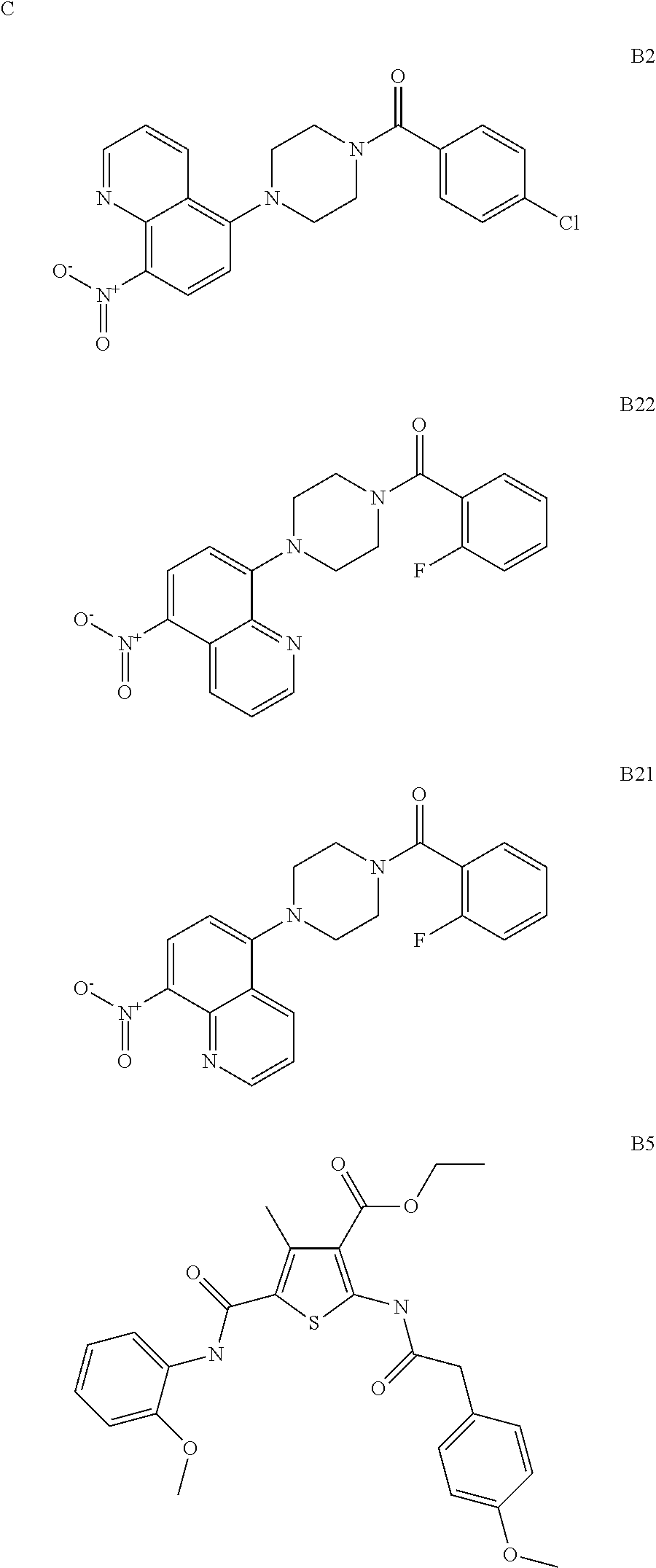
C00063

C00064

C00065
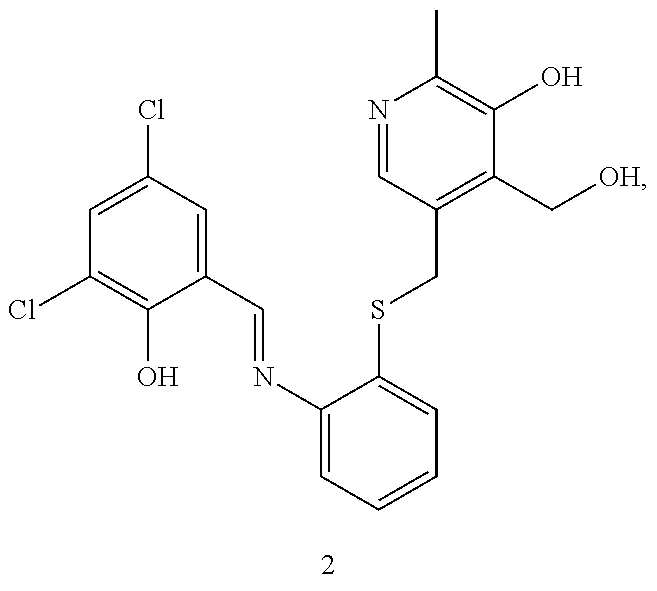
C00066

C00067

C00068

C00069

C00070

C00071

C00072

C00073
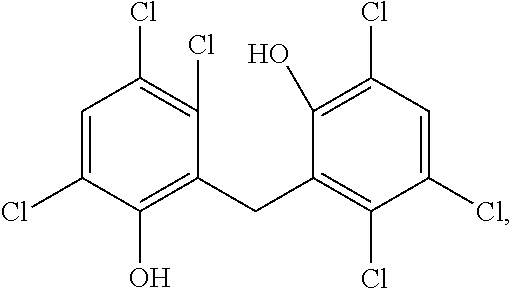
C00074
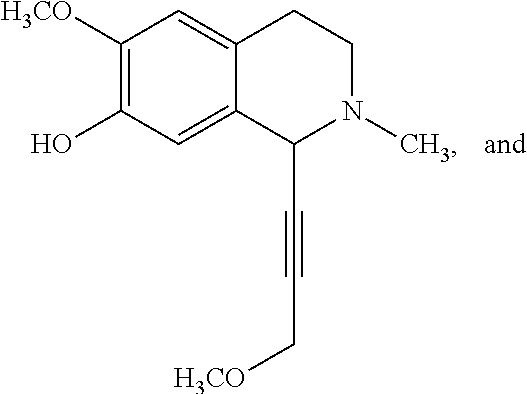
C00075

C00076
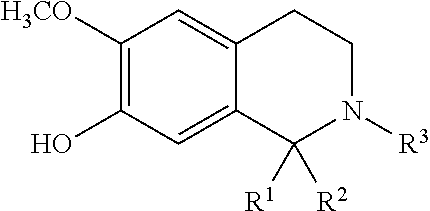
C00077

C00078
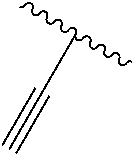
C00079

C00080

C00081
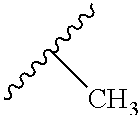
C00082
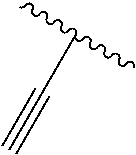
C00083

C00084
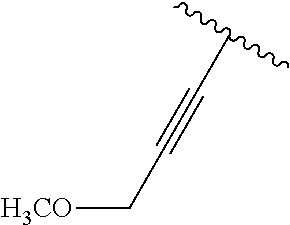
C00085
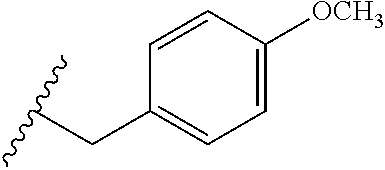
C00086

C00087

C00088

C00089
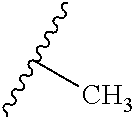
C00090

C00091
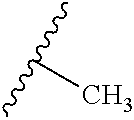
C00092

C00093

C00094

C00095
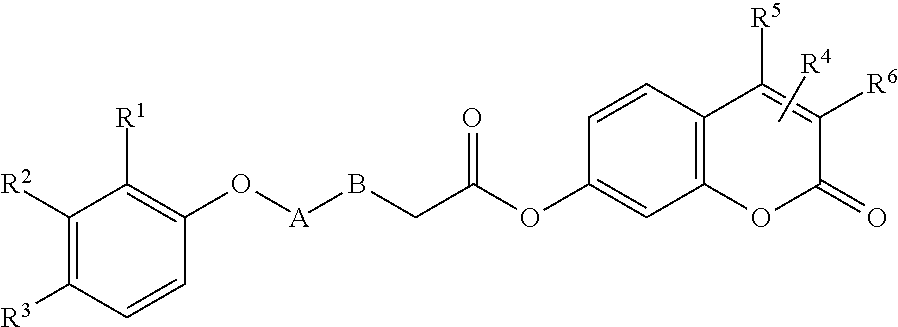
C00096
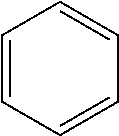
C00097
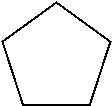
C00098

C00099

C00100
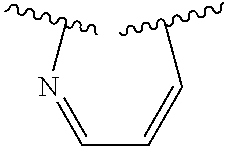
C00101

C00102

C00103

C00104

C00105

C00106

C00107
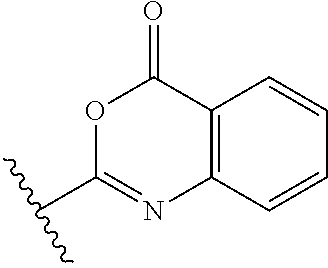
C00108
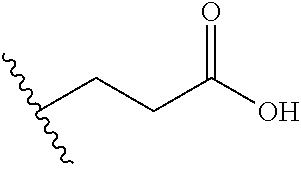
C00109
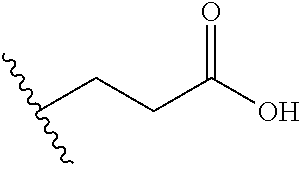
C00110

C00111

C00112

C00113
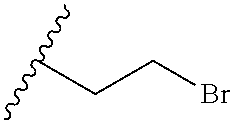
C00114

C00115
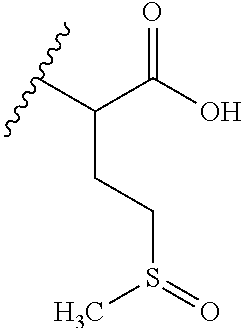
C00116

C00117

C00118

C00119
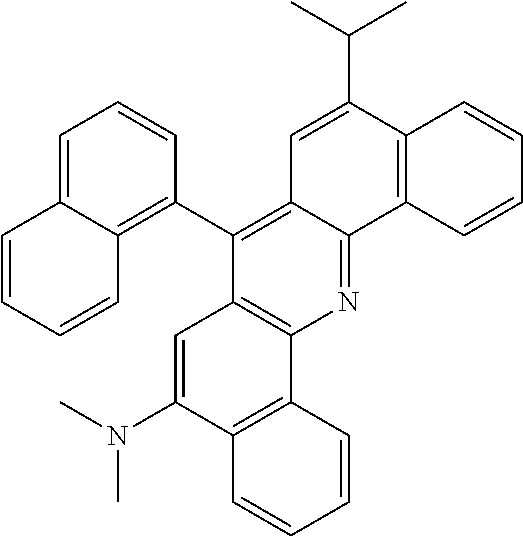
C00120

C00121
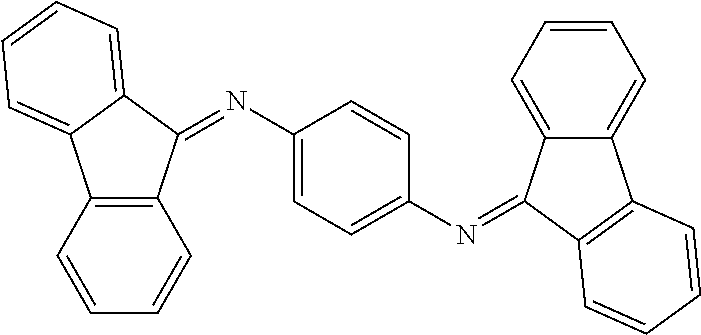
C00122

C00123

C00124

C00125
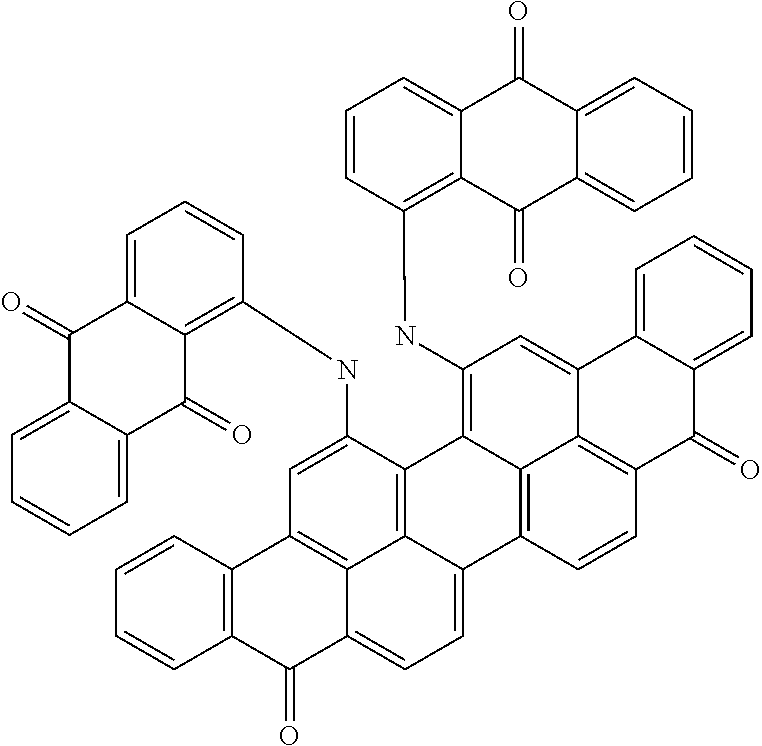
C00126

C00127

C00128
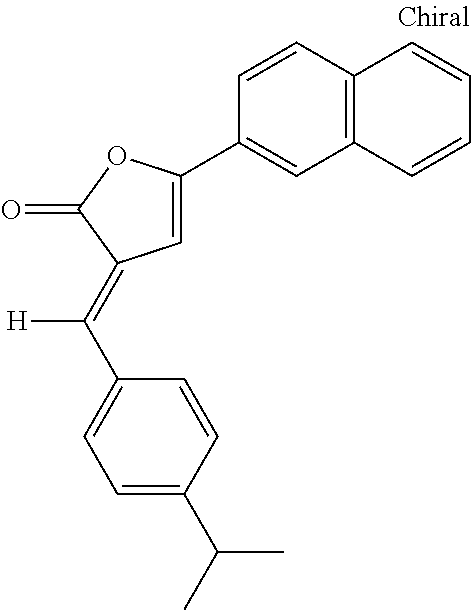
C00129

C00130

C00131

C00132

C00133
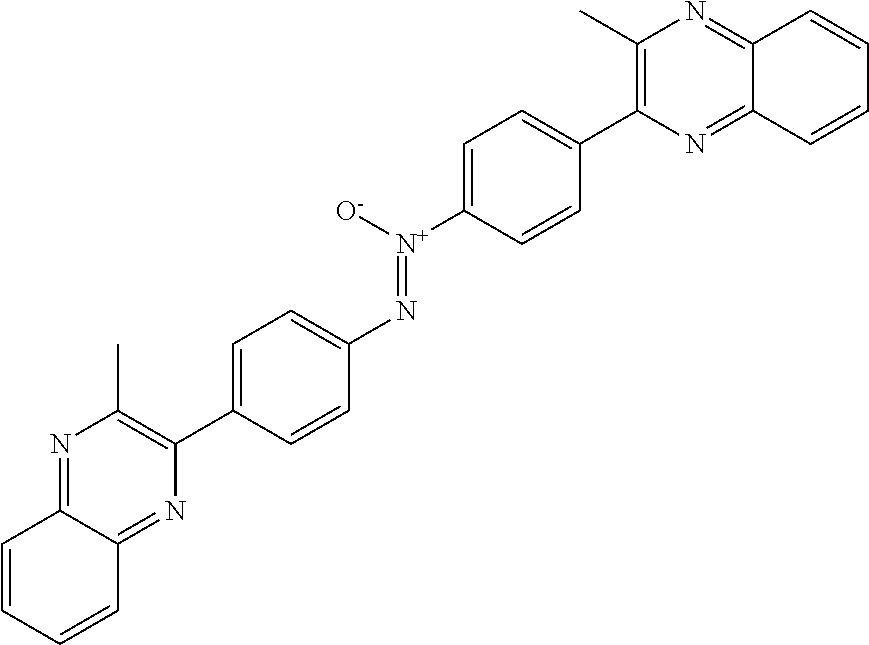
C00134

C00135

C00136

C00137
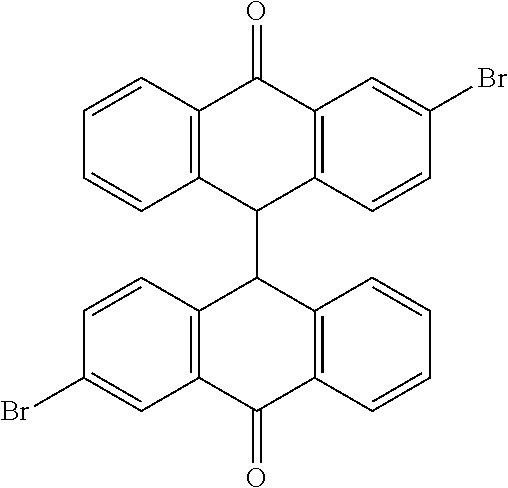
C00138

C00139
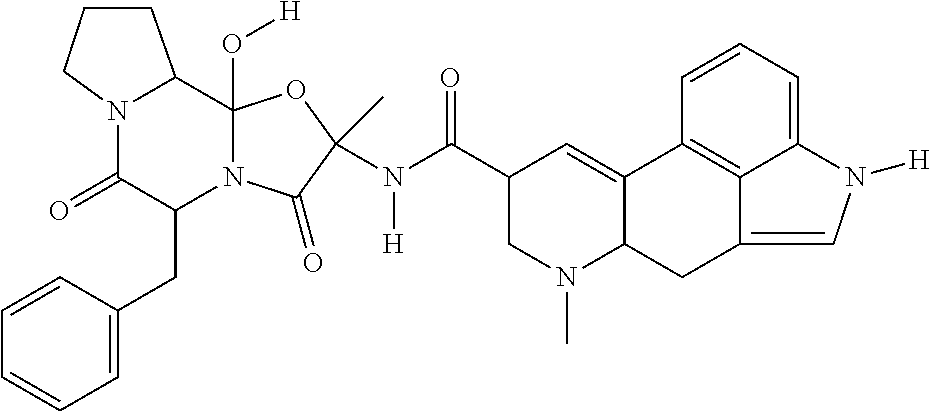
C00140
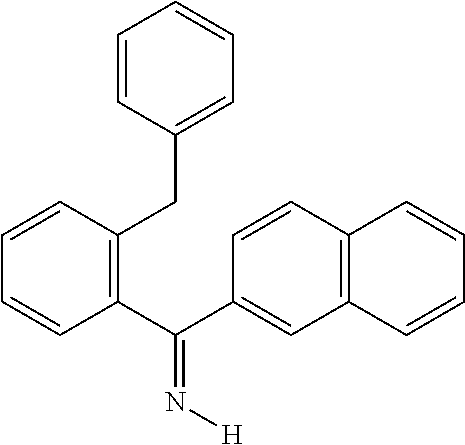
C00141
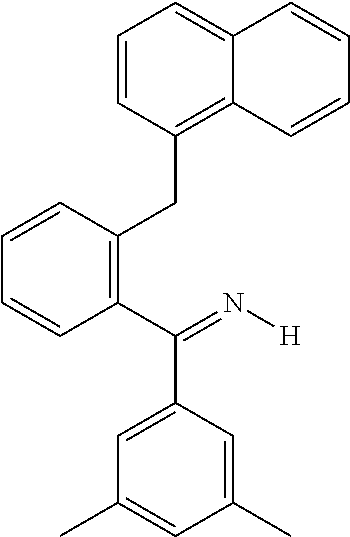
C00142

C00143

C00144
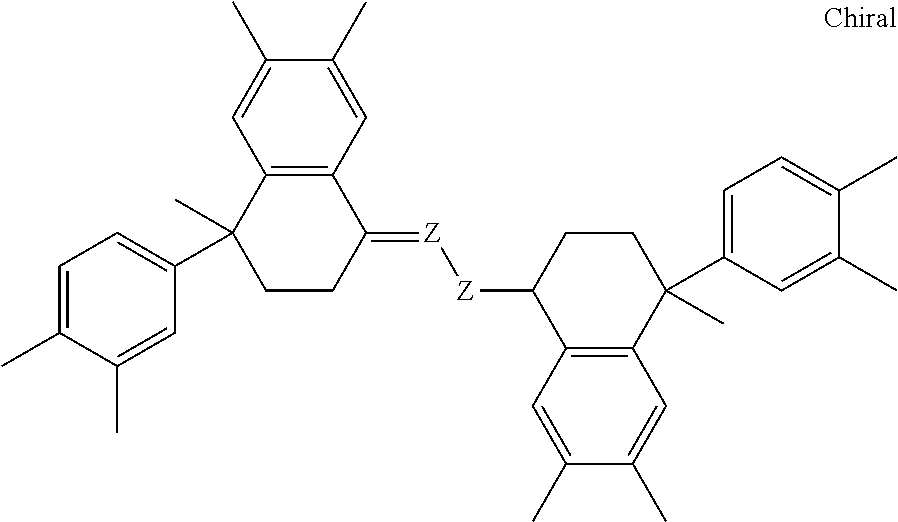
C00145
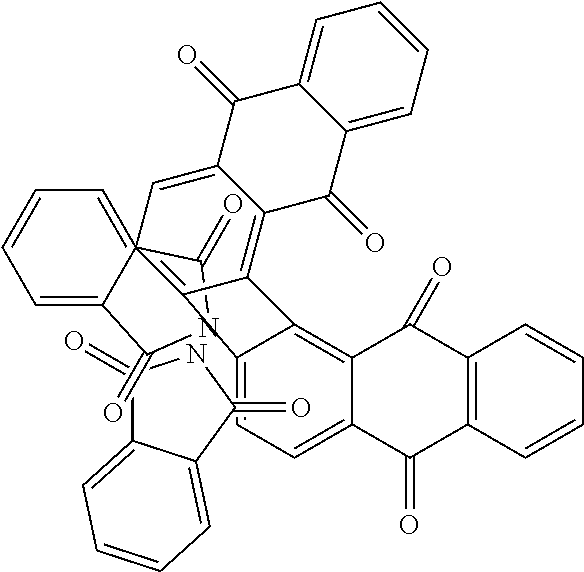
C00146
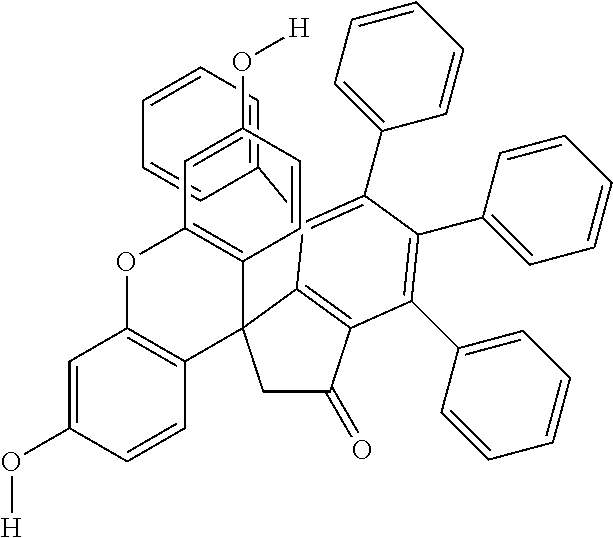
C00147

C00148
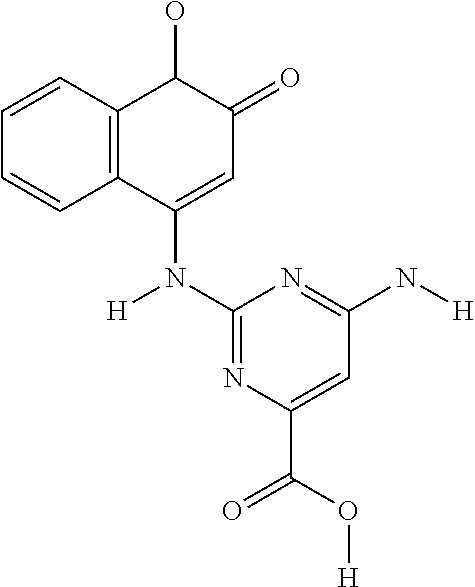
C00149
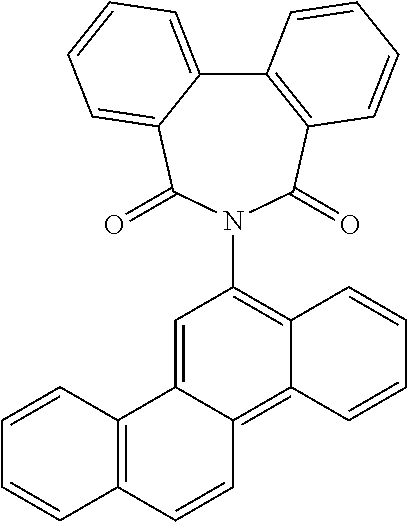
C00150

C00151
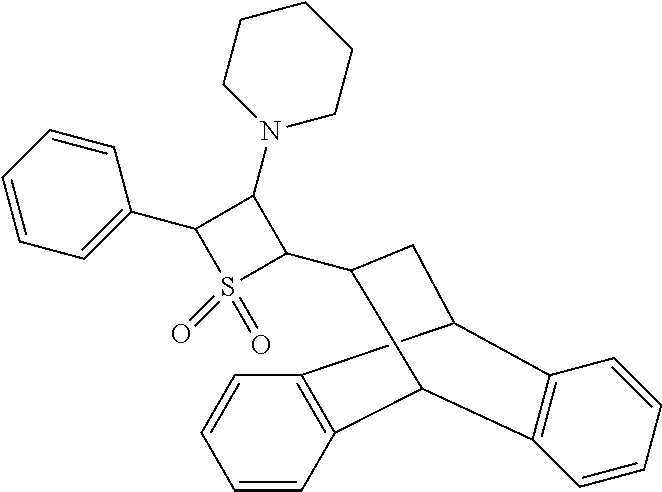
C00152

C00153

C00154
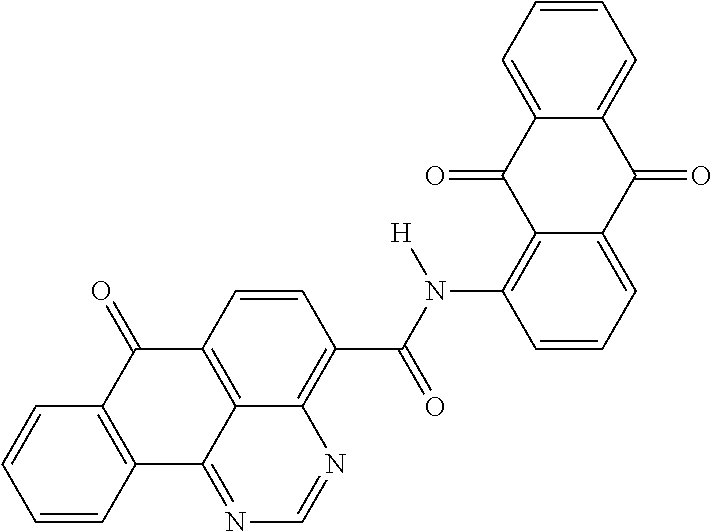
C00155

C00156

C00157
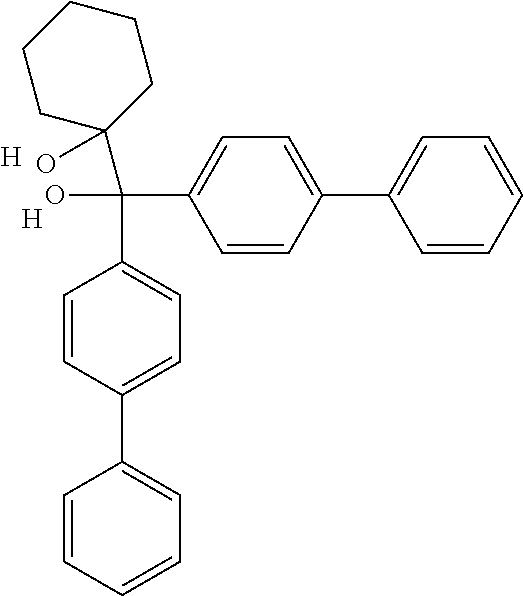
C00158

C00159
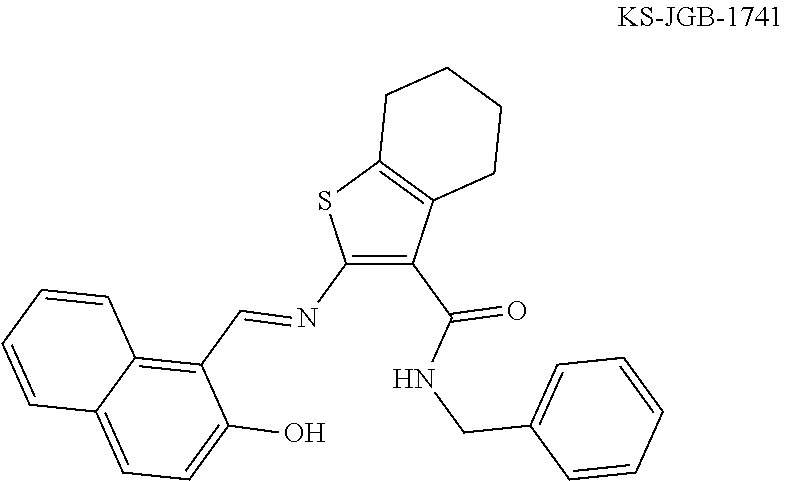
C00160

C00161
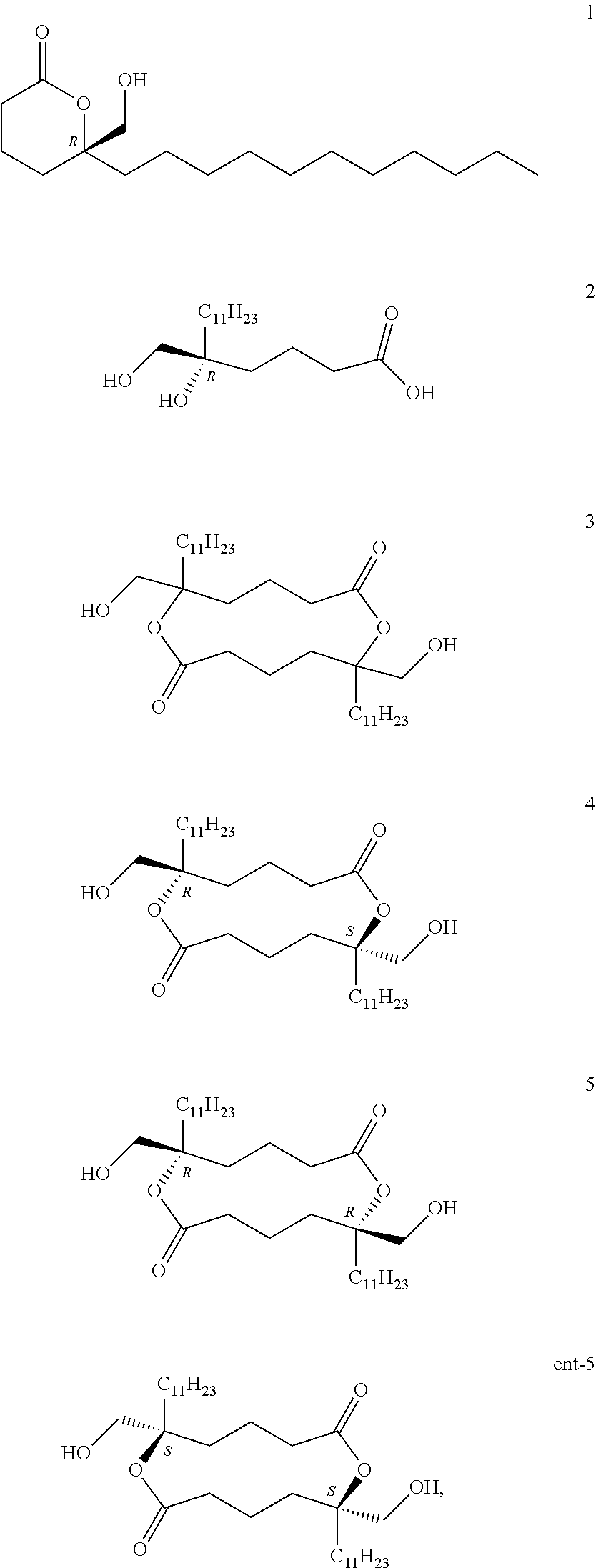
C00162
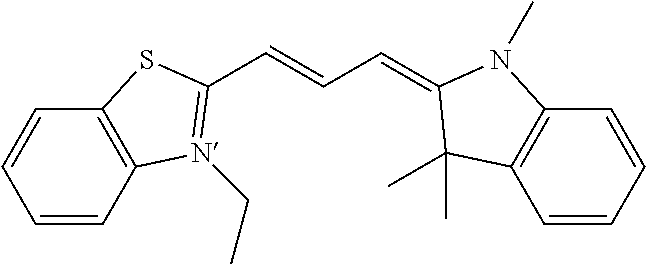
C00163
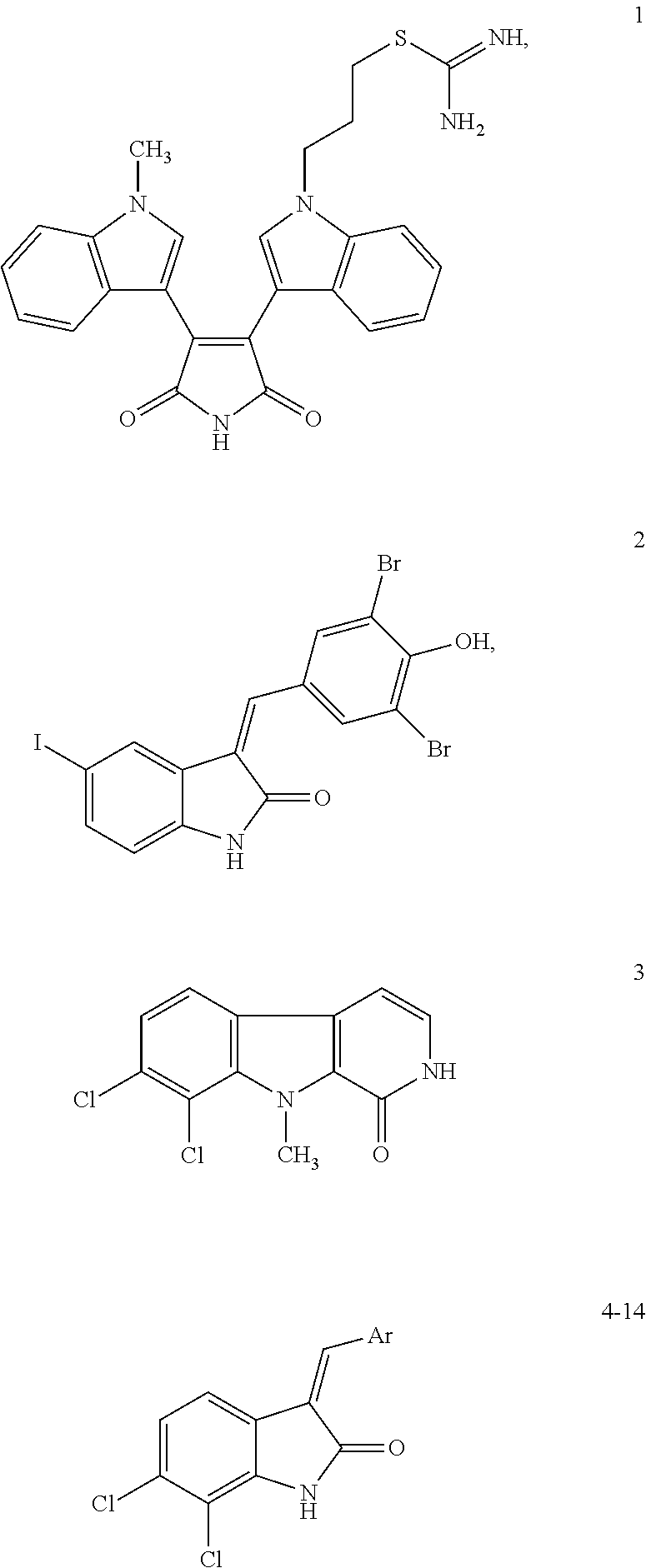
C00164
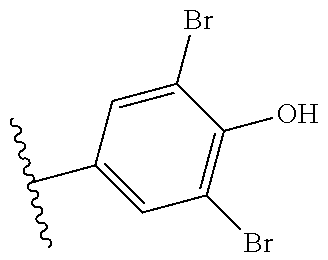
C00165
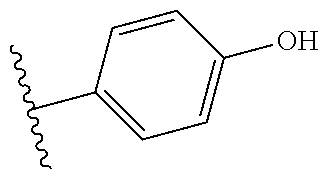
C00166

C00167
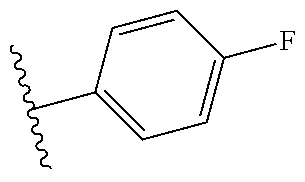
C00168
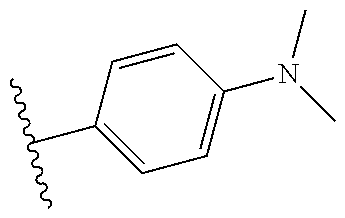
C00169

C00170
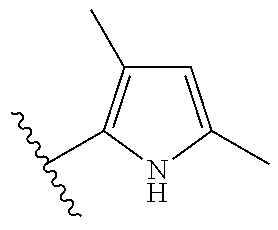
C00171
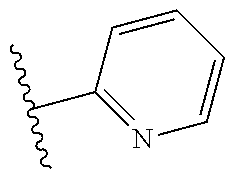
C00172
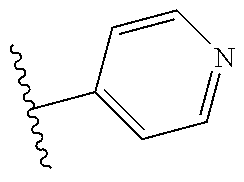
C00173
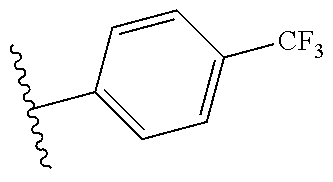
C00174
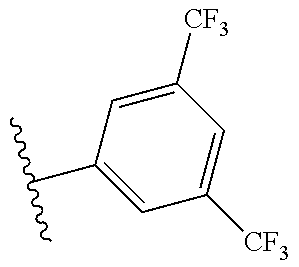
C00175

C00176

C00177
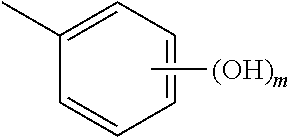
C00178

C00179

D00000
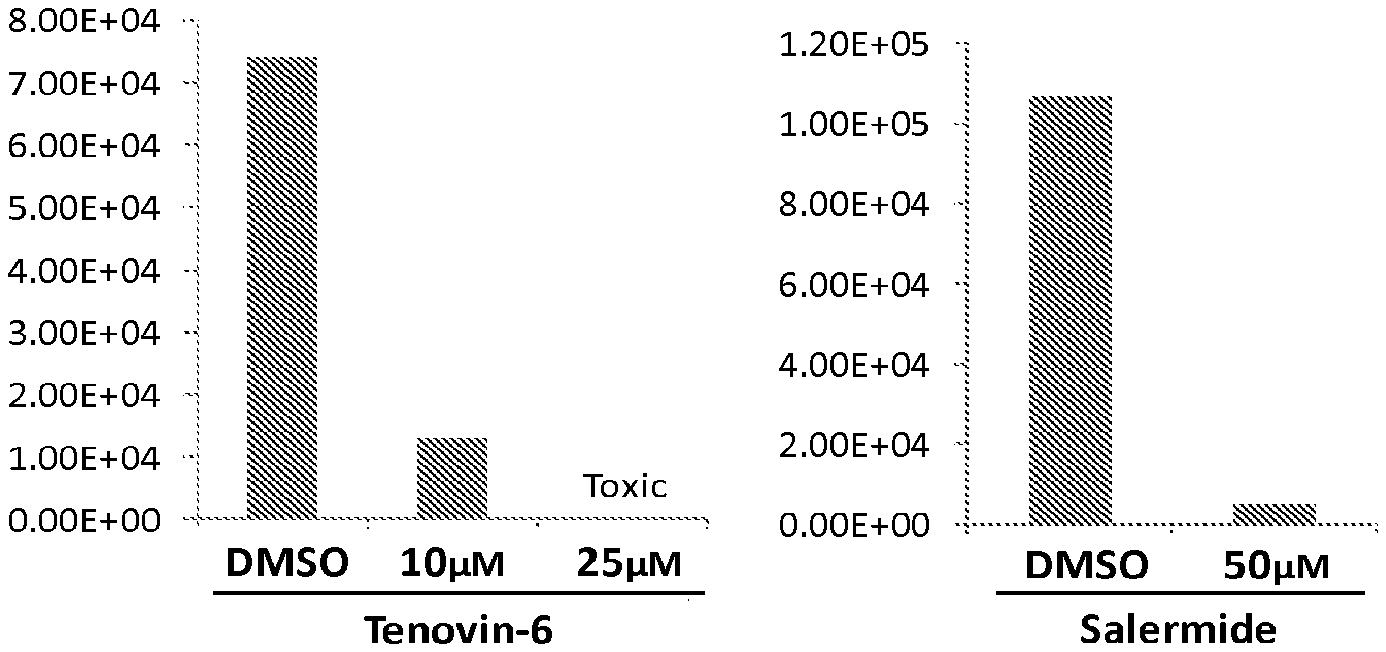
D00001

D00002

D00003
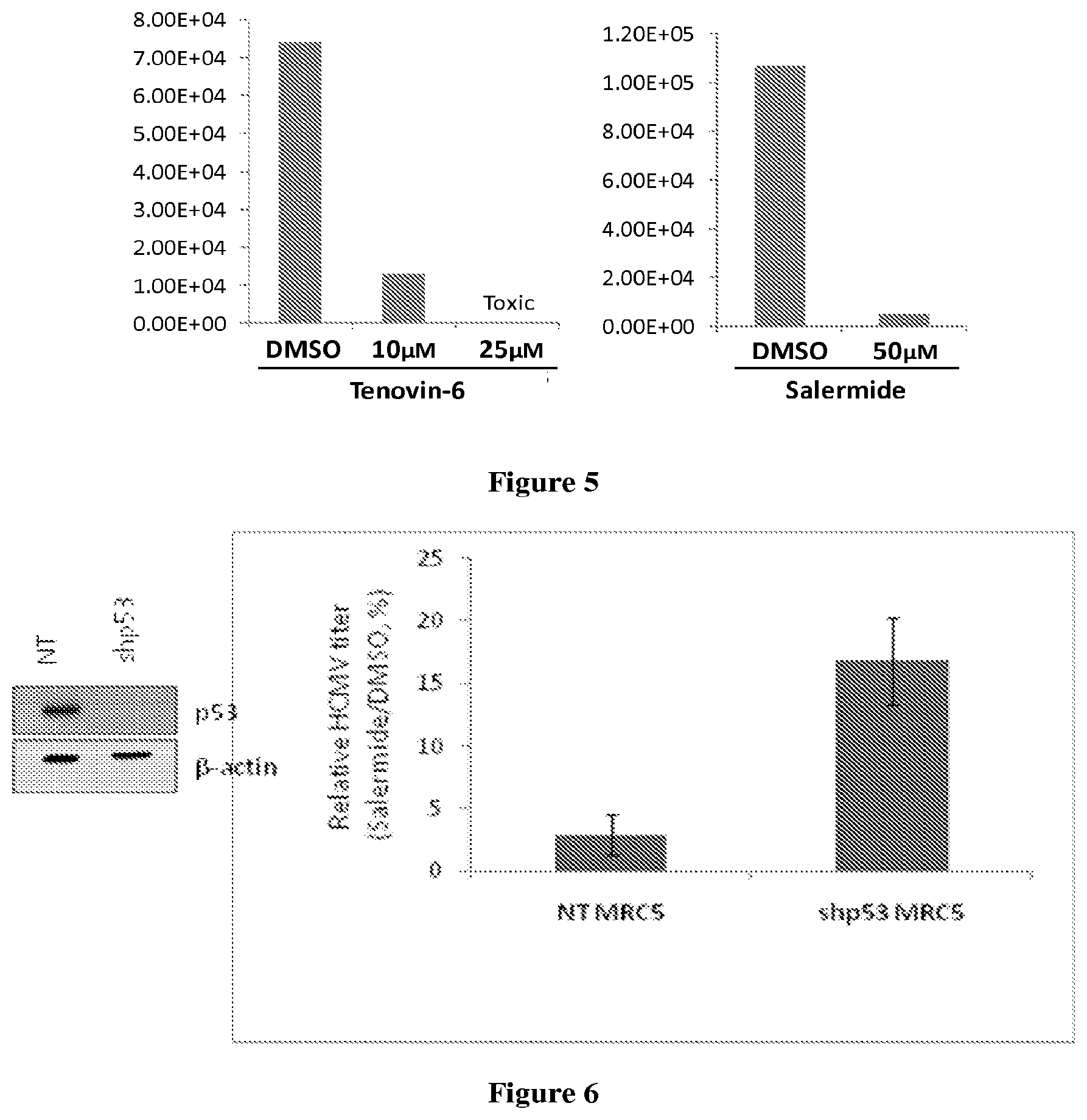
D00004

D00005

D00006
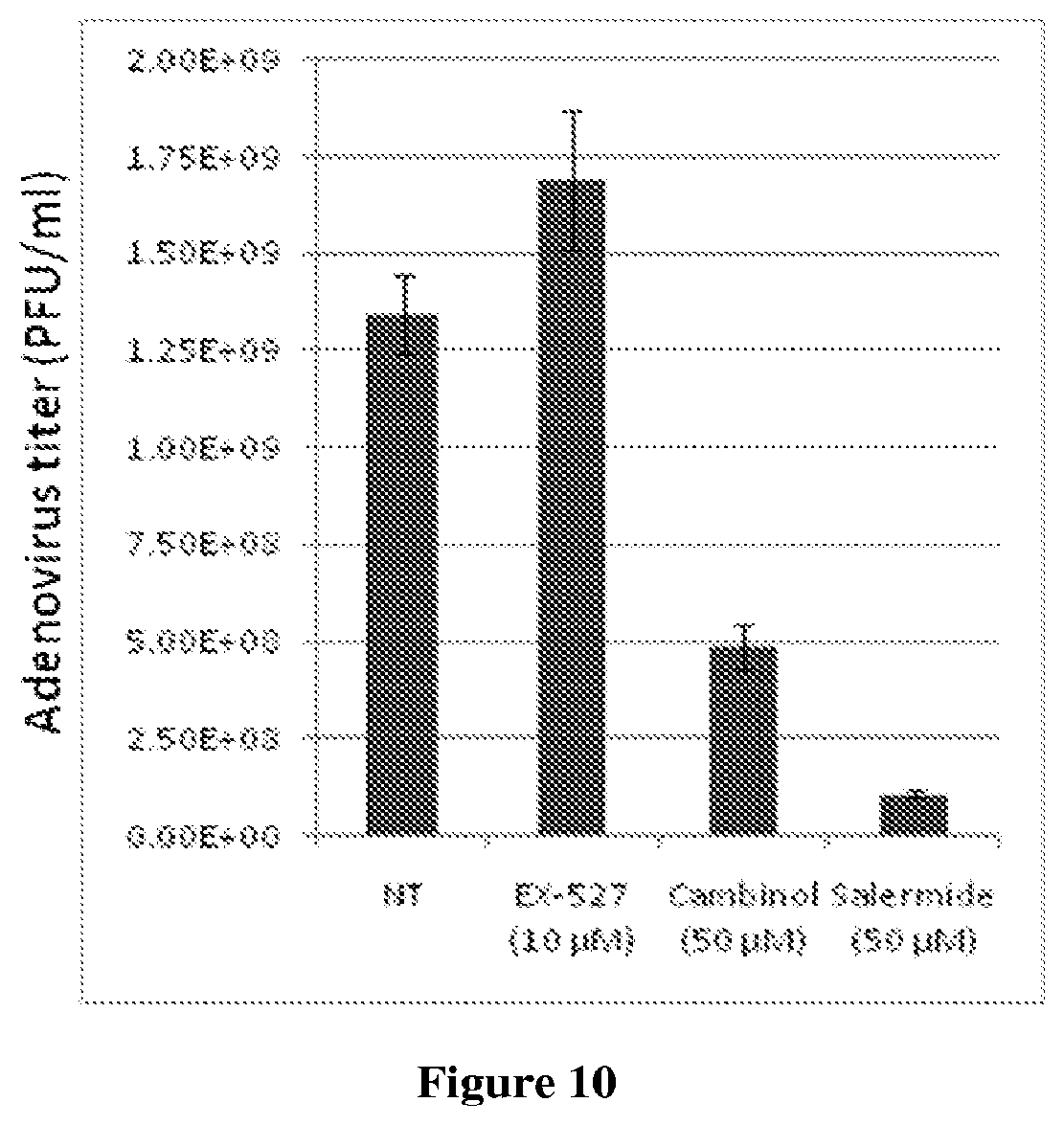
P00001

S00001
XML
uspto.report is an independent third-party trademark research tool that is not affiliated, endorsed, or sponsored by the United States Patent and Trademark Office (USPTO) or any other governmental organization. The information provided by uspto.report is based on publicly available data at the time of writing and is intended for informational purposes only.
While we strive to provide accurate and up-to-date information, we do not guarantee the accuracy, completeness, reliability, or suitability of the information displayed on this site. The use of this site is at your own risk. Any reliance you place on such information is therefore strictly at your own risk.
All official trademark data, including owner information, should be verified by visiting the official USPTO website at www.uspto.gov. This site is not intended to replace professional legal advice and should not be used as a substitute for consulting with a legal professional who is knowledgeable about trademark law.